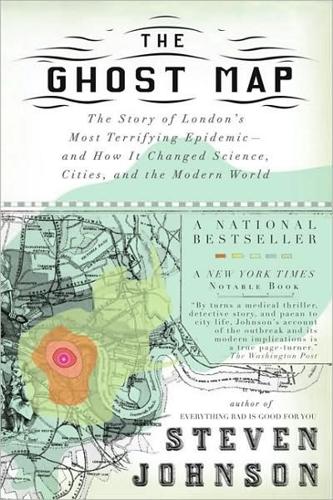
The Ghost Map: A Street, an Epidemic and the Hidden Power of Urban Networks.
by
Steven Johnson
Published 18 Oct 2006
See also Board of Health Generator, waste-fueled, 217 Genetic studies, application of, 249 Genetic tolerance for alcohol, 103–4 Genomic revolution, 249–50 GeoSentinel, 219 Germ theory of disease, 99, 211, 266n Ghost class, London, 2 Global challenges, 256 Global energy network, 93–94 Global Report on Human Settlements (UN), 232 Global warming, 237–39 Globe (London), and cholera outbreak, 160–61 Golden Square (Soho), 16, 25, 27, 159 cholera outbreak, 51, 53, 81, 83, 161–62 deaths, 57–58, 112 map, 141 Snow and, 75–77, 109 water, 30–31 See also Broad Street (Soho); Soho (London district) Google, 219–20 Gossip, and cholera outbreak, 83 Gould, John, 31 Gould, Stephen Jay, 36 Government and mapping technology, 222 and public health, 113, 120–21 and sanitation, 218 urban, and information, 224 Graham, Thomas, 145 Grand Junction Water Works, 142 Great Exhibition (1851), 12, 41–42, 267n Great Plague (1665), 15–16 “Great Stink” (Thames pollution), 205–6, 207 “Green” cities, 238 Green’s Court, 52, 81–82 Gunpowder, manufacture of, 9 Hall, Benjamin, 29, 112, 134, 145, 147, 163–66, 167, 168, 172, 179, 201 and miasma theory, 183–84, 186–87 and Snow, 204 and waterborne theory, 183 Hamburg, cholera outbreak, 215 Hard Times (Dickens), 29 Harington, John, 11 Harnold, John, 70–71 Harrison (Berwick Street surgeon), 53–54 Hassall, Arthur, 99 Health, cities and, 232 Hemenway, Toby, 233 H5N1 (avian flu virus), 243–48 Hippocrates, and cholera, 33 On Air, Water, and Places, 126–27 History epidemic disease and, 32 turning points, 162–63 London sewers as, 207 urbanization and, 232 Hogarth, William, 18 Homelessness, 3, 218 Hooke, Robert, 281n Horsleydown, cholera outbreak, 70–73 Hospitals, in urban centers, 232–33 Huggins, Edward and John, 142–43, 161 Human consciousness, 44 Human culture, and excrement eating, 40–42 Human excrement, collection of, 8–13 Human genetic change, 42 Human organization, patterns of, 93–94 Hunter-gatherer societies, 92, 103–4, 130 Hunterian School of Medicine (London), 60 Hydrogen sulfide, 129–30, 133 Hysteria, in Victorian era, 87 Iberall, Arthur, 93–94 Ideas cross-disciplinary flow of, in cities, 225–26 incorrect, 126 Immune system, 133 Index case (Broad Street), 177, 178–79, 199–200 India, cholera outbreaks, 215 Industrial Age, 18 and cholera, 33 See also Industrial Revolution Industrial Revolution, 92–93, 94–95, 271n Infant mortality rates, 232, 233 Infectious diseases, Web mapping of, 219 Influence of Snow’s map, 198–201 Information technology, 218–19, 224–25 Inner-city air, as disease source, 69–70, 74 Inner-city life, in Victorian era, 171 Insulin, 223 Intellectual progress, 135, 149 Internal-constitution theory of cholera spread, 132–33 Internet, 218–19, 236–37 John Snow sites, 259, 261 Istanbul, Sultaneyli village, 216 Jacobs, Jane, 18, 221–22 Death and Life of the Great American City, 235 James, John, 34 Jennings, George, 12 John Snow (pub), 228 Kamen, Dean, 217 Kay-Shuttleworth, James, 265n Kemp House, 227 Killingworth Colliery, 59 Knossos, composting pits, 5 Knowledge, Internet and, 218–19 Koch, Robert, 213 Koch, Tom, 196, 275n Lactose tolerance, 103–4 Lambeth water company, 105–8 Lancet, The, 46 and contagion theory, 69 editors of, 15, 168 obituary of Snow, 206 Snow and, 61, 64, 205, 213, 269n Largest cities, 215–16 Latta, Thomas, 45, 155 Lea River, 210–11 Leather-tanning process, 4, 263–64n Lewis, Sarah, 21–22, 178–79, 181, 187–88 Lewis, Thomas, 21, 31, 187 Lewis infant, 21–22, 35, 54, 178–79 Whitehead and, 199 Life expectancy, in cities, 84, 232–33, 236 Lion Brewery, 28–29, 31, 81, 142–43, 146, 153 Liszt, Franz, 18 Little Dorrit (Dickens), 29 Local knowledge, 147 Internet and, 218–19 in urban environments, 225 Locock, Dr.
…
page 58 But one Soho resident The details of John Snow’s investigation of the Broad Street outbreak are drawn primarily from his account of the outbreak and its aftermath, in his report published in the Cholera Inquiry Committee report of 1855, and in his revised monograph, On the Mode and Communication of Cholera. page 59 He would largely avoid meat Details on Snow’s life up to his cholera investigations are drawn from four primary sources: Richardson’s hagiographic “Life of John Snow,” published shortly after Snow’s death; David Shephard’s biography John Snow: Anaesthetist to a Queen and Epidemiologist to a Nation; the superb Cholera, Chloroform, and the Science of Medicine; and Ralph Frerichs’ invaluable John Snow Web archive hosted by UCLA’s School of Public Health.
…
It was the first recorded sighting of Vibrio cholerae, and Filippo Pacini published a paper that year describing his findings, under the title “Microscopical Observations and Pathological Deductions on Cholera.” But it was the wrong time for such a discovery: the germ theory of disease had not yet entered mainstream scientific thought, and cholera itself was largely assumed by the miasmatists to be some kind of atmospheric pollution, not a living creature. Pacini’s paper was ignored, and V. cholerae retreated back into the invisible kingdom of microbes for another thirty years. John Snow would go to his grave never learning that the cholera agent he had spent so many years pursuing had been identified during his lifetime. The fact that Snow had no idea what cholera looked like under the microscope didn’t stop him from doing further tests on the water.
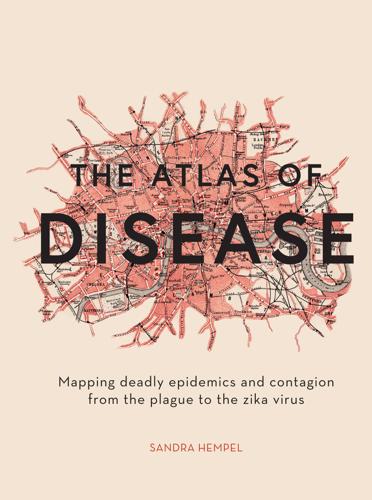
The Atlas of Disease
by
Sandra Hempel
Published 15 Sep 2018
Watercolour (by Jane Jackson), 1921/1950, after a (painting) by Ernest Muir, c. 1921’, Wellcome Collection, CC BY; 39 ‘Leprosy poster, India, 1950s’ by Hind Kusht Nivaran Sangh, Wellcome Collection, CC BY; 43 VintageMedStock/Alamy Stock Photo; 44 Scott Camazine/Alamy Stock Photo; 45 Chronicle/Alamy Stock Photo; 46 CCI Archives/Science Photo Library; 47 Australian War Memorial/Wikimedia Commons, URL: https://commons.wikimedia.org/wiki/File:HMS_Dido_(1869)_AWM_302178.jpeg; 49 ‘Four children, two with measles, in the same bed: their mother tells the district nurse that there is no risk of infection’, wood engraving by Starr Wood, 1915, Wellcome Collection, CC BY; 53 VintageMedStock/Alamy Stock Photo; 54 Gado Images/Alamy Stock Photo; 55 © Florilegius/Getty Images; 58 ‘A country vicar visiting a family where a child has been suffering from scarlet fever’, wood engraving by Claude Alin Shepperson, Wellcome Collection, CC BY; 61 Scott Camazine/Alamy Stock Photo; 62 Phanie/Alamy Stock Photo; 68 Luis Enrique Ascui/Stringer/Getty Images; 69 Iain Masterton/Alamy Stock Photo; 71 ‘Edward Jenner vaccinating patients against smallpox’ by James Gillray, Wellcome Collection, CC BY; 73 ‘Smallpox, textured illustration, Japanese manuscript, c. 1720’, Wellcome Collection, CC BY; 74 ‘Ships used as smallpox isolation hospitals’, Wellcome Collection, CC BY; 75 ‘Gloucester smallpox epidemic, 1896: a ward in the isolation hospital’, photograph by H.C.F., 1896, Wellcome Collection, CC BY; 77 ‘St Pancras Smallpox Hospital, London: housed in a tented camp at Finchley’, watercolour by Frank Collins, 1881, Wellcome Collection, CC BY; 81 ‘A health visitor holding a small child, promoting a campaign against tuberculosis and infant mortality’, colour process print by Jules Marie Auguste Leroux, Wellcome Collection, CC BY; 82 Hulton Archive/Stringer/Getty Images; 89 ‘Liverpool’s x-ray campaign against tuberculosis’, lithograph, c. 1960, Wellcome Collection, CC BY; 93 ‘John Bull defending Britain against the invasion of cholera; satirizing resistance to the Reform Bill’, coloured lithograph, c. 1832, Wellcome Collection, CC BY; 94 ‘A cholera patient experimenting with remedies’, coloured etching by Robert Cruikshank, c. 1832, Wellcome Collection, CC BY; 95 ‘Actual & supposed routes of Cholera from Hindoostan to Europe’, Wellcome Collection, CC BY; 97 ‘John Snow, 1856’, Wellcome Collection, CC BY; 98 ‘A map taken from a report by Dr. John Snow’, Wellcome Collection, CC BY; 103 ‘Soldier suffering from dysentery’, Wellcome Collection, CC BY; 106 Universal History Archive/Getty Images; 109 ‘Man suffering from typhoid’, Wellcome Collection, CC BY; 110 Shutterstock; 111 ‘The angel of death (a winged skeletal creature) drops some deadly substances into a river near a town; representing typhoid’, watercolour, 1912, by Richard Tennant Cooper, Wellcome Collection, CC BY; 112 Science & Society Picture Library/Getty Images; 113 Mary Evans Picture Library; 117 ‘Anti-typhoid vaccination in World War I’, photograph, Wellcome Collection, CC BY; 121 ‘Lady suffering from malaria’, Abb 7, page 82, Wellcome Collection, CC BY; 122 ‘Illustrations of parasites that cause malaria, 1901’, by Giovanni Battista Grassi, Wellcome Collection, CC BY; 124 ‘Map of the world, showing positions of malaria’, Wellcome Collection, CC BY; 125 ‘The malaria mosquito forming the eye-sockets of a skull, rep’, by Abram Games, Wellcome Collection, CC BY; 126 ‘World Health Organisation Interim Committee on malaria’, photograph, 1947, Wellcome Collection, CC BY; 133 ‘A physician wearing a seventeenth-century plague preventive costume’, watercolour, Wellcome Collection, CC BY; 134 ‘The dance of death’, lithograph after A.
…
After the Soho epidemic, in an effort to prove his theory, Snow took to the streets, knocking on doors, asking how many people had died in each house. He then plotted his data onto a street plan and that now iconic map revealed that the vast majority of deaths were clustered around the pump well in Broad Street: at every point where it was more convenient to go to another pump, the fatalities tailed off. John Snow’s iconic map of the 1854 cholera epidemic around Broad Street, Soho. For his work in Soho and also for a similar, larger piece of research in south London, John Snow is known as the father of epidemiology, the branch of medical science that studies the incidence, distribution and determinants of disease.
…
And we also see the terrible consequences of epidemics at particular times and in particular places, not only in terms of individual suffering, but also in their social and economic effects, particularly on some of the most deprived groups of people. Since the mid-nineteenth century, maps have played a vital role in helping us to unravel the mysteries of how diseases spread. The experts have used them to work out how best to prevent, or at least to contain, future outbreaks. One of the first and best-known examples of disease mapping was the work of the physician Dr John Snow during a virulent outbreak of cholera in London’s Soho in 1854. Around 600 people died, 200 of them during the course of one night. At that time no one understood how cholera was transmitted, which meant that doctors could not begin to fathom how to stop it.
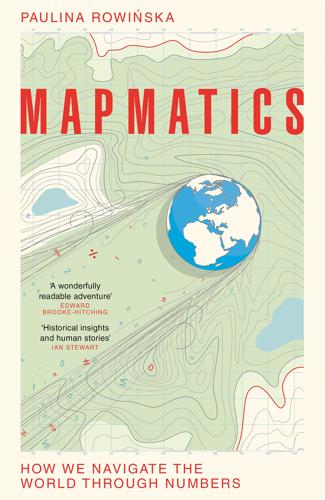
Mapmatics: How We Navigate the World Through Numbers
by
Paulina Rowinska
Published 5 Jun 2024
the Broad Street well water: Johnson, Ghost Map, 160. Soon, Soho was cholera-free: Underwood, ‘History of Cholera’. trying to understand what had happened: Johnson, Ghost Map, 163. where the contaminant of the Broad Street pump came from: Johnson, Ghost Map, 172–81. gotten the symptoms around 28 August: Johnson, Ghost Map, 177. in the original location: ‘Welcome to the John Snow Society’, The John Snow Society, London, 5 December 2022, https://johnsnowsociety.org/#The-Society. among his contemporaries and even today: Tom Koch and Kenneth Denike, ‘Crediting His Critics’ Concerns: Remaking John Snow’s Map of Broad Street Cholera, 1854’, Social Science and Medicine 69, no. 8 (October 2009): 1246–51, https://doi.org/10.1016/j.socscimed.2009.07.046.
…
In other words, people similar in most aspects were assigned to one or other of the two water companies ‘without their choice, and, in most cases, without their knowledge’. If Snow managed to prove that his hypothesis held in this overlapping area, he’d have strong evidence that cholera spread through contaminated water. So, when cholera struck again in July 1854, he started knocking on some doors. FIGURE 7.2: The famous map of cholera deaths (black squares) during the 1854 London outbreak, based on John Snow’s data. The pump on Broad Street (circled) turned out to be the source of contaminated water. Armed with the addresses of cholera victims from the General Register Office, Snow went door to door, asking who supplied water in the house of each of the deceased – and he learned next to nothing.
…
advice on fighting school segregation: ‘European Guidelines’, European Cities against School Segregation (ECASS), n.d., accessed 1 June 2023, https://www.ecass.eu/european-guidelines/. 7. Found In 1831, cholera arrived in England: Max Roser et al., ‘Eradication of Diseases’, Our World in Data, June 2014, rev. October 2018, https://ourworldindata.org/eradication-of-diseases. it leads to death, often within hours: Miriam Reid, ‘John Snow Hunts the Blue Death’, Distillations, Science History Institute, Philadelphia, 8 March 2022, https://www.sciencehistory.org/distillations/john-snow-hunts-the-blue-death. a mining village close to Newcastle: Reid, ‘John Snow Hunts’. instead of ingesting poison: John Snow, On the Mode of Communication of Cholera (London: John Churchill, 1849), 6–7.

The Survival of the City: Human Flourishing in an Age of Isolation
by
Edward Glaeser
and
David Cutler
Published 14 Sep 2021
can cost over $1,000: Ashraf, Glaeser, and Ponzetto, “Infrastructure, Incentives, and Institutions.” less than $2,000 per year: World Bank, “GDP per Capita (Current US$)—Zambia.” second cholera epidemic: Rosenberg, “The Cholera Epidemic of 1832 in New York City.” A third cholera wave: “Asiatic Cholera Pandemic of 1846–63,” Fielding School of Public Health, UCLA. While the second epidemic: Summers, “Broad Street Pump Outbreak.” Dr. John Snow: Tuthill, “John Snow and the Broad Street Pandemic: On the Trail of an Epidemic.” 5,000 New Yorkers: Wilford, “How Epidemics Helped Shape the Modern Metropolis.” 2,300 free hydrants: Ashraf, Glaeser, and Ponzetto.
…
For twenty-five years after the Croton Aqueduct was built, New York City also faced a last-mile problem, and its citizens continued to die from cholera. The second cholera epidemic continued to kill for many years. A third cholera wave emerged, again from India, around 1846, and spread throughout the world. While the second epidemic struck Great Britain relatively lightly, the third killed 10,000 in London alone during the years 1853 and 1854. Dr. John Snow was working with the poor in Soho during that outbreak when he solved cholera’s mystery. He noticed that the cases were all clustered around a particular water pump. He noted that the brewery workers who didn’t drink the water weren’t getting sick.
…
The Great Stink of London occurred in 1858 during “one of the hottest summers on record, with the Thames emitting a sickening smell as a result of the sewage of over two million inhabitants being discharged into the river.” London’s sanitary master builder, Joseph Bazalgette, was already ensconced as chief engineer to the city’s Metropolitan Board of Works during that hot, smelly summer. Bazalgette became chief engineer for the city’s sewer commission in 1852, two years before Dr. John Snow unlocked the secret of cholera in Soho. By 1858, Bazalgette had a plan, but not the money, to fix London’s waste problem. The Great Stink brought London’s filth right under the noses of the great and good. Benjamin Disraeli, chancellor of the exchequer, politician of genius, orator of renown, took up the cause of the Thames and the sewer.

Data Action: Using Data for Public Good
by
Sarah Williams
Published 14 Sep 2020
Farr, who was the equivalent of a present day chief technology officer, went on to develop the statistical evidence for Snow's maps, showing that his work was neither an anomaly nor visual artifice. 1.6 John Snow's cholera map (1854) shows the high numbers of deaths from cholera around the Broad Street water pump. The map is often considered an example of data visualization because it included bar charts to pinpoint the number of deaths at a particular address. Source: John Snow, On the Mode of Communication of Cholera (London: John Churchill, 1855). 1.7 Zoom of the bar charts used on John Snow's cholera map (1854), shown in figure 1.6. Farr's tenure (1851–1871) overseeing Britain's censuses and his role as Britain's chief statistician might be considered the first open data gesture: it marks an important, early moment in the growth of Britain's open data movement.
…
.… 1.2 Incan fiber recording device (khipu) found in Peru, c. 1400–1532. Cords, kn… 1.3 The map shows congressional seats that might be lost or won if an “only cit… 1.4 In 2017 a panel of federal judges ruled that the 35th Congressional distric… 1.5 Sanitary map of the Town of Leeds from the report of Sanitary Condition of … 1.6 John Snow's cholera map (1854) shows the high numbers of deaths from choler… 1.7 Zoom of the bar charts used on John Snow's cholera map (1854), shown in fig… 1.8 This Sanborn map from 1888 shows a block in a manufacturing district in Bos… 1.9 A typical key to a Sanborn map. The amount of detail is more than cities co… 1.10a and 1.10b Charles Booth's Social Demographic Maps of London.
…
Chadwick developed the Report on the Sanitary Condition of the Labouring Population (1842), which graphically described the physical and social concerns that might be contributing to outbreaks of cholera (figure 1.5). The compelling findings and the ease with which the data was communicated through maps generated debate that is said to have helped lead to the passage of Britain's Public Health Act in 1848.29 1.5 Sanitary map of the Town of Leeds from the report of Sanitary Condition of the Labouring Population of Great Britain (1842). Source: “1842 Sanitary Report,” https://www.parliament.uk/about/living-heritage/transformingsociety/livinglearning/coll-9-health1/health-02/1842-sanitary-report-leeds/. John Snow developed his now famous map (figures 1.6 and 1.7) of the Broad Street Pump (1855), which linked deaths from cholera to the contaminated pump water.
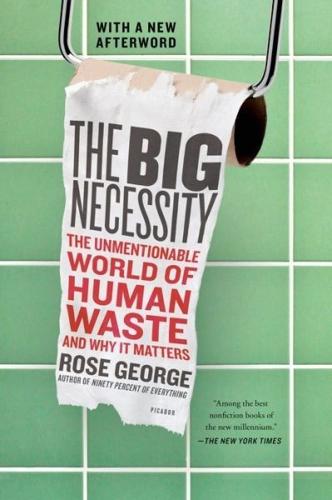
The Big Necessity: The Unmentionable World of Human Waste and Why It Matters
by
Rose George
Published 13 Oct 2008
A government that provides adequate sanitation saves money on hospital visits avoided, and does not lose labor days to dysentery or workers to cholera. Where good sanitation exists, people are wealthier, healthier, and cleaner. When sanitarians talk about history, their time line usually begins on a Friday morning in 1854, when Dr. John Snow, a doctor in London’s Soho, removed the handle from a water pump in Broad Street because he was the first to understand that cholera was traveling in excrement that got into the water supply and the awful consequences of this fact (in 1849, cholera killed over 50,000 people nationwide). Sewers followed; flush toilets flourished.
…
Jenkins and Steven Sugden, “Rethinking Sanitation: Lessons and Innovation for Sustainability and Success in the New Millennium,” Human Development Report Office Occasional Paper No. 27 (New York: United Nations Development Programme, 2006), p. 25. U.S. patent 6,242,489 Available at http://www.uspto.gov/patft/. Or as a taggant The Sunshine Project, Backgrounder Series #8, July 2001, http://www.sunshine-project.org/publications/bk/bk8en.html. John Snow never patented Peter Vinten-Johansen, Cholera, Chloroform and the Science of Medicine: A Life of John Snow (New York: Oxford University Press, 2003), p. 113. If toilets were like mobile phones Marion W. Jenkins and Steven Sugden, “Rethinking Sanitation—Lessons and Innovation for Sustainability and Success in the New Millennium,” Human Development Report Sanitation Thematic Paper 2006, p. 10.
…
He won’t need to do them again, because the point of the Gulper is that it can be copied. I see this attitude often in sanitarians. Dr. Pathak of Sulabh; Joe Madiath of Gram Vikas; the two Steves. None has applied for patents. None wants to remove his useful ideas into expensive inaccessibility. This generosity has a fine historical precedent: Dr. John Snow, the great Victorian doctor who identified the source of cholera, never patented any of his medical advances despite being a good enough ether practitioner to be requested by Queen Victoria when she gave birth. Patenting is daft, according to the two Steves. It defeats the purpose. “The idea,” says Sugden, “is to develop something a small-scale sector can afford and adopt.
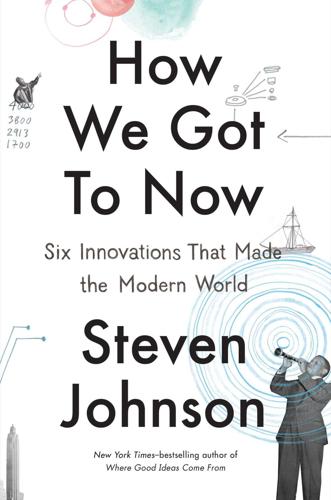
How We Got to Now: Six Innovations That Made the Modern World
by
Steven Johnson
Published 28 Sep 2014
Advances of public infrastructure meant that people were much more likely to have running water in their homes to fill their bathtubs; that the water was cleaner than it had been a few decades earlier; and, most important, that the germ theory of disease had gone from fringe idea to scientific consensus. This new paradigm had been achieved through two parallel investigations. First, there was the epidemiological detective work of John Snow in London, who first proved that cholera was caused by contaminated water and not miasmatic smells, by mapping the deaths of a Soho epidemic. Snow never managed to see the bacteria that caused cholera directly; the technology of microscopy at the time made it almost impossible to see organisms (Snow called them “animalcules”) that were so small. But he was able to detect the organisms indirectly, in the patterns of death on the streets of London.
…
After his untimely death in 1858, The Lancet ran a terse obituary that made no reference whatsoever to his groundbreaking epidemiological work. In 2014, the publication ran a somewhat belated “correction” to the obit, detailing the London doctor’s seminal contributions to public health. John Snow’s cholera map of Soho The modern synthesis that would come to replace the miasma hypothesis—that diseases such as cholera and typhoid are caused not by smells but by invisible organisms that thrive in contaminated water—was ultimately dependent, once again, on an innovation in glass. The German lens crafters Zeiss Optical Works began producing new microscopes in the early 1870s—devices that for the first time had been constructed around mathematical formulas that described the behavior of light.
…
These new lenses enabled the microbiological work of scientists such as Robert Koch, one of the first scientists to identify the cholera bacterium. (After receiving the Nobel Prize for his work in 1905, Koch wrote to Carl Zeiss, “A large part of my success I owe to your excellent microscopes.”) With his great rival Louis Pasteur, Koch and his microscopes helped develop and evangelize the germ theory of disease. From a technological standpoint, the great nineteenth-century breakthrough in public health—the knowledge that invisible germs can kill—was a kind of team effort between maps and microscopes. Today, Koch is rightly celebrated for the numerous microorganisms that he identified through those Zeiss lenses.
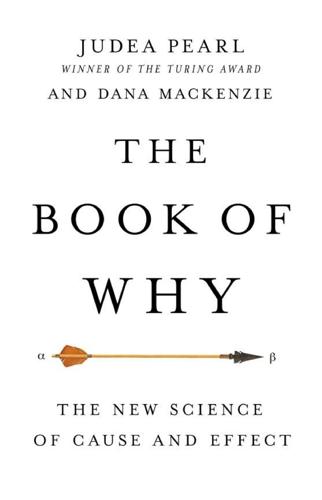
The Book of Why: The New Science of Cause and Effect
by
Judea Pearl
and
Dana Mackenzie
Published 1 Mar 2018
In the mid-1700s, James Lind had discovered that citrus fruits could prevent scurvy, and in the mid-1800s, John Snow had figured out that water contaminated with fecal matter caused cholera. (Later research identified a more specific causative agent in each case: vitamin C deficiency for scurvy, the cholera bacillus for cholera.) These brilliant pieces of detective work had in common a fortunate one-to-one relation between cause and effect. The cholera bacillus is the only cause of cholera; or as we would say today, it is both necessary and sufficient. If you aren’t exposed to it, you won’t get the disease.
…
The prevailing wisdom held that a “miasma” of unhealthy air caused cholera, a theory seemingly supported by the fact that the epidemic hit harder in the poorer sections of London, where sanitation was worse. Dr. John Snow, a physician who had taken care of cholera victims for more than twenty years, was always skeptical of the miasma theory. He argued, sensibly, that since the symptoms manifested themselves in the intestinal tract, the body must first come into contact with the pathogen there. But because he couldn’t see the culprit, he had no way to prove this—until the epidemic of 1854. The John Snow story has two chapters, one much more famous than the other. In what we could call the “Hollywood” version, he painstakingly goes from house to house, recording where victims of cholera died, and notices a cluster of dozens of victims near a pump in Broad Street.
…
Putting all this evidence together, Snow asks the local authorities to remove the pump handle, and on September 8 they agree. As Snow’s biographer wrote, “The pump-handle was removed, and the plague was stayed.” All of this makes a wonderful story. Nowadays a John Snow Society even reenacts the removal of the famous pump handle every year. Yet, in truth, the removal of the pump handle hardly made a dent in the citywide cholera epidemic, which went on to claim nearly 3,000 lives. In the non-Hollywood chapter of the story, we again see Dr. Snow walking the streets of London, but this time his real object is to find out where Londoners get their water.
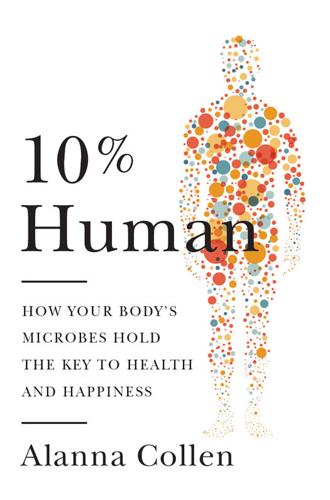
10% Human: How Your Body's Microbes Hold the Key to Health and Happiness
by
Alanna Collen
Published 4 May 2015
Let’s turn to the technique pioneered by Dr John Snow during Soho’s cholera outbreak of 1854: epidemiology. Since Snow first applied logic and evidence to unravelling the mystery of the source of cholera, epidemiology has become a mainstay of medical sleuthing. It couldn’t be simpler: we ask three questions: (1) Where are these diseases occurring? (2) Who are they affecting? and (3) When did they become a problem? The answers provide us with clues that can help us to answer the overall question: Why are twenty-first-century illnesses happening? The map of cholera cases that John Snow produced in answer to Where? gave away cholera’s likely epicentre – the Broad Street pump.
…
Each person could produce up to 20 litres per day, all of which was dumped in the cesspits beneath Soho’s cramped houses. The disease was cholera, and it killed people in their hundreds. Dr John Snow, a British doctor, was sceptical of the miasma theory, and had spent some years looking for an alternative explanation. From previous epidemics, he had begun to suspect that cholera was water-borne. The latest outbreak in Soho gave him the opportunity to test his theory. He interviewed Soho residents and mapped cholera cases and deaths, looking for a common source. Snow realised that the victims had all drunk from the same water pump on Broad Street (now Broadwick Street) at the heart of the outbreak.
…
It seems that without their calming influence, the handbrake is off and the immune system goes full speed ahead, attacking even the most innocuous of substances. Let me now tell you about cholera – the disease behind the litres of watery white diarrhoea that contaminated the water supply of Soho back in 1854, and which continues to cause outbreaks of misery in developing countries today. It’s caused by a nasty little bacterium called Vibrio cholerae which colonises the small intestine. But it never intends to stay for long. Where most infectious bacteria attempt to sneak past the immune system until they have fortified their ranks enough to resist attack and cause a persistent infection, V. cholerae flaunts its presence from the moment it arrives.
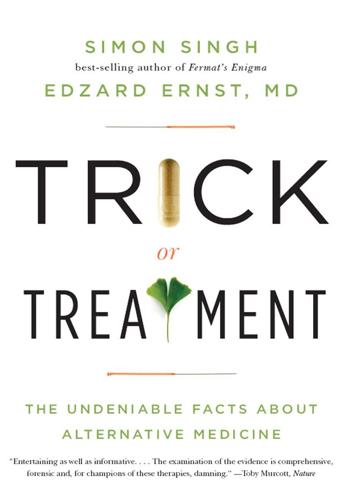
Trick or Treatment: The Undeniable Facts About Alternative Medicine
by
Edzard Ernst
and
Simon Singh
Published 17 Aug 2008
Snow learned, however, that she had previously lived in Soho and had such a fondness for the sweet pump water that she had specially asked for some Broad Street water to be brought to her house. Based on all these observations, Snow persuaded town officials to take the handle off the pump, which halted the supply of contaminated water and brought an end to the cholera outbreak. Snow, arguably the world’s first epidemiologist, had demonstrated the power of the new scientific approach to medicine, and in 1866 Britain suffered its last cholera outbreak. Figure 4 John Snow’s map of cholera deaths in Soho, 1854. Each black oblong represents one death, and the Broad Street pump can be seen at the centre of the epidemic. Other major scientific breakthroughs included vaccination, which had been growing in popularity since the start of the 1800s, and Joseph Lister’s pioneering use of antiseptics in 1865.
…
Picture Credits James Lind © Wellcome Library, London Florence Nightingale’s polar chart © Wellcome Library, London Model showing acupuncture needle entry points © Wellcome Library, London Patient receiving acupuncture © Tek Image/Science Photo Library Archie Cochrane © Cardiff University Library, Cochrane Archive, Llandough Hospital Samuel Hahnemann © Science Photo Library Oliver Wendell Holmes © Wellcome Library, London John Snow’s map of cholera deaths in Soho, 1854 © Royal Society of Medicine Cervical spine © Sheila Terry/Science Photo Library Daniel David Palmer © Science Photo Library Field thistle © Wellcome Library, London St John’s wort © June Hill Redigo/Custom medical stock photo/ Science Photo Library
…
One of the most important medical breakthroughs took place during the previously mentioned 1854 London cholera epidemic. The disease had first hit Britain in 1831, when 23,000 people died; this was followed by the 1849 epidemic, which killed 53,000. During the 1849 epidemic the obstetrician Dr John Snow questioned the established theory that cholera was spread through the air by unknown poisonous vapours. He had been a pioneer of anaesthesia and had administered chloroform to Queen Victoria during the birth of Prince Leopold, so he knew exactly how gaseous poisons affected groups of people; if cholera was caused by a gas, then entire populations should be affected, but instead the disease seemed to be selective about its victims.
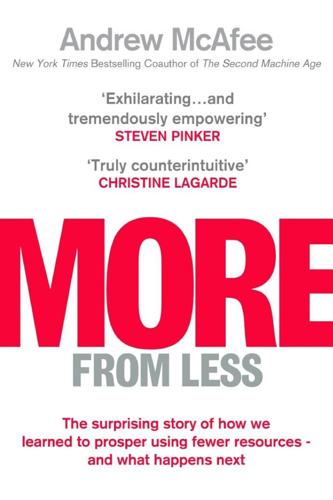
More From Less: The Surprising Story of How We Learned to Prosper Using Fewer Resources – and What Happens Next
by
Andrew McAfee
Published 30 Sep 2019
Disamenities and Death in 19th Century British Towns,” Explorations in Economic History 19, no. 3 (July 1982): 221–45, https://doi:10.1016/0014-4983(82)90039-0. home in the Ganges River delta: “Cholera,” World Health Organization Fact Sheets, updated January 17, 2019, https://www.who.int/en/news-room/fact-sheets/detail/cholera. two major outbreaks killed more than fifteen thousand: Jacqueline Banerjee, “Cholera,” Victorian Web: Literature, History, & Culture in the Age of Victoria, last modified January 19, 2017, http://www.victorianweb.org/science/health/cholera/cholera.html. plotted all London cholera cases on a map: Simon Rogers, “John Snow’s Data Journalism: The Cholera Map That Changed the World,” Guardian Datablog, March 15, 2013, https://www.theguardian.com/news/datablog/2013/mar/15/john-snow-cholera-map.
…
A third cholera outbreak, in 1854, killed more than five hundred people in the Soho neighborhood within two weeks and threatened to sow panic throughout the city. It was stopped only when the physician John Snow plotted all London cholera cases on a map; they were tightly clustered around the public water pump on Broad Street, the water of which had become contaminated. Snow persuaded the authorities to close this pump, stopping the outbreak. Citywide plumbing that brought clean water and took away sewage, combined with Louis Pasteur’s convincing demonstrations that germs caused diseases such as cholera, ensured that this was London’s last brush with King Cholera. Cholera outbreaks hint at an important fact: something like an Engels Pause occurred in aspects of health at the start of the Industrial Era.
…
plotted all London cholera cases on a map: Simon Rogers, “John Snow’s Data Journalism: The Cholera Map That Changed the World,” Guardian Datablog, March 15, 2013, https://www.theguardian.com/news/datablog/2013/mar/15/john-snow-cholera-map. something like an Engels Pause: C.W., “Did Living Standards Improve during the Industrial Revolution?,” Economist, Economics: Free Exchange, September 13, 2013, https://www.economist.com/free-exchange/2013/09/13/did-living-standards-improve-during-the-industrial-revolution. Urban infant mortality: Williamson, “Was the Industrial Revolution Worth It?,” passim. around 100 to 200 deaths per 1,000: Williamson, “Was the Industrial Revolution Worth It?,” 227, table 1.26. 3.8 infant deaths per 1,000 births: “Child and Infant Mortality in England and Wales: 2016,” Office for National Statistics, accessed March 1, 2019, https://www.ons.gov.uk/peoplepopulationandcommunity/birthsdeathsandmarriages/deaths/bulletins/childhoodinfantandperinatalmortalityinenglandandwales/2016.

Why Machines Learn: The Elegant Math Behind Modern AI
by
Anil Ananthaswamy
Published 15 Jul 2024
GO TO NOTE REFERENCE IN TEXT CHAPTER 5: BIRDS OF A FEATHER “No street in the Cholera area was without death”: “Report on the Cholera Outbreak in the Parish of St. James, Westminster, During the Autumn of 1854, Presented to the Vestry by the Cholera Inquiry Committee, July 1855,” p. 18, Wellcome Collection, n.d., wellcomecollection.org/works/z8xczc2r. GO TO NOTE REFERENCE IN TEXT “In Broad Street”: “Report on the Cholera Outbreak in the Parish of St. James,” pp. 18–19. GO TO NOTE REFERENCE IN TEXT a physician named John Snow: Michael A. E. Ramsay, “John Snow, MD: Anaesthetist to the Queen of England and Pioneer Epidemiologist,” Baylor University Medical Center Proceedings 19, No. 1 (January 2006): 24–28.
…
Ramsay, “John Snow, MD: Anaesthetist to the Queen of England and Pioneer Epidemiologist,” Baylor University Medical Center Proceedings 19, No. 1 (January 2006): 24–28. GO TO NOTE REFERENCE IN TEXT “chloroform to Queen Victoria”: Ramsay, “John Snow, MD,” p. 4. GO TO NOTE REFERENCE IN TEXT “the various points which have been found”: “Report on the Cholera Outbreak in the Parish of St. James,” p. 109. GO TO NOTE REFERENCE IN TEXT “It will be observed that the deaths”: “Report on the Cholera Outbreak in the Parish of St. James,” p. 109. GO TO NOTE REFERENCE IN TEXT Voronoi cell: David Austin, “Voronoi Diagrams and a Day at the Beach,” American Mathematical Society Feature Column: Journeys for the Mathematically Curious, August 2006, www.ams.org/publicoutreach/feature-column/fcarc-voronoi.
…
One of the committee members was a physician named John Snow, who had been making major contributions to two fields of medical science, anesthesiology and epidemiology. Today, anesthesiologists revere Snow for his scientific study of ether and chloroform. His methods allowed him to administer “chloroform to Queen Victoria for the births of Prince Leopold and Princess Beatrice,” bringing “obstetric anesthesia into acceptance against religious, ethical, and medical beliefs.” And epidemiologists celebrate Snow for his extraordinary analysis of the 1854 cholera outbreak. He was able to show that the outbreak was clustered around a water pump on Broad Street, which lent credence to his hypothesis that cholera was a waterborne disease.
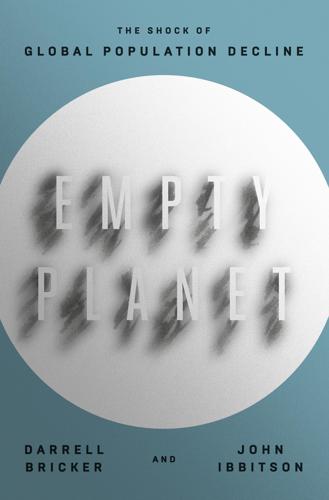
Empty Planet: The Shock of Global Population Decline
by
Darrell Bricker
and
John Ibbitson
Published 5 Feb 2019
There were two hundred thousand private cesspools in the city at the time of the outbreak; waste and refuse filled the ditches and lined the alleys.31 But the revolution was also transforming the sciences, especially medicine, with received wisdom forced to give way to empirical inquiry. Cholera was believed to be inhaled through miasma, or tainted air. Doctors treated the stricken with opiates and leaches. Combating infection by draining blood from the victim was still a popular remedy, despite centuries of evidence that the treatment was useless or harmful. At least the opiates eased the agony. One obscure physician, John Snow, was personally convinced that cholera was waterborne rather than airborne. An outbreak of the disease that began on August 31, 1854, in the London district of Soho, gave Snow a chance to prove his theory.
…
The outbreak ended instantly.32 Though it took years to overcome conservative resistance, the stubborn truth of Snow’s observation prompted planners to begin work on the first modern urban sewage system. Opened in 1870, the tunnels of the London sewers were so well built that they remain in good working order to this day. Though still largely unheralded, John Snow’s contribution to human well-being was extraordinary: within the field, he is known as “the father of epidemiology.”33 He advanced human understanding of disease generally and advanced as well the importance of public health as a government priority. While cholera continued to ravage the rest of Europe, it disappeared from London, which the rest of Europe noticed. Before long, protecting the water supply became crucial to urban planners and politicians in every advanced nation.
…
ps_articles=pamel-k-gilbert-on-cholera -in-nineteenth-century-england 31 Sharon Gouynup, “Cholera: Tracking the First Truly Global Disease,” National Geographic News, 14 June 2004. http://news.nationalgeographic.com/news/2004/06/0614_040614_tvcholera.html 32 Judith Summers, Soho: A History of London’s Most Colourful Neighborhood (London: Bloomsbury, 1989), 113–17. http://www.ph.ucla.edu/epi/snow/broadstreetpump.html 33 David Vachon, “Doctor John Snow Blames Water Pollution for Cholera Epidemic,” Father of Modern Epidemiology (Los Angeles: ucla Department of Epidemiology, 2005). http://www.ph.ucla.edu/epi/snow/fatherofepidemiology.html 34 “Population of the British Isles,” Tacitus.NU. http://www.tacitus.nu/historical-atlas/population/british.htm 35 Max Roser and Esteban Ortiz-Ospina, “World Population Growth,” Our World in Data, 2013/2017. http://ourworldindata.org/data/population-growth -vital-statistics/world-population-growth 36 Michael J.

Hit Makers: The Science of Popularity in an Age of Distraction
by
Derek Thompson
Published 7 Feb 2017
In the middle of the nineteenth century, London was both the greatest city in the world and a massive stinking cesspool of disease. In 1854 a cholera outbreak struck the city, killing 127 people in three days and causing 75 percent of residents to flee the working-class Soho neighborhood within a week. The city government still assumed that the disease was carried through smells and inhaled by residents. The scientist John Snow disagreed. A doctor with the instincts of a journalist, Snow interviewed hundreds of sick and healthy families from the neighborhood. He plotted their cases on a map, where dark bars signified households with cholera. Snow’s investigation uncovered several critical clues: The infected houses clustered within a few blocks.
…
“driven by the size of the largest broadcast”: Goel et al., “The Structural Virality of Online Diffusion.” a massive stinking cesspool of disease: Steven Johnson, The Ghost Map: The Story of London’s Most Terrifying Epidemic—and How It Changed Science, Cities, and the Modern World (New York: Riverhead, 2006). killing 127 people in three days: Kathleen Tuthill, “John Snow and the Broad Street Pump,” Cricket 31, no. 3 (November 2003), reprinted by UCLA Department of Epidemiology, www.ph.ucla.edu/epi/snow/snowcricketarticle.html. “There were only ten deaths in houses”: John Snow, Medical Times and Gazette 9, September 23, 1854: 321–22, reprinted by UCLA Department of Epidemiology, www.ph.ucla.edu/epi/snow/choleraneargoldensquare.html.
…
Outside of that cluster, there were practically no incidents of cholera. In the heart of the cluster was a brewery whose workers were remarkably healthy. Imagine yourself as a detective with these clues and this map. Given the pattern of the disease, you might rule out the miasma theory. But you’d still wonder if this disease was spreading between houses—like a virus—or spreading from one source to many houses. And why would beer offer immunity to workers in the midst of an urban epidemic? Snow added more details to the map—restaurants, parks, water pumps—and he noticed something. On blocks where the Broad Street water pump was the nearest source of water, cholera cases were numerous.
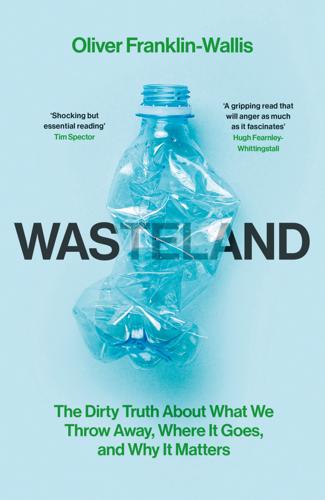
Wasteland: The Dirty Truth About What We Throw Away, Where It Goes, and Why It Matters
by
Oliver Franklin-Wallis
Published 21 Jun 2023
After ingestion the bacterium makes its way into the small intestine, where it reproduces uncontrollably, triggering violent diarrhoea, vomiting and the sloughing off of the intestinal wall. The result is catastrophic dehydration. Drawings from the time depict cholera victims as gaunt, with blue skin and hollowed-out eyes. In extreme cases, victims could (and still) die within a matter of hours. In the cramped and fetid quarters of 1850s London, entire families were wiped out in a week. Inevitably, the scientific establishment blamed miasma, and ignored any evidence that the Thames might be poisoning the city. In 1848, the noted physician John Snow traced a cholera outbreak in Soho that had claimed more than 600 lives back to a water pump on Broad Street. The well it drew from, it later emerged, had been contaminated by a leaking cesspool.
…
Invariably, the cities that were slowest to solve their waste problem by building sewers were also the ones who continued to be plagued by disease. In 1866, London suffered its final cholera epidemic. The outbreak, centred around Whitechapel in the east of the City, took 5,596 lives.22 As it happened, Whitechapel was the only district not yet connected to Bazalgette’s sewers, which were finished the following year. The Whitechapel tragedy was vindication of London’s sewer project, and a posthumous redemption for John Snow, whose theory of cholera as a water-borne disease was finally accepted by the medical establishment. In 2018, the London School of Hygiene & Tropical Medicine and Westminster Council installed a memorial pump at the site of the Broad Street outbreak.
…
They couldn’t then know what we know now: that a single gram of human faeces can contain millions of bacteria and viruses, along with worm eggs and assorted parasites.13 Shit-contaminated water is the vector for some of our deadliest diseases, which inevitably ran rampant – typhoid, dysentery, and worst of all, cholera. The disease that would come to be known as the Victorian Plague arrived on British shores from India in 1831 and proceeded to tear through the populace, killing more than 70,000 people in a series of pandemics. Cholera is a disease of waste: the bacillus that causes it, Vibrio cholerae, infects its victim through water contaminated with faecal matter. After ingestion the bacterium makes its way into the small intestine, where it reproduces uncontrollably, triggering violent diarrhoea, vomiting and the sloughing off of the intestinal wall.

The Great Escape: Health, Wealth, and the Origins of Inequality
by
Angus Deaton
Published 15 Mar 2013
But the theory led to too much emphasis on sanitation and not enough on water supplies, so that, at one point, the health authorities in London were emptying the stinking cesspools in basements into the Thames, thus recycling cholera into the water supply. A few years later, in London’s cholera epidemic of 1854, one of the two water companies supplying the city with drinking water from the Thames had its inlets downstream of the sewage discharges, recycling cholera bacteria from one generation of victims to the next. Indeed, the fact that the other major company had recently moved its inlet to purer water upriver enabled John Snow, then a physician in London, to map the cholera deaths and match them to the offending water company, and thus to demonstrate that cholera was spread through contaminated drinking water.28 This was one of the first “natural experiments” in public health, and it gets my vote as one of the most important of all time.
…
Preston, 1996, “American longevity: Past, present, and future,” Center for Policy Research, Maxwell School, Syracuse University, Paper 36, http://surface.syr.edu/cpr/36. 27. George Rosen, 1991, A history of public health, Johns Hopkins University Press. 28. John Snow, 1855, On the mode of transmission of cholera, London, John Churchill. See also Steven Johnson, 2007, The ghost map: The story of London’s most terrifying epidemic and how it changed science, cities, and the modern world, Riverhead. 29. David A. Freedman, 1991, “Statistical analysis and shoe leather,” Sociological Methodology 21: 291–313. 30. Nancy Tomes, 1999, The gospel of germs: Men, women and the microbe in American life, Harvard University Press. 31.
…
One sticking point was why some people exposed to the disease did not become sick—a serious challenge to causality and understanding.30 Indeed, Koch, who had isolated Vibrio cholerae in 1883, proposed four “postulates,” all of which had to be satisfied if a microbe were to be safely identified as the cause of a disease. One was that, if the microorganism were introduced into a healthy person, the disease should follow. This gap in the theory was spectacularly demonstrated in 1892 when a prominent disbeliever and miasmatist, Max von Pettenkofer, then aged 74, publicly drank a flask of cholera bacteria, specially sent by Koch from Egypt, and suffered only mild negative after-effects.

Age of the City: Why Our Future Will Be Won or Lost Together
by
Ian Goldin
and
Tom Lee-Devlin
Published 21 Jun 2023
However, until the latter decades of the nineteenth century the prevailing wisdom was that bad air, or ‘miasma’, was to blame, an idea hailing back to Hippocrates of Ancient Greece. The British epidemiologist John Snow was one of a small number of pioneering thinkers who found the theory unconvincing. In 1854, Snow created a map of where cholera cases were being contracted in the West End, and noticed a distinctive cluster around a single water pump in Broad Street, Soho. Snow realized that the cause of the outbreak was a tainted water supply, as the faecal discharge of cholera victims in the area was seeping back into the well due to the absence of an effective sewerage system. Snow convinced the local authority to remove the handle from the well, but he failed to persuade a subsequent parliamentary inquiry that the cause of regular cholera outbreaks was a dirty water supply rather than noxious air.27 At the time of John Snow’s investigation, the most influential figure in sanitation in Britain was a social reformer named Edwin Chadwick.
…
Snow convinced the local authority to remove the handle from the well, but he failed to persuade a subsequent parliamentary inquiry that the cause of regular cholera outbreaks was a dirty water supply rather than noxious air.27 At the time of John Snow’s investigation, the most influential figure in sanitation in Britain was a social reformer named Edwin Chadwick. In 1842, Chadwick published a Report on the Sanitary Condition of the Labouring Population of Great Britain, in which he argued forcefully for cleaning up London to reduce the instance of disease. An ardent believer in miasma theory, however, Chadwick’s solution was to get the supposedly noxious air away from houses by closing the city’s cesspits and redirecting human waste through a network of pipes into the Thames River.
…
It is hard now to imagine just how horrid life was in cities during the early decades of industrialization. In 1830s Manchester, the typical working week for men, women and children was close to 70 hours,8 during which time they would work amid deafening noise and oppressive humidity. The combination of a lack of clean drinking water and overcrowded housing meant diseases like cholera, typhus and influenza were rife. As a pioneering industrial city, Manchester experienced stark inequalities, but a similar story can be found across other industrializing metropolises of that era. Charles Dickens famously brought the plight of London’s working poor to life in novels like David Copperfield and Oliver Twist.
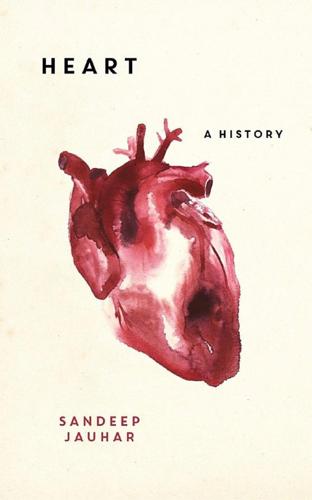
Heart: A History
by
Sandeep Jauhar
Published 17 Sep 2018
Epidemiology is about the ecology of disease: where and when it is found, or not. In 1854, John Snow, physician to Queen Victoria, performed the world’s first epidemiological study when he investigated a major cholera outbreak in London’s Soho. Snow was born in the town of York, at the intersection of two rivers contaminated by dung and sewage. His childhood likely sensitized him to a community’s need for clean water. Based on studies nearly ten years before the Soho epidemic, Snow had concluded that cholera was transmitted by “morbid matter,” not foul air, as his colleagues at the London Medical Society believed.
…
Based on studies nearly ten years before the Soho epidemic, Snow had concluded that cholera was transmitted by “morbid matter,” not foul air, as his colleagues at the London Medical Society believed. He based his theory in part on the fact that workers in slaughterhouses, thought to be a font of cholera, were afflicted no more than the general population. So, when cholera broke out in London in 1854, Snow set his sights on a well. He went to the General Registry Office and mapped the addresses of all the cholera deaths in Soho, discovering that most deaths had occurred near a water pump on Broad Street. True to his meticulous nature, Snow also studied Soho residents who did not contract the disease—for example, inmates at a nearby prison that did not use the Broad Street pump, as well as brewery workers whose supervisor, a Mr.
…
Only later, by studying water samples, did London authorities show that the pump was contaminated with sewage from a nearby cesspool, setting off what Snow called “the most terrible outbreak of cholera which ever occurred in this kingdom.” Snow’s investigation saved many lives. Just as important, it showed that an epidemic could be controlled without a precise understanding of its cause.* After Snow’s study and the subsequent development of epidemiological techniques, public health authorities in the United States focused their attention on acute infectious diseases like cholera, tuberculosis, and leprosy. Chronic noninfectious ailments—the long-term hard hitters like heart disease—received little attention.

Nexus: A Brief History of Information Networks From the Stone Age to AI
by
Yuval Noah Harari
Published 9 Sep 2024
Sanchez and Michael Lagunoff, “Viral Activation of Cellular Metabolism,” Virology 479–80 (May 2015): 609–18; “Virus,” National Human Genome Research Institute, accessed Jan. 12, 2024, www.genome.gov/genetics-glossary/Virus. 30. Ashworth E. Underwood, “The History of Cholera in Great Britain,” Proceedings of the Royal Society of Medicine 41, no. 3 (1948): 165–73; Nottidge Charles Macnamara, Asiatic Cholera: History up to July 15, 1892, Causes and Treatment (London: Macmillan, 1892). 31. John Snow, “Dr. Snow’s Report,” in Cholera Inquiry Committee, The Report on the Cholera Outbreak in the Parish of St. James, Westminster, During the Autumn of 1854 (London: J. Churchill, 1855), 97–120; S. W. B. Newsom, “Pioneers in Infection Control: John Snow, Henry Whitehead, the Broad Street Pump, and the Beginnings of Geographical Epidemiology,” Journal of Hospital Infection 64, no. 3 (2006): 210–16; Peter Vinten-Johansen et al., Cholera, Chloroform, and the Science of Medicine: A Life of John Snow (Oxford: Oxford University Press, 2003); Theodore H.
…
Prior to the establishment of modern sewage systems, waterborne infectious diseases like dysentery and cholera killed millions of people around the world.30 In 1854 hundreds of London residents began dying of cholera. It was a relatively small outbreak, but it proved to be a turning point in the history of cholera, of epidemics more generally, and of sewage. The leading medical theory of the day argued that cholera epidemics were caused by “bad air.” But the physician John Snow suspected that the cause was the water supply. He painstakingly tracked and listed all known cholera patients, their place of residence, and their source of water.
…
Newsom, “Pioneers in Infection Control: John Snow, Henry Whitehead, the Broad Street Pump, and the Beginnings of Geographical Epidemiology,” Journal of Hospital Infection 64, no. 3 (2006): 210–16; Peter Vinten-Johansen et al., Cholera, Chloroform, and the Science of Medicine: A Life of John Snow (Oxford: Oxford University Press, 2003); Theodore H. Tulchinsky, “John Snow, Cholera, the Broad Street Pump; Waterborne Diseases Then and Now,” Case Studies in Public Health (2018): 77–99. 32. Gov.UK, “Check If You Need a License to Abstract Water,” July 3, 2023, www.gov.uk/guidance/check-if-you-need-a-license-to-abstract-water. 33. Mohnish Kedia, “Sanitation Policy in India—Designed to Fail?,” Policy Design and Practice 5, no. 3 (2022): 307–25. 34.
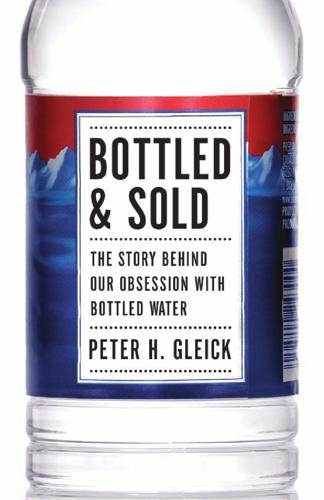
Bottled and Sold: The Story Behind Our Obsession with Bottled Water
by
Peter H. Gleick
Published 20 Apr 2010
In the 1850s the river smelled so bad on hot summer days that Parliament would adjourn because of the stink. Health officials in England had observed that cholera and typhoid mortality were five to six times higher in the poorer districts getting water from the sewage-contaminated Lower Thames compared to wealthier West London, which received cleaner water from upstream. In 1848 the Lambeth Water Company, one of several private water companies supplying London, moved its water intake upstream on the Thames, above the worst of the sewage discharges, reducing illness in its service area. In a now legendary 1854 experiment, Dr. John Snow, a London physician, conducted a simple yet brilliant test that helped to settle the debate about the transmission of cholera.
…
John Snow, a London physician, conducted a simple yet brilliant test that helped to settle the debate about the transmission of cholera. Snow drew a map of a virulent cholera outbreak in one of the poorest neighborhoods of London—an area served by central wells and no sewage collection. He plotted the homes and numbers of people affected and added the location of the wells that provided water for the hardest-hit neighborhoods. The maps he generated and the interviews he conducted with the families of victims convinced him that the source of contamination was the water from one particular well in Broad Street. He received permission from local authorities to remove the pump handle, which forced residents to go to other, uncontaminated wells for water.
…
President James Polk is reported to have contracted cholera while in New Orleans in 1849, and died of the disease just a few months after leaving office.11 In 1853 and 1854, another massive wave of cholera swept back through Europe and America. Russia was reportedly devastated by a million cholera deaths, and once again thousands died in London. Yet leading doctors and scientists couldn’t agree on how people were getting ill or how best to prevent the transmission of most diseases. The sciences of bacteriology, epidemiology, and immunology were still rudimentary. The prevalent theory of the time was that cholera was transmitted through the air as a contagious mist or miasma.
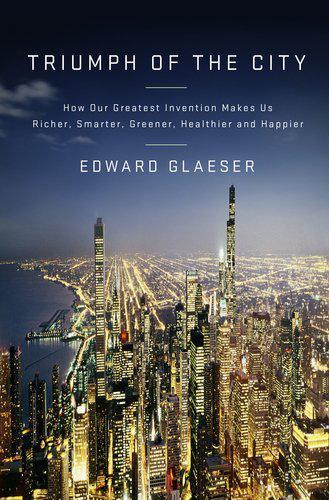
Triumph of the City: How Our Greatest Invention Makes Us Richer, Smarter, Greener, Healthier, and Happier
by
Edward L. Glaeser
Published 1 Jan 2011
In the seventeenth century, death rates were much higher in urban areas when compared with the English countryside. Plague vanished from Europe (though not from Asia) in the early eighteenth century, but yellow fever invaded, and cholera began devastating Western cities by 1830. While earlier public health actions against disease were mostly limited to quarantine, increasingly sophisticated urbanites like John Snow were acquiring the knowledge needed to battle the spread of pestilence. Snow was a coal worker’s son from York who was apprenticed at the age of fourteen to the doctor of railroad pioneer George Stephenson.
…
Two years later, he received his license and became a successful doctor and medical researcher, one who learned much from the city around him. His greatest success came from observing the pattern of cholera deaths in the outbreak of 1854. London was Snow’s laboratory, and with the help of a local clergyman, he interviewed residents and produced a remarkable map of the cholera outbreak. Street by street, case by case, the map showed the geography of the disease. By examining the layout of the affliction, Snow saw that a particular water pump lay at the epicenter of the outbreak. His interviews led him to conclude “there has been no particular outbreak or prevalence of cholera in this part of London except among the persons who were in the habit of drinking the water of the above-mentioned pump well.”
…
.; and Xu et al., “Deaths: Final Data for 2007.” 97 more than 10 percent of the children ... exceed 30 percent: Tollens, “Food Security.” 97 thirty minutes for potable water: Congo, Enquête Démographique, p. 20, table 2.6, “Approvisionnement en eau potable.” 97 Plague came to Athens: Durack et al., “Hellenic Holocaust.” 97 Plague came to Constantinople: Russell, “That Earlier Plague.” 97 three centuries after 1350: McNeill, Plagues and Peoples, 160-72. 97 death rates were much higher in urban areas: Wrigley and Schofield, Population History, 472. 98 Plague vanished from Europe: McNeill, Plagues and Peoples, 171-72. 98 yellow fever invaded, and cholera: Ibid., 271-75, 280. 98 Nine years later, Snow walked: Steven Johnson, Ghost Map, 60. 98 map of the cholera outbreak: Ibid., 172-73. 98 a particular water pump: Ibid., 193. 98 “the above-mentioned pump well”: Brody et al., “Map-Making,” 65. 99 Philadelphia ... went the public route: Warner, Private City, 103. 99 New York followed a private path: Reubens, “Burr, Hamilton,” 592. 99 cautioned against the “burthensome” taxes: Reubens, “Burr, Hamilton.” 99 The charter’s key provisions: Ibid., 599. 99 “monied transactions not inconsistent”: Ibid., 600. 100 lose more than a half percent: New York City Department of Health and Mental Hygiene, Summary of Vital Statistics 2008, Jan. 2010, cover. 100 Croton Aqueduct ... had an impact: Jervis, Description of the Croton Aqueduct. 100 remarkable sixty-year decline: In 1832, New York City had 50 deaths per 1,000, a rate of 5 percent.
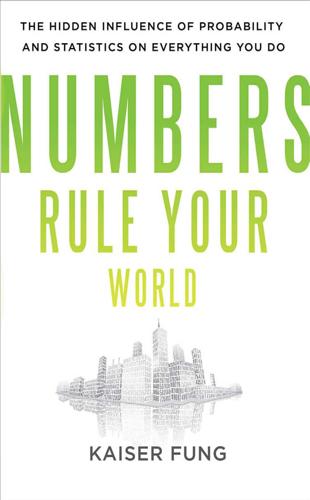
Numbers Rule Your World: The Hidden Influence of Probability and Statistics on Everything You Do
by
Kaiser Fung
Published 25 Jan 2010
. ~###~ A century and a half ago, a young English doctor found himself in a worse predicament when a string of cholera outbreaks killed tens of thousands between 1830 and 1850. In 1854, around London’s Broad Street (now Broadwick Street), 127 people succumbed to the disease in three days, and 500 died in the first ten days. At the time, the cause of cholera was popularly believed to be “miasma,” also known as foul air. In a series of inspired studies, Dr. John Snow demonstrated that cholera is spread by foul water, not foul air. By mapping sites of water pumps and homes of the deceased, he guessed correctly that the Broad Street pump was infected.
…
That alternative world of no recall, unfortunately, could only exist in our imagination. So it was impossible, in practice, to prove DeWaal’s claim of many lives saved. The same kind of conundrum was recognized over a century ago by John Snow, who considered the possibility that “the [cholera] attacks had so far diminished before the use of the water was stopped that it was impossible to decide whether the well still contained the cholera poison in an active state or whether, from some cause, the water had become free from it.” Such inability to gauge the effect of public policy served to raise the stakes further, especially when it has costly side effects.
…
EIS officers have played leading roles in preventing and controlling diseases, including polio, lead poisoning, Legionnaires’ disease, and toxic shock syndrome. They proudly wear lapel pins of a shoe with a hole, symbolizing the sweat and toil involved in their surveillance activities. In Langmuir’s office hung the portraits of his three heroes: John Snow (of course), Sir Edwin Chadwick, and Charles Chapin. Chadwick, like Snow, was instrumental in jump-starting sanitation reform in England in the nineteenth century; he advocated the then-novel concept of using pipes to carry water into residences. Chapin, who served as the health officer of Providence, Rhode Island, for forty-eight years, earning the nickname “the dean of city health officers,” ignited the public-health movement in the United States in the 1880s, and he also championed the use of scientific principles.
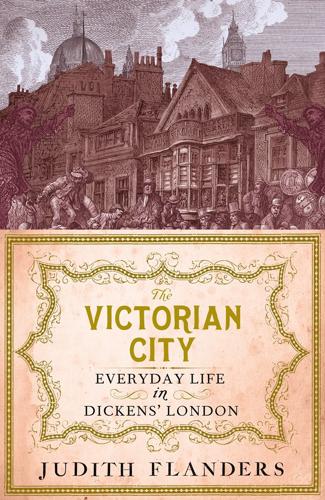
The Victorian City: Everyday Life in Dickens' London
by
Judith Flanders
Published 14 Oct 2012
London was, to many, a great map that mapped out the impossibility of mapping. There had been many maps of the city, but it was only at this time of renaming that the first official map of London was produced. That was precipitated not by the Metropolitan Board of Works’ desire for regimentation, but by a cholera epidemic. In 1848, the need to improve the sanitation of London was no longer a matter for debate (for more on sanitation, see pp. 194–6; on cholera, pp. 216–8), but the most basic element, the knowledge of the locations of the sewers, was entirely lacking, and so the army was called in to map out all the city streets for planning purposes.
…
Of the 638 convicts on board, 400 were stricken with cholera. Little more care was accorded the convicts after death. Their chaplain refused to conduct a funeral service until the dead numbered at least half a dozen, and even then he declined to accompany the bodies on their last journey, reading the burial service to himself on board and signalling to the burial party onshore when he reached ‘dust to dust’ by dropping his handkerchief. The 1854–5 outbreak was the one in which John Snow, a Soho doctor, famously disabled the Broad Street pump and in so doing stopped the spread of cholera in that district. (Broad Street has become Broadwick Street, and a pub, the John Snow, marks the location of the pump.)
…
These were cases of general fevers, but in 1831 a new terror had appeared: cholera. The medical community had been warning of its coming for more than a decade, after an outbreak of ‘Asiatic cholera’ in Lower Bengal in 1817. But it was another six years before it reached Europe, when 144 deaths were recorded in Astrakhan. In 1829, in Russia, 1,000 died before the disease again resurfaced in Astrakhan, and this time 25,000 may have died. By 1831, the disease had spread to the Baltic ports, and then it was only months before it reached Britain via the shipping routes: in October, the first British death from cholera was recorded in Sunderland.
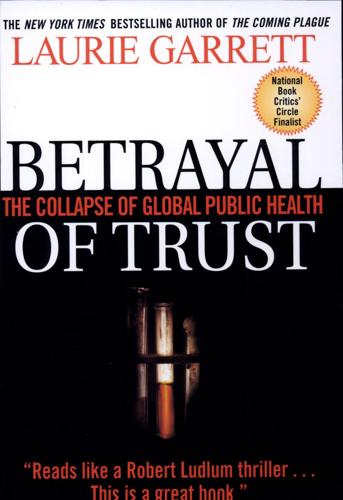
Betrayal of Trust: The Collapse of Global Public Health
by
Laurie Garrett
Published 15 Feb 2000
Spurring its creation was word of an enormous, terribly virulent cholera epidemic in Paris. Having spotted cholera from Europe aboard a ship in New York City’s harbor, the new board—ardent sanitarians all—ordered immediate cleaning of every street and sewer in Manhattan and Brooklyn, among other measures. Crucially, board member Dr. Elisha Harris made the bold contagionist assertion that cholera infected people as a result of contact with water that was contaminated with fecal matter from other cholera victims. He knew, of course, of John Snow’s Broad Street pump experiment in London, but Harris went a critical step further, mixing the Snow observation with Semmelweis’s handwashing insights.
…
This legislation compelled every city and town in the United Kingdom to construct water systems, sewers and proper drainage, and pave primary thoroughfares: a feat accomplished in just over twenty years. American health leaders also failed to take note of Dr. John Snow’s 1853 insight that by removing the pump handle (and thus the source of contaminated water) from the well in a London neighborhood with an especially high cholera rate, that neighborhood’s cholera epidemic promptly slowed. Though Snow had no concept of the bacterial cause of cholera, he realized that filthy water carried the disease. Despite the early sanitarians’ best efforts, and perhaps in part because of antigovernment sentiment throughout America in the 1850s, truly awful epidemics continued and were just beginning to ignite action.
…
Though such measures surely violated all concepts of personal liberty and usually proved lethal to the sufferers, quarantine enjoyed a fair amount of popular support, primarily because cholera was such a horrifying disease. The sanitarians missed the message of John Snow’s Broad Street pump. Rather than accept the possibility that a contagious agent might lurk in unclean water, the sanitarians continued to insist that filth, in and of itself, was the cause of disease. Spurred by fear of cholera, however, their zeal for cleanup was boundless. While civic leaders targeted hogs, dirt, and horse manure, more sophisticated notions of disease were percolating overseas: talk of Charles Darwin’s On the Origin of Species was on everyone’s lips.
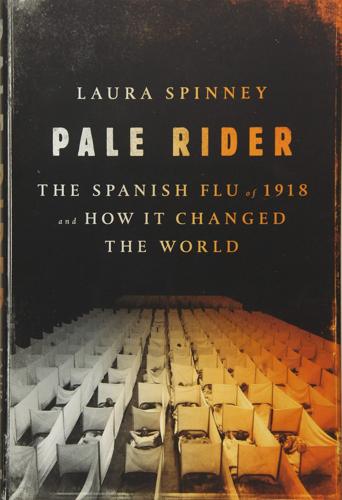
Pale Rider: The Spanish Flu of 1918 and How It Changed the World
by
Laura Spinney
Published 31 May 2017
The psychological shift that this demanded was as troubling as the one Hippocrates had provoked more than 2,000 years earlier, and people were slow to embrace it. When two waves of cholera swept London in the mid-nineteenth century, its residents blamed miasma rising from the filthy River Thames. After a brilliant piece of detective work that involved marking fatal cases of the disease on a map, a doctor called John Snow traced the source of one outbreak to a particular water pump in the city, and deduced–correctly–that water rather than air spread cholera. He published his conclusion in 1854, but it was only after the ‘Great Stink’ of 1858–when a spell of hot weather rendered the smell of untreated sewage on the banks of the Thames overpowering–that the authorities finally commissioned an engineer, Joseph Bazalgette, to design a proper system of sewers for the city.
…
Typhus or typhoid or perhaps both were now raging in Mashed (there was diagnostic confusion over all the diseases present in the city at that time), and towards the end of June, cholera was reported further north, in the Russian city of Ashkhabad. Grey laid in supplies of serum from India and lamented the city’s dismal sanitary situation: ‘Nothing to be done regarding protection of the water supply.’ In July it became clear that the next harvest would not fail, and the famine relief effort was eased back, but the British were still sufficiently concerned about cholera that they tried to discourage large numbers of people from making the traditional pilgrimage from what is now Pakistan to Mashed after the end of Ramadan.24 They were still worrying about waterborne diseases when an airborne plague arrived in town–the Spanish flu.
…
He published his conclusion in 1854, but it was only after the ‘Great Stink’ of 1858–when a spell of hot weather rendered the smell of untreated sewage on the banks of the Thames overpowering–that the authorities finally commissioned an engineer, Joseph Bazalgette, to design a proper system of sewers for the city. Their reasoning? By eliminating the miasma, they would eliminate cholera too. Germ theory also had profound implications for notions of personal responsibility when it came to disease. Hippocrates had some surprisingly modern ideas about this. People were responsible for their diseases, he believed, if they did not make lifestyle choices conducive to good health, but they could not be blamed if a disease was hereditary.

Progress: Ten Reasons to Look Forward to the Future
by
Johan Norberg
Published 31 Aug 2016
London’s early sewage systems ended the practice of keeping cesspools in basements, but they did so by dumping raw sewage into the River Thames, also the source of the city’s drinking water. In this way, cholera was recycled into the water supply. Two outbreaks of cholera in London between 1848 and 1854 killed 25,000 people. This tragedy made one of the world’s great medical experiments possible, ‘one of the most important of all time’, according to Angus Deaton.9 John Snow, a physician in London, thought that cholera was borne by water rather than foul air. He mapped the deaths in detail and found a revealing link. All the cholera cases seemed to originate from the water company that had its inlet downstream of the sewage discharge, whereas no deaths were found among those who got their water from the other company, which had recently moved its inlet to purer water upriver.
…
Typhoid was spread by eating food or drinking water contaminated with the faeces of an infected person, and this illness alone killed about a quarter of all patients. It may have been the disease that killed every third Athenian in 430 bce and ended its golden period. More recently, typhoid killed Queen Victoria’s husband, Prince Albert, at the age of forty-two. Cholera spread from the Indian subcontinent and water contaminated with the bacterium has killed tens of millions since the early nineteenth century. Safe water is essential not just for drinking, but also for daily personal and domestic hygiene and food preparation. Most of the illness in the world is still caused by waterborne diseases, and the World Health Organization (WHO) estimates that at any given time almost half the population in low- and middle-income countries are suffering from diseases related to inadequate provision of safe water and sanitation services.
…
In medieval Britain, estimates range from seventeen to thirty-five years.7 The early era of globalization resulted in terrible epidemics, since populations which had earlier been separated now exchanged contagious germs. Europeans introduced smallpox to the Americas, and got syphilis in return. Plague came with the Mongol conquests and cholera spread on merchant routes from India, killing tens of millions from the early nineteenth century. Before the late nineteenth century, even those in the most advanced nations did not experience mortality much lower than was typical during most of our species’ history. In the 1830s, life expectancy in western Europe was thirty-three years and it improved only slowly.
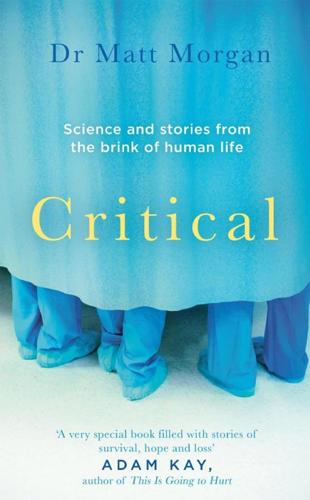
Critical: Science and Stories From the Brink of Human Life
by
Matt Morgan
Published 29 May 2019
An observational study of adult admissions to a medical ICU due to adverse drug events. Ann Intensive Care 6, 9 (2016). ‘. . . the map that the English physician, John Snow, drew 160 years ago when examining the cause of this deadly cholera outbreak contained something far more telling.’ Hajna, S., Buckeridge, D. L. & Hanley, J. A. Substantiating the impact of John Snow’s contributions using data deleted during the 1936 reprinting of his original essay On the Mode of Communication of Cholera. Int. J. Epidemiol. 44, 1794–1799 (2015). ‘In COPD, this type of lung support can prevent the need for a life-support machine and improve a patient’s chances of survival.’
…
This reach is far greater than any doctor treating individual patients even in a life devoted to clinical medicine. The poster child of epidemiology is the London cholera outbreak of 1854, which centred around Broadwick Street in Soho. Today, you will find organic coffee shops and high-end fashion brands on this street, but the map that the English physician, John Snow, drew 160 years ago when examining the cause of this deadly cholera outbreak contained something far more telling. The clustering of cases around the water pump on Broadwick Street prompted him to examine a sample of the well’s water under a microscope, finding that it contained ‘white, flocculent particles’.
…
Pre-empting acceptance of the germ theory of infection, Snow was convinced these flecks were the source of disease. After taking his findings to the parish leaders, they reluctantly agreed to remove the pump’s handle as an experiment. Within weeks, the outbreak that claimed 616 lives was finally over. Incidentally, John Snow’s remarkable achievements did not stop there. He later went on to safely use chloroform to assist in the birth of Queen Victoria’s son Leopold in 1854, a turning point in the public acceptance of anaesthesia. The British Doctors’ Study published in 1956 was landmark research pioneering a new epidemiological technique and gave conclusive evidence that smoking caused lung cancer.
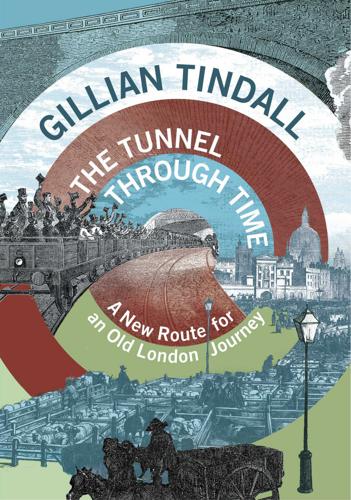
The Tunnel Through Time: A New Route for an Old London Journey
by
Gillian Tindall
Published 14 Sep 2016
The theory that sickness was produced by foul air, ill-ventilated rooms and such evils still held sway. Bad smells in themselves, it was thought, actually generated disease. Not for twenty-two years after the first outbreak and several intervening ones would Chadwick’s associate, John Snow, prove, by putting a particular pump out of action in Soho, that cholera was waterborne. It was several years more before the lethal role of the polluted Thames as a source of drinking water was identified as the prime cause, but the agitation about the need to clean up parts of London did, in a general way, some good. Wheels turned, speeches were made, and by the mid-1840s it was decided that one notorious ‘rookery’ must be demolished.
…
W., 223–224 Grey, Lady Jane, 150, 151 Grosvenor Estate, 24, 203, 239 Gunpowder Plot, 117–118 Habeas Corpus Act, 135 Hackney, 21, 35, 36, 88–89, 97, 137, 138, 179, 258 Hamilton, Patrick: The Plains of Cement, 262–263; Twopence Coloured, 262 Hampstead Junction Railway, 35 Hardy, Thomas, 144 Harrington, Alexander, 114 Harrington, John I, 114–116 Harrington, John II, 116–117 Harrison, Michael, 48–49 Hatton Garden, 12, 163, 167 Hawksmoor, Nicholas, 96, 168 Heathcote, Ebenezer, 160 Heathrow airport, 2, 3, 236, 275 Hendrix, Jimi, 164 Henry I, King, 58 Henry II, King, 62 Henry III, King, 84 Henry V, King, 65, 66 Henry VIII, King, 62, 69–70, 105, 109, 126, 149 Herbert, Sir Henry, 113–114 Heywood, William, 156 High Holborn, 11, 72 High Speed Two (HS2), 276 highwaymen, 238 Hogarth, William, 170–171, 217, 220 Holborn Viaduct, 11, 28, 32, 121, 231–232, 234, 260 Hollar, Wenceslaus, 93–94, 162–163, 178–179 Hollingshead, John, 25–27, 29, 30, 123, 184, 230, 234, 277 Homer, Thomas, 20–21 Hooke, Robert, 136, 216 Horwood, Richard, map of London (1790s), 178, 190, 195, 240, 244 House of St Barnabas, 252 Hoyle, Joshua, 191–192 Hudson’s Bay Company, 200 Huguenots, French Protestant, 96, 98, 149, 166, 181, 217 human remains: at Liverpool Street, 14–15, 76, 136–137, 138–139, 146; prevalence of, beneath London, 120–122; at Smithfield, 122–123, 126–127; and grave robbing, 226; at Tyburn, 244 Hyams, Harry, 269–270, 272–273 Hyde Park, 239; pet cemetery, 246–247 Illustrated London News (magazine), 31, 32, 34, 40, 141 Illustrated Times (magazine), 28, 30 Institute for the Advancement of Useful Knowledge, 183 Ireton, Henry, 159, 160, 184 Isle of Dogs, 189–190 Islington, 16, 21, 35, 76, 97, 162, 179, 268 Jack the Ripper, 99, 235 James I, King, 117, 147, 152 James II, King, 164 Jenkes family, 134–135, 139, 145 Jewish cemeteries: Cripplegate, 13–14; Stepney, 193, 207 John, Elton, 164 Jones, Horace, 230 Jones, Samuel, 194, 200 Jones, Susanna, 194, 200, 204 Jubilee line, 273 Jubilee Street, 202 Kensington, 245–246 Kilburn, 6–7, 8, 20, 174, 175, 258 ‘King John’s Palace’ see Worcester House, Stepney King’s Cross station, 9, 12, 24, 25, 31, 40, 236 Kingsley, Charles, 19 Kniveton, Frances, 158 Knox, John, 69 Lake, Sir Thomas, 118, 191 Langland, William, 86 Laud, Archbishop, 192 Leake, Martin, 201 Leicester, Robert Dudley, Earl of, 151–153 leper colony, St Giles-in-the-Fields, 58–59, 62, 149 Lichtenstein, Rachel, Rodinsky’s Room, 99 Lilburne, John, 134 Linacre, Thomas, 109 Lisle, Lord de see Northumberland, John Dudley, 1st Duke of Liverpool Street, 7, 8, 24, 82, 175, 177; excavations at, 14, 76; site of Old Bethlem hospital, 95, 137, 140–141, 145–146, 183 Liverpool Street station: and Crossrail, 13, 74, 274, 277; excavations at, 14, 76; Eastern Counties Railway terminus, 24, 36; building of, 27, 185; Paul Pindar’s house demolished for, 90; site of Old Bethlem hospital, 140; burial grounds beneath, 145–146 ‘Loch Lomond’ song, 73 Lockyer, Robert, 134 Lollards, 66, 109 London: ancient routes in and out, 5; first underground line (1860s), 9, 25–34; building of new roads in, 16–18; Congestion Charge, 17; and canals, 20–21; arrival of the railways, 22–24; transformation in the late 19th century, 28–29, 34; early commuting, 34–36; executions, 62–63, 65–73, 227–228; maps of, 72, 79, 93–95, 136, 137, 162, 167, 178–179, 190, 194, 195, 196, 239, 240, 244; urban development (16th century), 72, 88–93; (19th century), 51–53; Black Death (1348-1350), 84, 85, 127–129; population (13th century), 84; (14th century), 129 (16th century), 91; (19th century), 258; Great Fire (1666), 90, 93–94, 163, 225; Great Plague (1665-66), 130–134, 160–163; cholera outbreak (1830s), 141–142; fog, 258–259; The Blitz, 121, 187, 195, 211, 213, 265; literature of, 258–268; property values, 269–270, 272 see also names of individual districts, buildings and stations London Bridge station, 24 London County Council (LCC), 206, 209, 270–271 London Hospital, The, 202 London Underground see Underground railway, London London Wall, 13, 14, 24, 74, 76, 79, 82, 90, 95, 136, 179, 183, 186, 187 Lysons, Daniel, 113, 194, 203 Machen, Arthur, 266–268 Magna Carta, 84 Maidenhead, 2, 275 Markham, Isabella (later Harrington), 114–116 Marsh, Berrington, 194–195 Mary, Queen, 151 Mary I, Queen, 69 Marylebone, 11, 16, 49, 72, 84, 157, 217, 243, 255 Marylebone Lane, 240, 247 Maud (or Matilda), Queen, 58–59, 62 Mauny, Sir Walter de, 128 Maurois, André, Patapoufs et Filifers, 46–47 Mead, Matthew, 192–194 Mead, Richard, 194 Mead, William, 194 Meeting House, 180, 193–194, 196–197 Mercers’ Company, 106, 108, 109, 110 Merchant Taylors’ Company, 88 Metropolitan Board of Works, 28, 32, 138, 223, 235, 252, 260 Metropolitan Line: ‘cut-and-cover’ method, 2, 12; route, 9, 12, 13, 36, 122–123; and Farringdon Station, 10, 235; development of, 25–28; inaugral trip (1863), 27; demolition of buildings for, 29–31, 123, 226; and the Fleet ‘ditch,’ 31–33; success of, 33–34; and Paddington Station, 246; Hollingshead on, 277; Metropolitan Railway Company, 32 Midland Railway, 143–144 Mile End, 13, 36, 96, 102, 196 Mile End Green, 114, 118, 194, 196, 198, 200, 205 Mile End Road, 13, 96, 101, 118, 119, 188, 193, 200, 201, 203, 205, 207, 209, 212, 213, 214 Millwall Docks, 190 Milton, John, 92 Mithras, Temple of, in Walbrook, London, 74–75 Monmouth Street, 218 Montagu House, St Giles, 165 Monteagle, William Barker, 4th Baron, 117–118 Moorfields: in the Middle Ages, 13, 76–78; and the Walbrook stream, 75–76, 78; in the ‘Copperplate map’ (16th C), 79; and Bethlem Hospital, 94–95, 135–136, 182; in Morgan’s map (1682), 94–95; Roman remains found in, 121; plague pit, 133, 134; and Finsbury Circus, 140; in the 17th century, 178; after the Great Fire (1660), 179–180; in the 18th century, 182; and Dissenters, 183 Moorgate, 13, 14, 28, 36, 78, 79 More, Thomas, 109, 110, 122 Morgan, William, map of London (1682), 94, 167 Morley, Lord, 117–118, 191 Morris, William, 257, 264–265 Morrison, Arthur, A Child of the Jago, 99 ‘Murder Act’ (1752), 226 Museum of London, 3, 50, 121–122, 139, 183 Nash, John, 20 Neale, Thomas, 166–167 Nesbit, E., The Story of the Amulet, 264–265 Neville, Sir John, Baron Latimer, 105, 191 New Learning, 109 New Oxford Street, 51, 53, 62, 148, 220, 221, 222, 223, 265 New Road (now Marylebone and Euston Road), 9, 11, 12, 16–17, 21, 23, 31 Newgate prison, 65, 70, 216, 227–228, 231, 237 Nine Elms, Battersea, 24 Nonconformist movement, 183, 191–194, 196–197, 204 see also Dissenters Noorthouck, John, A New History of London (1773), 202–203 North London line, 97, 137, 139, 185, 235 North London Railway, 35, 137, 139, 196 Northumberland, John Dudley, 1st Duke of, 150, 151 Ogilby and Morgan, map of London (1676), 94 Old Bailey, 65, 101, 227 Old Oak Common, 275, 276 Oldcastle, Sir John, 66–68, 177 omnibus see buses Orczy, Baroness Emma, 39 Orwell, George, 262 Oxford Circus, 25, 239, 253 Oxford Street: ancient route into London, 11; discovery of medieval reservoir beneath, 48–50; and New Oxford Street, 53, 219; 18th century development of, 237–240, 247–249; plan of (c.1750), 242; plan of (today), 242; DeQuincey’s ‘Ann of Oxford Street,’ 250, 252–253, 263; and Charles Dickens, 255 Paddington, 2, 7, 8, 9, 11, 12, 15, 19, 20, 26, 34, 240–241, 244, 246, 258 Paddington Station, 2, 6, 9, 25, 26, 241, 246 Pantheon, Oxford Street, 248–9 Paris: Métro, 38; RER, 274 Parton, John, 62, 65, 148–149, 150 Pearlberg (developers), 270 Pearson, Charles, 24–28, 34, 231, 235, 236, 246, 273 Peasants’ Revolt, 64, 118 Penn, William, 194 Pepys, Samuel, 178, 180 Piccadilly, 217, 237, 240 Pindar, Paul, 89–90, 141, 177, 178, 180, 185, 268 plague: and urban growth, 93; human remains tested for, 122; 14th century (Black Death), 84, 85, 127–130; ‘Great Plague’ (17th century), 122, 130–134, 160–163, 180, 192, 265; burials, 134 plague pits, 127, 129, 133, 166, 180 Pocock, George, 174–175, 244 Pocock, John Thomas, 6–9, 11, 19, 20, 34, 174–176, 215, 262 Pool of London, 20, 98, 133 Poor Law, 181 poorhouses see workhouses Poplar, 102, 132, 192, 199, 209, 210, 266 Portman Square, 244 Praed Street, 246 Priestly, J.
…
This extraordinarily cavalier destruction of townscape, not just of thousands of Londoners’ homes but of the very setting and context of their lives, had never been practised on such a scale before the late nineteenth century, and it was not equalled again till the vision of ‘comprehensive redevelopment’ obsessed planners and architects in the two decades after the Second World War. It is hardly surprising that in the 1850s, ’60s and ’70s the dead had no security of tenure either, and that the physical obliteration of burial grounds tended to be seen as another form of slum clearance. In 1832 London had its first cholera outbreak, and more cases appeared in 1834. There was trouble about where and how cholera victims might safely be buried, and that year a count was done of London graveyards. It was noted that in the whole of the metropolis there were under five hundred acres of burial space, most of it already overfull. Churches whose cramped churchyards were now surrounded by buildings had at varying times acquired for themselves extra grave space a little further out of town, even as Thomas Roe had done for the City parishes in 1568.
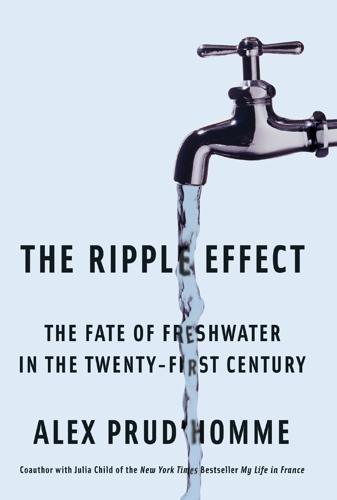
The Ripple Effect: The Fate of Fresh Water in the Twenty-First Century
by
Alex Prud'Homme
Published 6 Jun 2011
Seventy deaths occurred in twenty-four hours, most within five square blocks, while hundreds more—entire families, often—were infected by the mysterious disease. Known as cholera, the illness had been feared in Britain since devastating outbreaks in the 1830s and 1840s, one of which killed almost seventy-five hundred Londoners within two years. But no one knew how cholera was transmitted. Most experts suspected it was airborne, passing from one person to another by coughing or breathing. John Snow, a private doctor, had a novel theory: he believed that cholera was transmitted by contaminated drinking water. He studied water samples under a microscope and plotted the patterns of cholera death on a map. His “Ghost Map” showed the disease radiating from an epicenter at the Broad Street pump, which drew from a well beneath Golden Square.
…
His “Ghost Map” showed the disease radiating from an epicenter at the Broad Street pump, which drew from a well beneath Golden Square. Authorities shut down the pump, and within days the cholera epidemic disappeared. In pinpointing the locus of the outbreak, Snow had pioneered the science of epidemiology. An assistant curate later discovered that the outbreak had been triggered when a sick baby’s diapers were thrown down the well, infecting the water. Shortly after Snow created his Ghost Map, an Italian researcher named Filippo Pacini identified the cholera bacteria itself, Vibrio cholerae, which circulates from one person’s feces to another person’s stomach, and back again. Although he published his findings, Pacini’s work was ignored until 1884.
…
Chicago, for example, was established on the shore of Lake Michigan and grew rapidly, but contaminated water collected beneath its streets, while the city’s effluent was dumped into the lake, which was also its drinking supply. Typhoid fever and dysentery broke out, and in 1854 a cholera epidemic wiped out 6 percent of the city’s population. (Cholera is a bacterial disease caused by feces in water.) The crisis forced a major overhaul. Municipal leaders installed water pumps, built a new sewer system, and reversed the flow of the Chicago River to carry waste out of Lake Michigan, and the city was much healthier for it.
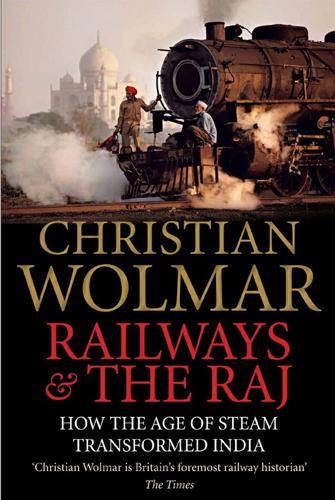
Railways & the Raj: How the Age of Steam Transformed India
by
Christian Wolmar
Published 3 Oct 2018
The death rate from disease on the ghats project was greater than on subsequent projects because of the primitive conditions, the hostile environment of the jungle and the absence of any concern from the British about the fate of the Indian workers. Cholera was particularly rife because of the shortage of safe water due to the lack of any form of sanitation in the vast workcamps which sprang up alongside the railway (cholera is water-borne, as the British surgeon John Snow established in 1849). The insanitary conditions, with people living in cramped conditions, led to the rapid transmission of other fatal diseases such as ‘jungle fever’, which was usually malaria; as Kerr puts it, ‘when it did not kill people, it disabled them’, leading to shortages in the workforce.10 One outbreak of cholera alone in 1860 is reckoned to have killed 25 per cent of the workforce, perhaps some 7,000 people, while 25,000 deaths, the best estimate of the overall toll for the eight-year project, would, if accurate, make it the deadliest railway project ever undertaken anywhere in the world.
…
The railways acted as a kind of medical police force, imposing inhumane rules on those seeking to travel in areas affected by disease. The authorities had become convinced that it was not a coincidence that the increase in the extent and severity of epidemics of cholera and plague in the second half of the nineteenth century happened simultaneously with the growth of the railways. There were lengthy debates about the precise mechanism by which the railways increased contagion of diseases. The numerous cholera epidemics across the subcontinent in the second half of the nineteenth century had led to epidemiologists analysing the source of these outbreaks. There were strong advocates on both sides – ‘contagionists’, who believed the railways were responsible, and ‘non-contagionists’, who pointed out that many areas reached easily by the railways did not have outbreaks of the disease and, commensurately, epidemics occurred in places with a sparse or little-used rail network.
…
There were strong advocates on both sides – ‘contagionists’, who believed the railways were responsible, and ‘non-contagionists’, who pointed out that many areas reached easily by the railways did not have outbreaks of the disease and, commensurately, epidemics occurred in places with a sparse or little-used rail network. One of those most vehemently opposed to the idea that the railways spread cholera was the government’s sanitary commissioner, J. M. Cunningham, who concluded in his 1875 report that ‘over great parts of the country in which cholera was most severe, there are no railways and the roads are often indifferent’.20 There was naked politics at play here. Cunningham’s assertion was rather at odds with contemporary medical thinking and he was accused of pandering to the needs of the railway companies, which would have been hard hit by quarantine measures and, at a higher level, the needs of Britain’s free-trade policies, as foreign governments would be reluctant to take goods from India.
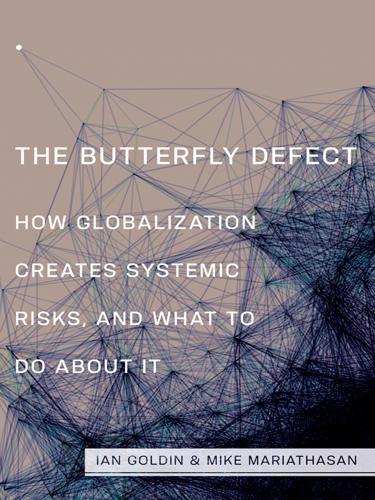
The Butterfly Defect: How Globalization Creates Systemic Risks, and What to Do About It
by
Ian Goldin
and
Mike Mariathasan
Published 15 Mar 2014
However, it soon became obvious from the continuing proliferation of cholera that these isolated quarantines were having little effect; lack of coordination meant that they could not achieve their goals, and the restrictions on commercial travel imposed a substantial and ineffective burden on the U.S. economy. Following the failure of national governments to deal with the cholera pandemic, in 1834 the French issued a call for international coordination. Though laudable, this appeal was largely unanswered and cholera continued to spread, culminating in further pandemics in 1848 and 1849. As the effects of these new cholera outbreaks rippled through the world, governments started to realize the essential value of international cooperation in fighting the disease.
…
GLOBAL COOPERATION AND DISEASE CONTROL Arhin-Tenkorang and Conceição claim that “health concerns have triggered systematic international cooperation for more than 150 years” and that international cooperation on health issues is older and runs deeper than military cooperation or collaboration in areas such as trade and finance.68 This suggests that there are lessons to be learned from this chapter in terms of how global governance can develop over time to address other systemic risks associated with globalization. A Brief History Arhin-Tenkorang and Conceição discuss the case of a cholera pandemic in the early nineteenth century.69 They document how, after its nascence in India in 1826, cholera took just one year to spread to Russia. From there, within five years the pathogen had reached Germany, Hungary, and Austria. Within the next year, it hit Paris, London, and eventually New York. Just seven years after its initial outbreak, in a world where trans-Atlantic transportation was limited to ships if it occurred at all, cholera had enveloped the U.S. Pacific coast and Mexico. In an effort to stem the spread of the disease, public policy in the United States began to favor strict quarantines of foreign arrivals.
…
Treasury, with Treasury secretaries often recruited following a period at the helm of one of the major U.S. banks and returning afterward to a chairmanship or other lucrative advisory position in the financial services industry. Treasury secretaries since 2001 with links to finance and industry include Paul O’Neill (Alcoa, Rand Corporation), John Snow (CSX Corporation, Cerberus Capital Management Group), and Henry Paulson (Goldman Sachs). In addition, U.S. authorities had substantially deregulated loan products by means of the Depository Institutions and Monetary Control Act of 1980 and the Alternative Mortgage Transaction Parity Act of 1982. 37.
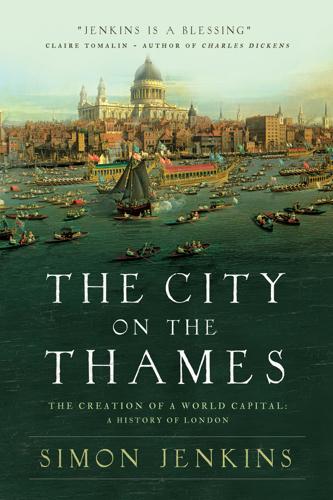
The City on the Thames
by
Simon Jenkins
Published 31 Aug 2020
So powerful were the City’s ancient monopolies that these markets remained in being into the 1970s, with Smithfield still operating in the twenty-first century. London still lacked the means of fully enforcing Chadwick’s reforms, and, for the time being, cholera and typhus retained their grip. In 1854 a doctor in Soho, John Snow, noted that incidence was highest among users of a certain pump in Broad Street (now Broadwick), clearly contaminated by a local cesspit. Yet incidence was low among those drinking from fresh-water conduits. Disease was also rampant among those in Southwark drinking water from the polluted Thames. Cholera was unquestionably linked with water. The science of epidemiology was born. In 1855 parliament finally set up a new Metropolitan Board of Works (MBW), making it formally responsible for all sewers and other infrastructure throughout the capital.
…
A cleaner London By the time of the Westminster fire, a new plague, cholera, was becoming virulent, an outbreak in 1832 causing 5,000 deaths in the capital alone. An intense debate ensued about the cause, whether it lay in London’s water supply, or in the air, the fog or human transmission. Constant inquiries and commissions had demanded improvements to sanitation, water supply and sewerage. All went unanswered. The campaign for reform was then taken up by a forceful Mancunian, Edwin Chadwick, who had served on the 1834 Poor Law Commission, and now turned his attention to London’s sewers. Efforts to counter cholera by flushing sewers faster into the Thames only made matters worse, by draining cesspits straight into the river.
…
Parliament was sympathetic but found itself fighting, as so often before, against a reluctant City and reactionary vestries, fearful of any change that might involve increasing their rates. The City had London’s highest cholera death rate, yet declared its sanitation ‘perfect’. There were now some 300 local government bodies in the metropolis, guided by 250 acts of parliament, each able to pass the blame to another. One street, the Strand, had seven different paving boards. London’s government was chaotic, yet the innovations of 1832 had passed it by. The result was that, for all Chadwick’s lobbying, nothing happened. The cholera crisis seemed to pass, for a while. The rage of the train We are fortunate to have a precise and precious record of the appearance of the metropolis on Victoria’s accession in 1837.
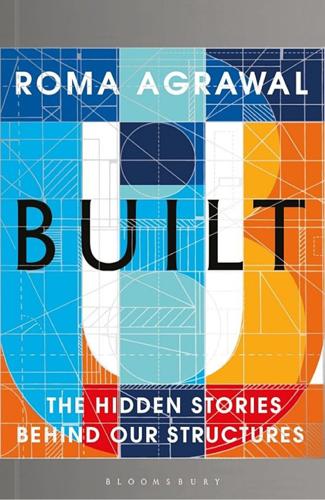
Built: The Hidden Stories Behind Our Structures
by
Roma Agrawal
Published 8 Feb 2018
The vile mixture of waste and water in London led to severe and devastating cholera epidemics. They usually struck in late summer or autumn, and half of the people who contracted the disease died. The outbreak in 1831–2 killed more than 6,000 people; it was followed by two more major outbreaks in 1848–9 (just over 14,000 dead) and 1853–4 (another 10,000 fatalities). The common belief at the time was that cholera was airborne and that you contracted it by inhaling a poisonous ‘miasma’. But during the 1854 outbreak Doctor John Snow (1813–1858) monitored the health of people drawing water from a contaminated pump in Soho, and collected evidence that this was not the case: cholera was, in fact, spread by contaminated drinking water.
…
But during the 1854 outbreak Doctor John Snow (1813–1858) monitored the health of people drawing water from a contaminated pump in Soho, and collected evidence that this was not the case: cholera was, in fact, spread by contaminated drinking water. Thomas McLean’s etching ‘Monster Soup commonly called Thames Water’ of 1828 was a grotesque satire on the city’s water supply. That London’s waste was ruining the capital became particularly apparent during the unusually hot summer of 1858, which warmed up the banned but festering cesspits and the sewage-filled Thames and its tributaries, so that the city smelled even more horribly pungent than usual. And so the ‘Great Stink’ (as it was called) began. It became so unpleasant that people soaked their curtains in a lime chloride mixture to try and hide the stench.
…
The smells were so noxious that ministers working in the House of Commons, and the lawyers at Lincoln’s Inn, were unable to work, and they made plans to abandon the city. The only upside of all this was that, having been affected by the awful conditions first-hand, the government finally became determined to get rid of the stench and the cholera that came with it. In 1859, after years of rejecting plans from engineers to solve the sewage problem in London, officials finally approved the works proposed by Joseph Bazalgette. Bazalgette was described as having an indifferent temperament but a pleasant and genial smile. He was considerably below average height but his long nose, keen grey eyes and black eyebrows gave him the impression of being a powerful man.
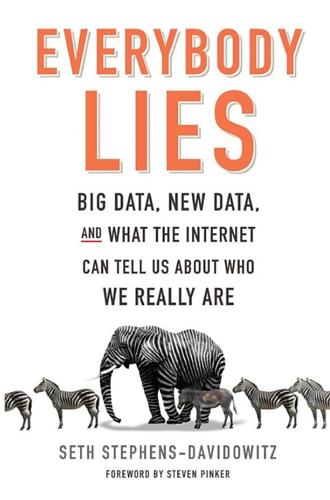
Everybody Lies: Big Data, New Data, and What the Internet Can Tell Us About Who We Really Are
by
Seth Stephens-Davidowitz
Published 8 May 2017
Presidential Election,” May 2, 2016, available at http://bridge.georgetown.edu/when-islamophobia-turns-violent-the-2016-u-s-presidential-elections/. CONCLUSION 272 What motivated Popper’s crusade?: Karl Popper, Conjectures and Refutations (London: Routledge & Kegan Paul, 1963). 275 mapped every cholera case in the city: Simon Rogers, “John Snow’s Data Journalism: The Cholera Map That Changed the World,” Guardian, March 15, 2013. 276 Benjamin F. Jones: I interviewed Benjamin Jones by phone on June 1, 2015. This work is also discussed in Aaron Chatterji and Benjamin Jones, “Harnessing Technology to Improve K–12 Education,” Hamilton Project Discussion Paper, 2012. 283 people tend not to finish treatises by economists: Jordan Ellenberg, “The Summer’s Most Unread Book Is . . . ,” Wall Street Journal, July 3, 2014.
…
The research discussed here is the tip of the tip of the iceberg, a scratch on the scratch of the surface. So what else is coming? For one, a radical expansion of the methodology that was used in one of the most successful public health studies of all time. In the mid-nineteenth century, John Snow, a British physician, was interested in what was causing a cholera outbreak in London. His ingenious idea: he mapped every cholera case in the city. When he did this, he found the disease was largely clustered around one particular water pump. This suggested the disease spread through germ-infested water, disproving the then-conventional idea that it spread through bad air.
…
Keith, 235 Chetty, Raj, 172–73, 174–75, 176, 177, 178–80, 185, 273 children abuse of, 145–47, 149–50, 161 and benefits of digital truth serum, 161 and child pornography, 121 decisions about having, 111–12 height and weight data about, 204–5 of immigrants, 184–85 and income distribution, 176 and influence of childhood experiences, 165–71, 165–66n, 206 intelligence of, 135 and origins of notable Americans, 184–85 parent prejudices against, 134–36, 135n physical appearance of, 135–36 See also parents/parenting; teenagers cholera, Snow study about, 275 Christians, and truth about hate and prejudice, 129 Churchill, Winston, 169 cigarette economy, Philippines, 102 cities and danger of empowered government, 267, 268–69 predicting behavior of, 268–69 zooming in on, 172–90, 239–40 Civil War, 79 Clemens, Jeffrey, 230 Clinton, Bill, searches for, 60–62 Clinton, Hillary.
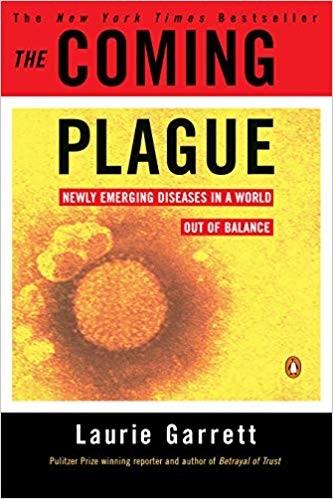
The Coming Plague: Newly Emerging Diseases in a World Out of Balance
by
Laurie Garrett
Published 31 Oct 1994
The fact that, without exception, cholera and other epidemic diseases—including tuberculosis—took their greatest toll among the most impoverished residents of the world’s metropolises seemed only to reinforce the belief by those in power from Moscow to Madrid that lower-class “immorality” was the root of disease. During London’s devastating 1849 cholera epidemic, physician John Snow demonstrated that cholera was transmitted via water by removing the handle of the Broad Street pump, the sole water source for an impoverished and cholera-ridden community. The local epidemic, of course, came to a halt. Authorities were unconvinced, however, so during London’s 1854 epidemic Snow mapped cholera cases and traced their water supplies. He showed that those neighborhoods with little cholera were receiving water drawn from the upper Thames, while cholera-plagued areas drew their water from the lower Thames, which included human waste from upstream.
…
It had spread across much of the coastal region of the Bay of Bengal, encompassing the Indian metropolises of Calcutta, Madras, Vellore, and Madurai, as well as most of southern Bangladesh.44 This new Bengal cholera appeared to be spreading far faster than the Seventh Pandemic. It took three years for that cholera strain to spread from India to Thailand, but the Bengal cholera had already turned up in Thailand’s capital, Bangkok, by mid-1993, and threatened to spread nationwide, according to researchers from Mahidol University in Bangkok. In March the leading hospital in Dhaka was treating 600 Bengal cholera cases a day—three times their normal daily cholera rate. In rural parts of Bangladesh cholera victims were reportedly falling ill at rates up to ten times those seen with the previous year’s classic cholera outbreak.
…
Anderson, “Cholera Epidemic Traced to Risk Miscalculation,” Nature 354 (1991): 255; Colwell and Spira (1992), op. cit.; World Health Organization, “Cholera Alert in Latin America,” Press Release, WHO/8/12 February 1991; “Cholera in the Americas,” Bulletin of the Pan American Health Organization 25 (1991): 267–77; Centers for Disease Control, “Cholera Outbreak—Peru, Ecuador, and Colombia,” Morbidity and Mortality Weekly Report 40 (1991): 225–27; E. W. Rice and C. H. Johnson, “Cholera in Peru,” Lancet 338 (1991): 455; V. M. Witt and F. M. Reiff, “Environmental Health Conditions and Cholera Vulnerability in Latin America and the Caribbean,” Journal of Public Health Policy (Winter 1991): 450–63; M.
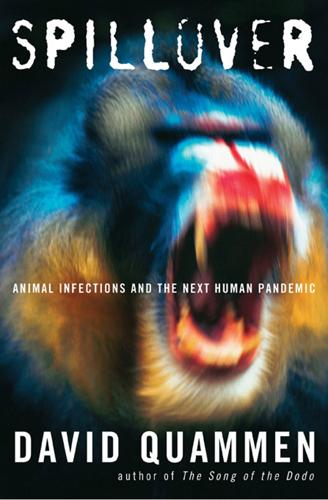
Spillover: Animal Infections and the Next Human Pandemic
by
David Quammen
Published 30 Sep 2012
Bernoulli’s work, applying mathematics to understand disease, pioneered an approach but didn’t create an immediate trend. Time passed. Almost a century later, the physician John Snow used statistical charts as well as maps to demonstrate which water sources (notably, the infamous Broad Street pump) were infecting the most people during London’s cholera outbreak of 1854. Snow, like Bernoulli, lacked the advantage of knowing what sort of substance or creature (in this case it was Vibrio cholerae, a bacterium) caused the disease he was trying to comprehend and control. His results were remarkable anyway. Then, in 1906, after Louis Pasteur and Robert Koch and Joseph Lister and others had persuasively established the involvement of microbes in infectious disease, an English doctor named W.
…
Through further corridors, other doors, more saluting guards, I found my way to the next interview. The Cholera Hospital was founded in 1962, as a clinical adjunct to an earlier Cholera Research Laboratory, both of which were eventually bundled into the ICDDR,B. The hospital provides free treatment to more than a hundred thousand patients each year, not only for cholera but also for blood dysentery and other diarrheal diseases. Most of its patients are children under the age of six. Eighty percent of those children arrive at the hospital malnourished. I can’t tell you how many survive. I can’t even tell you how many cholera cases occur annually when the flood season in Bangladesh brings infected waters up into villages and slums, because most cases go unreported and there is no systematic national tally.
…
Sazaly), 317–18, 319 acarologists, 250 Acholi people, 88, 90 adenine, 156, 270, 306, 309 Advisory Committee on Dangerous Pathogens, British, 275 Aedes aegypti, 23, 43 Afghanistan, 22 Africa: Central, see Central Africa East, 360, 471, 483 southern, 483 sub-Saharan, 24, 136, 399 West, 402, 404, 471, 483 African green monkey (Chlorocebus), 396–97, 398–99 African horse sickness (AHS), 16–17, 18 Afzelius, Arvid, 240 agriculture, invention of, malaria and, 137–38, 139 AIDS, 67, 274, 385–489, 511 in chimpanzees, 466, 469, 474–77 emergence of, 42, 43, 385–90, 407–89 in gay men, 42, 385–86, 390, 391, 407, 489, 519 geographical dissemination of, 482–89 in Haitians, 386–87, 389, 484–88 in hemophiliacs, 390, 391, 489 Kinshasa emergence of, 428–29, 430–31, 462, 463, 477–78, 481–84 as pandemic, 24, 41–42, 290, 403, 437, 477, 512 R0 of, 390, 429, 431, 445, 462 sexual mores and, 429, 463, 478 sexual transmission of, 388, 391, 463, 480 syringe reuse and, 390, 391, 463, 478–82, 489 threshold density of, 480 transmissibility of, 388 as zoonotic disease, 14, 21, 381, 385, 477 see also HIV-1 Ailes, Elizabeth, 465 Amazon basin, 515 Amman, Brian, 352–55, 364–65 Ammann, Karl, 434, 437 amplifier hosts, 34, 36, 191, 195, 236, 314, 316–17, 319–20 Anderson, Roy M., 302, 303–6, 518 And the Band Played On (Shilts), 387–88, 486 Ang, Brenda, 176–77, 179–81, 207 Angola, 483 Annapolis, Md., 212, 214 Anopheles mosquitoes, 135–36, 138, 146 A. latens, 158, 161 A. leucosphyrus, 161, 163 DDT resistance in, 147 anthrax, 21, 24, 102, 265, 517 anthroponosis, 67 antibiotics, 290 as ineffective on viruses, 24, 211, 269 antibodies, effectiveness of, 350 antibodies, screening for, 424, 425 to Ebola, 65, 66, 74, 91, 115, 351, 371 to Hendra, 27, 28, 31, 32, 48–49 to herpes B, 278–79 to HIV, 397, 403 to Marburg, 356 to Nipah, 320, 322, 331 to SFV, 288–89 to SIV, 396, 467 Argentina, 214, 216 Armstrong, Charles, 215 asmani bala (curse of Allah), 376, 378 atoxyl, 480 Atsangandako, Catherine, 123 Auerbach, David M., 388, 389 Austin, Thomas, 298 Australia: Hendra virus in, see Hendra virus human habitation of, 37 land clearance in, 369, 515 myxoma virus in, 298–302, 305–6 psittacosis in, 216–19 Q fever in, 219–20 Australian Animal Health Laboratory (AAHL), 18–19, 25, 28, 319 Australian bat lyssavirus, 314, 367 avian (bird) flu, see H5N1 virus bacteria, 23, 24, 40, 102, 265, 290 intracellular, 230 viruses vs., 211 zoonotic, 211–59 see also pathogens bacterial diarrhea, 325 Bakola people, 87–88, 89–90 Bakwele people, 436–37 Bali, 277–78, 286, 288 Balkan grippe, 221–22 Balo, Estelle, 123–24 Balo, Prosper, 65, 66, 122, 123–24 Bambendjellé people, 55 banded leaf monkeys, 161, 162 Bangalore, India, 128 Bangladesh, 163, 281 Nipah virus in, 325–42, 514 population density of, 325, 330 bar-headed goose, 509, 510 Barnes, Michelle, 360–63, 364 Barré-Sinoussi, Françoise, 393 basic reproduction rate, see R0 bats: diversity of, 348–49 evolution of, 349–50 as Hendra reservoirs, 27, 30–31, 37, 43, 48, 115, 313, 331, 351, 366–67, 499 immunology of, 347–48, 350–51 insectivorous, 350 as Marburg reservoirs, 313, 351–65, 370, 372 mark-recapture tagging of, 355, 365 as Nipah reservoirs, 322, 323–25, 327, 331–32, 334, 351, 514–15 as possible Ebola reservoirs, 115–16, 122, 313–14, 351, 370, 371–72 as rabies reservoirs, 31, 313, 351 as SARS reservoirs, 194–96, 199–202, 206, 313, 334, 347, 351, 514–15 as virus reservoirs, 313–14, 345–51, 514–15 “Bats: Important Reservoir Hosts of Emerging Viruses” (Calisher et al.), 348–51 Beijerinck, Martinus, 265–66 Beijing, SARS in, 168 beka (initiation ceremony), 436–37 Belgian Congo, see Congo, Democratic Republic of the Belgium, 484 Berlin Union of Canary Fanciers, 214 Bernoulli, Daniel, 130–31 Berryman, Alan A., 496 Besselink, Rob, 223–24, 225–26 ß (transmission rate), 374 Bhutan, 163 Biek, Roman, 117, 121 Bill and Melinda Gates Foundation, 518 biogeography, 256–59 biohazard level 4, 275–76 biological and chemical weapons, 97 Biological Aspects of Infectious Disease (Burnet), 235–36 biological diversity, 23, 255–56 biosafety level 3 (BSL-3) laboratories, 102, 230, 412 biosafety level 4 (BSL-4) laboratories, 74, 102–5, 110, 111, 275, 356 bioterrorism, 227, 513 bird flu, see H5N1 virus birds, influenza in, 313, 314, 505–6, 507–10 Black Death, 63, 290, 496 blacklegged ticks, see deer (blacklegged) tick blood plasma trade, 485–86 blood transfusions, hepatitis B and, 388 Blumenthal, Richard, 239 Bobangi people, 458–60 Boesch, Christophe, 79 Bolivia, 38–39, 69–70 Bolivian hemorrhagic fever, 21 bonobo (Pan paniscus), 139–40 Booué, Gabon, 61–62, 73, 81, 117 Borna, 24 Borneo, 153, 160 deforestation of, 161–62, 515 Borrelia burgdorferi, 213, 238–39, 240, 244, 246, 251, 256, 257 as bacterium, 258–59 humans as dead-end hosts of, 253 life history of, 213, 248, 249–51, 255 noninheritability of, 251 round-body form of, 258–59 B. duttonii, 243 Boumba Bek National Park, Cameroon, 435 bovine tuberculosis, 21 Bradshaw, Bob, 17 Brazzaville, ROC, 429–30, 432, 461–62, 463, 477 Brebner, William, 272–74, 278, 286 Brisbane, Australia, 13, 211, 219 British Columbia, 498 Brownie (horse), 46–48 Brownlee, John, 132–33, 134, 518 Brundtland, Gro Harlem, 169 Brunner, Jesse, 254–55, 257 bubonic plague, see plague Buddhist temples, macaques at, 24, 276–77 Buenos Aires, Argentina, 214 Bumba Zone, 69, 71 Bundibugyo, Uganda, 84 ostracism of, 86 Bundibugyo virus, 84–87 unanswered questions about, 86 Burgdorfer, Willy, 213, 243–44 Burke, Donald S., 512–13, 514 Burnet, Frank Macfarlane, 216–17, 268, 302, 304, 346, 505 infectious disease theories of, 234–37, 295–96 psittacosis and, 217–19, 236–37 Q fever and, 219–20, 221–22, 231, 234, 264 Burundi, 414 bushmeat, 344, 413, 432, 434, 451–52, 515 great apes as, 53, 57, 67, 89, 435–37, 438–39, 451 Buy’em–Sell’ems, 435, 447–48, 449–50 “BW” (surveyor), 151–53, 157, 160 Bwindi Impenetrable Forest, 357, 360 Cairns, Australia, 45–48 Calisher, Charles H., 345–46 Cambodia, 163 camels, rabies in, 296–97 Cameroon, 71, 478, 480 HIV in, 406 as locus of HIV spillover, 42, 425, 426–31, 437, 463, 471, 477 logging in, 433–35 poaching in, 432–33, 438 Candida yeast, 385–86, 389 canine distemper virus, 19 Cannon Hill paddock, 14, 19–20, 27–28, 29, 30, 45 Cape Verde, 398 capsids, 268, 269, 270 Carlsbad Caverns, 350 Carroll, Serena, 352 Cary Institute of Ecosystem Studies, 247 Cat’s Cradle (Vonnegut), 24 cattle, FMD in, 35–36 CD4 protein receptor, 443 Center for Infectious Disease Dynamics, 306 Centers for Disease Control and Prevention (CDC), 39, 89, 186, 190, 377, 513 AIDS and, 388, 488 BSL-4 labs at, 74, 356 Division of Vector-Borne Diseases, 318 Ebola and, 69–70, 72, 73, 74, 76 Special Pathogens Branch, 70, 93, 352 Central Africa, 40, 68, 293 biological survey of, 54, 59–60 ebolavirus outbreaks in, 53–54, 56–57, 60–63, 68, 86, 118–19 gorillas in, 67–68 HIV in, 406, 483 as locus of HIV-1 spillover, 396, 423 trypanosomiasis innoculations in, 478–81 Central African Republic, 438, 483 Central Veterinary Institute, Netherlands, 230 Centre International de Recherches Médicales de Franceville (CIRMF), 54, 56, 59, 67, 114, 117, 403 Cercocebus atys (sooty mangabey), 399–401, 404, 406, 413 Ceylon, see Sri Lanka Chandpur, Bangladesh, 326, 328 Chashnipeer, 282 Chashnipeer Majar, 280–85, 287 Chatou Wildlife Market, 188, 191, 197 chickenpox, 67, 308 chikungunya, 24, 270, 307 Childs, James E., 348 “Chimpanzee Reservoirs of Pandemic and Nonpandemic HIV-1” (Keele et al.), 427–28 chimpanzees (Pan troglodytes), 42, 120 AIDS in, 466, 469 bushmeat from, 53, 57, 435–37, 451 central (P. t. troglodytes), 423, 425, 428 eastern (P. t. schweinfurthii), 424 ebolaviruses in, 53, 54, 79–80 as HIV reservoirs, 313, 403–5, 423 malaria in, 138–39 P. t. vellerosus, 425 SFV in, 288 SIV in, see simian immunovirus (SIV), in chimpanzees Chimpanzees of Gombe, The (Goodall), 468 China, 514–15 A. leucosphyrus in, 163 blood plasma donors in, 486 Era of Wild Flavor in, 187–88, 191, 197–98, 433 polio in, 22 SARS in, 44, 168–74, 207, 374 China Airlines flight 112, 168, 169 China Syndrome (Greenfeld), 187 Chinese bamboo rats, 203–5, 206 chipmunks, deer ticks and, 252 chlamydia, 183, 186 Chlamydophila psittaci, 216, 237, 238 Chlorocebus (African green monkeys), 396–97, 398–99 Chmura, Aleksei, 196–205, 206, 208, 333, 514 cholera, 131, 237, 265, 325, 380, 381 Cholera Hospital, Dhaka, see ICDDR,B Chua, Paul, 317–18, 319, 324, 334 Cipro, 362 Ciuca, Mihai, 149–50, 151, 157, 480 civet cat (Paguma larvata; masked palm civet), 187, 189–91, 192–93, 195, 198, 206, 343 classical swine fever (hog cholera), 316 “Coevolution of Hosts and Parasites” (Anderson and May), 304–5 Colorado State University, 345–46 Columbia University, 514 common cold, 35, 270 common tern (Sterna hirundo), 505, 507 Congo, Democratic Republic of the (DRC; Zaire), 139–40, 414, 417, 478 Ebola in, 69–75, 76–77, 118, 370–73 emergence of AIDS pandemic in, 389, 407, 428–29, 430–31, 462, 463, 477–78 Haitians in, 484–85 Congo, Republic of the (ROC), 53, 55, 426, 432, 438, 439, 450, 466 Ebola in, 63, 115, 118, 120 emergent AIDS cases in, 429–30 logging in, 439 Congo basin, 431, 434, 515 Congolese Red Cross, 481 Congo River, 139, 423, 428, 429–31, 460–61, 477 Connecticut Department of Health, 212 Consortium for Conservation Medicine, 194, 196, 333 consumptive coagulopathy, 95–96, 108 “Contribution to the Mathematical Theory of Epidemics, A” (Kermack and McKendrick), 141–44 Cook, James, 37 coronaviruses, 185, 193, 194, 270, 512 Côte d’Ivoire, 60, 79, 82, 359, 406 Cox, Herald, 220–21, 243 Coxiella burnetii, 220, 221–34, 238 as intracellular bacterium, 230 windborne transmission of, 228–29, 259 Cox-Singh, Janet, 153–54, 156, 158–64, 514 crested mona monkey, 112 Crimean-Congo hemorrhagic fever, 94 critical community size (CCS), 129–30, 349 Cuba, yellow fever eliminated from, 263, 266 Cunneen, Ben, 33 Curtis, Tom, 415, 416 Cut Hunter, 442–45, 478 cut-hunter hypothesis, 413, 428, 440, 442–48, 453–62, 466, 478 cytosine, 156, 270, 306, 309 Danish Pest Infestation Laboratory, 74 Daszak, Peter, 514–15 date-palm sap, 329, 331–32 Davis, Gordon, 220–21, 243 DDT, 145, 147 dead-end hosts, 83, 164, 294, 343, 373, 480 de Bruin, Arnout, 227–30 deer (blacklegged) tick (Ixodes scapularis), 212–13, 241–42, 243, 244–47, 257 diverse hosts of, 249 life history of, 242, 248–50, 252, 255 as Lyme disease vector, 212–13, 241–42, 255 questing by, 250, 252 Defense Advanced Research Projects Agency (DARPA), 513–14 deforestation, 40, 67, 161–62, 163, 276, 433–35, 515 Delhi, India, 276 Delta Regional Primate Research Center, 400–401 Den Bosch, Netherlands, 224 dengue, 21, 24, 43, 270, 292, 307, 314, 346 Derrick, Edward H., 219, 220 Desmond, Jim, 334, 339–40 Desowitz, Robert S., 151 Dhaka, Bangladesh, 325, 328, 334, 375, 379 diarrhea, 291, 380–81 bacterial, 325, 330 diphtheria, 237, 414 disease, see infectious disease Dispensaire Antivénérien, 481–83 disseminated intravascular coagulation (DIC), 95–96, 108 DNA: attributes of, 154, 156, 270 filter-paper collection technique for, 158–59, 514 in retroviruses, 391, 443 DNA polymerase, 270, 309 Dongmen Market, 188, 189, 191 Dongmo, Zacharie, 435–36 Dover, Mass., 246–47 Dowhan, Joe, 241–42 DPI, see Queensland Department of Primary Industries Drama Series (horse), 14–16, 19, 27, 43, 45 DRC60, 409–13, 417, 419, 420–21, 431, 482, 488 Drori, Ofir, 432–33, 435 Duerr, Shannon, 254–55 Dugas, Gaëtan (Patient Zero), 387–89, 407, 443, 489 duikers, 89, 120, 432, 451 Dutchess County, N.Y.: biogeography of, 257 Lyme disease in, 253–54 Duvalier, François “Papa Doc,” 484, 486 Duvalier, Jean-Claude “Baby Doc,” 486 Duvenhage, 313 Dwyer, Greg, 499–503, 518–19 Dyer, Rolla, 221 Eating Apes (Peterson), 434 Ebola River, 69 Ebola virus (Zaire ebolavirus), 24, 39, 40, 76, 182, 285, 307, 343, 352, 359, 362, 365, 403, 489, 511, 512 in apes, 62–63, 120, 121 bats as possible reservoirs of, 115–16, 122, 313–14, 351, 370, 371–72 Booué outbreak of, 61–62, 73, 81, 117 DIC and, 95–96, 108 ecology of, 115–17 evolutionary history of, 115, 116 exaggerated descriptions of, 92–94, 95, 502 genetic differences in, 119–20 genome of, 110 geographical dissemination of, 117–22, 431 in gorillas, 59, 68, 91–92, 120, 122, 124, 304 Ivindo goldmining camp outbreak of, 61, 87, 117 Kikwit outbreak of, 72–75, 80, 91–92, 93, 113, 117 laboratory accidents involving, 97–110 lethality rate of, 54, 62, 63, 73, 76, 82, 110–11 Luebo outbreak of, 370–73 Mayibout 2 outbreak of, 53–54, 56–57, 60, 61, 72, 73, 80–81, 112–13, 114, 117, 443 Mbomo outbreak of, 89–91, 92, 118, 122–24 mutation rate of, 119 and ostracism of victims’ relatives, 123 pathology of, 94–96 RNA of, 108 search for reservoir hosts of, 68, 69, 70–72, 74, 75, 76, 112, 114, 115–16, 118–19, 121–22, 293, 313–14, 351, 370, 371–72 secondary cases of, 53–54 as sorcery, 87–91 symptoms of, 94 Tandala outbreak of, 76–77, 117 total fatalities from, 91–92 transmission mechanics of, 62, 292–93 virions of, 268–69 Yambuku outbreak of, 69–72, 73, 76, 97, 117, 119–22 Ebola virus (Zaire ebolavirus), spillover mechanism of, 111, 115, 116–17 “particle” hypothesis for, 118, 120–22 “wave” hypothesis for, 118–20 ebolaviruses, 53–124 Bundibugyo, 84–87 in chimpanzees, 53, 54, 79–80 forests linked to, 75 genomes of, 84–85 geographical dissemination of, 68, 76, 86–87, 117 hiding ability of, 74–75, 111 humans as dead-end hosts for, 83, 164, 285, 343, 373 immune system suppression by, 94–95, 114–15 lethality of, 54, 62, 63, 73, 76, 81–82, 90, 370 paucity of scientific understanding of, 87, 96 reservoir hosts of, 75, 82, 85, 86, 370 Reston, 77–78, 81, 86–87 species of, 176 sporadic outbreaks of, 72, 75 Sudan, see Sudan ebolavirus Taï Forest, 79–80, 82, 87 transmission chain of, 82–83 as zoonoses, 21 EcoHealth Alliance, 64, 196, 333, 514 ecosystems: diversity of, 23 human-caused disruption of, 23, 40, 41, 62, 67, 161–62, 163–64, 237, 258, 343, 344–45, 369, 433–35, 439, 515–16 infectious diseases as, 247, 251 Edinburgh, University of, 44, 45 Edward, Lake, 360 Egypt, H5N1 in, 510 Egyptian fruit bat (Rousettus aegyptiacus), 352–53, 355–56, 358, 372 Eigen, Manfred, 309 Eigen’s paradox, 309 electron microscopy, 318 emergence, definition of, 42–43 Emerging Infectious Diseases, 42 encephalitis, 28 endangered species, human consumption of, 188 Engel, Gregory, 277–80, 284–85, 288–89 England, Ebola accident in, 97–99 enteroviruses, 292 epidemics: cyclical pattern of, 132–35 depletion of susceptibles in, 134 fatality rate in, 142–44 immunity in, 142 infection rate in, 142–44 likelihood of, 374 mass action principle of, 132 in nonhuman populations, 512–13 recovery rate in, 142–44 SIR model of, 143–44, 303, 367, 368 threshold density in, 36, 144, 480 see also infectious disease; pandemics epidemiologists, 129 Epomops franqueti (Franquet’s epauletted fruit bat), 371 Epstein, Jon, 333–38, 339–45, 356, 375, 514–15 Equatorial Guinea, 406 equine infectious anemia virus, 297 Era of Wild Flavor, 187–88, 191, 197–98, 433 erythema migrans, 240, 241 Escalante, Ananias A., 139, 148–49 Essex, Myron “Max,” 394–98, 416 Ethiopia, 483 Etouck, Sophiano, 56–57, 112–13 Europe, AIDS in, 406 European Center for Disease Prevention and Control, 513 European Community, 225 evolution, 23, 136–39, 164, 301, 360, 398, 507, 517 of bats, 349–50 of Ebola, 115, 116 evolution (continued) of HIV, 418, 420–22, 463, 477 of pathogens, 235–37, 302–10, 344–45, 366–69, 499, 515–17 of viruses, 24, 36–37, 82, 206, 264, 287, 292, 297, 299, 302–10, 322, 343, 344–45 of zoonoses, 344–45, 515–17 Evolution and Emergence of RNA Viruses, The (Holmes), 307 ezanga (evil spirits), 87–88, 89–90 Faridpur District, Bangladesh, 328, 334, 375–79 Faroe Islands, measles epidemic on, 264 Fay, Mike, 54–56, 59–60, 63, 111–13, 431 fecal sampling, 424–25, 426, 471–72 Feeroz, Mohammed Mustafa, 280–81, 283, 285 feline immunodeficiency virus (FIV), 297 feline leukemia virus (FeLV), 392, 394 femmes libres (free women), 430, 481–82, 484 Fenner, Frank, 300–302, 305, 346 Field, Hume, 26, 45, 194, 348 in search for Hendra virus reservoirs, 26–32, 319 in search for Nipah reservoir, 319, 320, 322, 367 filoviruses (Filoviridae), 70, 77, 116, 120, 268, 270 First Fleet, 37 flying foxes (Pteropus), 27, 31, 366–67 black (P. alecto), 31, 367 grey-headed, 31–32, 367 as Hendra reservoirs, 27, 30–32, 37, 43, 45, 48, 115, 331, 351, 366–67, 499 Indian (P. giganteus), 331, 336, 338 large (P. vampyrus), 324 little red, 366–69 as Nipah reservoirs, 322, 323–25, 327, 331–32, 334, 351, 367, 514–15 spectacled, 367 variable (P. hypomelanus), 324 foot-and-mouth disease (FMD), 35–36, 230, 266 Formenty, Pierre, 352, 353–54 Foshan, China, 170 Franceville, Gabon, 54, 114, 117, 370, 403 Frankfurt, Germany, SARS in, 181 Franquet’s epauletted fruit bat (Epomops franqueti), 371 free women (femmes libres), 430, 481–82, 484 French Equatorial Africa (FEA), 479–80 Friedman-Kien, Alvin E., 386, 389, 390 Froesch, Paul, 266 fruit bats, 350 as possible Ebola reservoirs, 115–16, 122, 293 Fujian province, China, 183 Fujita, Norman K., 362, 363 fungi, 23, 40 Gabon, 478 AIDS in, 406 Ebola in, 53–55, 56–57, 60, 61–63, 72, 73, 80–81, 90, 111–13, 115, 117–18, 120 gachis (date-palm tappers), 332–33 Gallo, Robert, 391–93, 394 gametocytes, 136, 138 Gao, Feng, 423, 424 gemo (evil spirits), 88–89, 90 Germany, psittacosis in, 214 germ theory of disease, 130, 265, 517 Ghana, 406 Gibraltar, 408 Gilbert, Tom, 487–88 Gimble (chimpanzee), 468, 470, 471, 472 Global Viral Forecasting Initiative (GVFI), 514 goats: as measles reservoir, 313 Q fever and, 223–34 Gofur (bat catcher), 334, 339, 341 Gombe National Park, Tanzania, 424, 466–77 Gombe Stream Research Center, 468, 473 gonorrhea, 481–82 Goodall, Jane, 424, 466, 467, 468–71 Google, 514 Gorgas, William C., 263, 266 gorillas: bushmeat from, 67, 89, 436, 437, 451 die-offs of, 59–60, 63, 65, 91, 120, 121, 122, 124 Ebola virus in, 59, 68, 91–92, 120, 122, 124, 304 human diseases in, 67–68 see also mountain gorillas; western gorillas Gorinstein, Joseph B., 486 Gottlieb, Michael, 385–86, 389, 390, 407, 489 great apes, 438–39 as bushmeat, 53, 57, 67, 89, 435–37, 438–39, 451 Ebola in, 62–63, 120, 121 see also chimpanzees; gorillas greater spot-nosed monkeys, 464, 465 GreeneChip diagnostic system, 514 Greenfeld, Karl Taro, 187 Guangdong province, China, 169–73, 182–83, 192, 194, 195, 374 “wet markets” in, 188–89, 191, 197–98 Guangzhou, China, 170, 171, 172, 173, 188, 196–97, 208 Guangzhou Institute of Respiratory Diseases, 170, 183 guanine, 156, 306 Guan Yi, 186–87, 189, 190–91, 192, 194, 207 Guholaxmipur, Bangladesh, 375–76 Guilin, China, 197–201, 208 Guinea-Bissau, 397, 402, 406 Gulu, Uganda, 81, 85, 88–89, 92, 93 Gupta, Das, 149 Gurley, Emily, 375–78, 379 gypsy moth (Lymantria dispar), 496, 499, 500–501, 520–21 H1N1 virus, 504 H5N1 virus (bird flu), 21, 182–83, 184, 374–75, 504, 508–11 transmissibility in, 507–8, 510 H5N3 virus, 507 H7N7 virus, 507 habitat alteration, 367, 369 see also ecosystems Hahn, Beatrice, 140–41, 465 and Gombe SIV research, 466–77 in search for origins of HIV-1, 140, 422–25, 427–29, 431, 463, 480, 488 in search for origins of P. falciparum, 140–41 Haiti, blood plasma trade in, 485–86 Haitians, AIDS in, 386–87, 389, 484–88 Hamer, W.
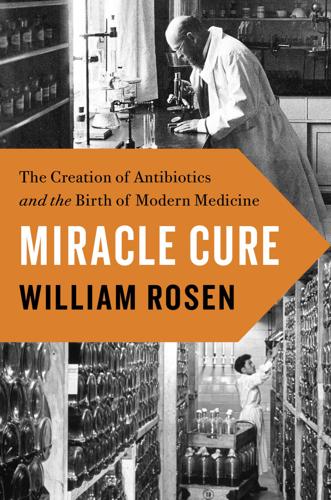
Miracle Cure
by
William Rosen
Published 14 Apr 2017
.* The French physician Pierre Louis examined the efficacy of bloodletting on different populations of patients, thus introducing the practice of medicine to the discipline of statistics. The Swiss mathematician Daniel Bernoulli even analyzed smallpox mortality to estimate the risks and benefits of inoculation (the fatality rate among those inoculated exceeded the benefit in population survival). And John Snow famously established the route of transmission for London’s nineteenth-century cholera epidemics, tracing them to a source of contaminated water. But plotting the disease pathways, and even recording the traffic along them, did nothing to identify the travelers themselves: the causes of disease. More than a century after the Dutch draper and lens grinder Anton van Leeuwenhoek first described the tiny organisms visible in his rudimentary microscope as “animalcules” and the Danish scientist Otto Friedrich Muller used the binomial categories of Carolus Linnaeus to name them, no one had yet made the connection between the tiny creatures and disease.
…
In 1882, Koch discovered the bacterium that caused tuberculosis, an achievement that his colleague Friedrich Löffler called a “world-shaking event” that transformed Koch “overnight into the most successful researcher of all times.”* In 1885 he discovered and identified the bacterium responsible for cholera. Nor did he limit himself to experimental work in his Berlin lab; Koch formulated criteria for managing cholera epidemics, and created, with Löffler, what became known as the “four postulates” of pathology, a diagnostic tool that would link a single pathogen to a single disease. The postulates themselves were plausible and useful. The first states that a pathogen must be found in all organisms that are a disease’s victims, but not in any healthy organisms.
…
In retrospect, this seems modest enough. The germ theory of disease that had been developed and tested by Pasteur, Koch, and Lister himself produced an astonishing number of discoveries about the causes of disease; not merely anthrax, tuberculosis, and cholera—respectively the bacteria known as Bacillus anthracis, Mycobacterium tuberculosis, and Vibrio cholerae—but gonorrhea (Neisseria gonorrhoeae, discovered 1879), diphtheria (Corynebacterium diphtheriae, discovered 1883), bacterial pneumonia (Streptococcus pneumoniae, discovered 1886), gas gangrene (Clostridium perfringens, discovered 1892), bubonic plague (Yersinia pestis, discovered 1894), dysentery (Shigella dysenteriae, discovered 1898), syphilis (Treponema pallidum, discovered 1903), and whooping cough (Bordatella pertussis, discovered 1906).
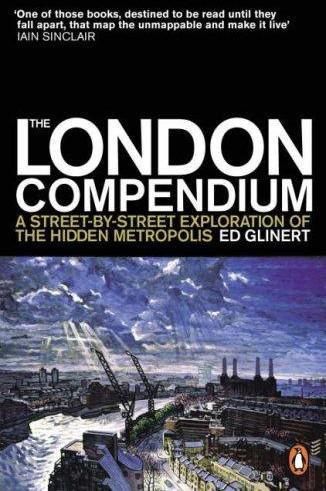
The London Compendium
by
Ed Glinert
Published 30 Jun 2004
In the 1960s the Kray twins ran a number of local clubs and in recent decades Soho’s main criminal gangs have been the Chinese Triads. John Snow and the 1854 cholera epidemic When cholera, which had killed some 10,000 people in various parts of London in 1853, hit Soho the following year John Snow, a local surgeon, announced that the disease was spread through dirty water but had his findings rubbished, particularly by local water companies who claimed it was caused by a ‘miasma in the atmosphere’. When 127 local people died of cholera early in September 1854 Snow began more research and after interviewing the families of those who had died found out that all the victims had drunk from a well on Broad Street (Broadwick Street).
…
Soho’s most celebrated media club, patronized by Julie Burchill, Ben Elton, Damien Hirst and Salman Rushdie. Intrepid Fox, 99 Wardour Street. A haunt of bikers and heavy metal fans and named after the great eighteenth-century Whig politician Charles James Fox. The John Snow, 39 Broadwick Street. A pub built on the site of the surgery where John Snow discovered the source of Soho’s 1854 cholera epidemic. Kettner’s, 29 Romilly Street. A former French restaurant frequented by Oscar Wilde and Edward VII, now owned by Pizza Express. King of Corsica, 90 Berwick Street. A pub named in honour of the Frenchman Theodore Neuhoff, who was invited to become King of the island of Corsica and died in Soho in 1756.
…
When Winston Churchill at the outset of the Second World War ordered that Soho’s Italians be rounded up for internment or deportation, a group of local women marched along Broadwick Street heading for the Italian shops of Old Compton Street, ready to carry out the prime minister’s injunction themselves, but were thwarted by a Rose Blau, who pleaded with them to reconsider, explaining that Soho’s Italians were mostly English-born and did not support Mussolini. The march broke up. The John Snow, No. 39, south side The 1870s pub, originally the Newcastle-upon-Tyne, was built on the site of the surgery run by John Snow, one of the first surgeons to use anaesthetics, who gave Queen Victoria chloroform for the birth of Prince Leopold in 1853 and made startling discoveries concerning the 1850s cholera epidemic. Carnaby Street The centre of British fashion in the 1960s but now selling mainly tourist tat, Carnaby Street was built in the 1680s and named after the local seventeenth-century mansion, Karnaby House.
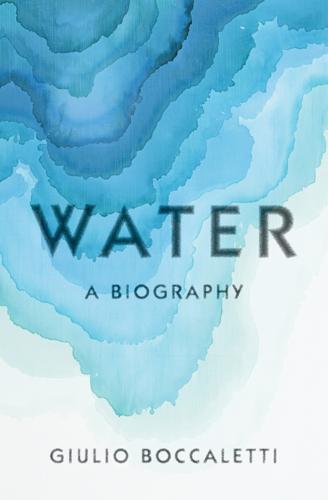
Water: A Biography
by
Giulio Boccaletti
Published 13 Sep 2021
The result was catastrophic. The virus quickly spread from the water supply to all nearby households. The outbreak followed. At the time, people assumed cholera was an airborne disease, spread by the “nauseous fumes” emanating from the poverty-infested slums. John Snow, a local physician, realized fumes had nothing to do with it. He suspected the disease was carried by water, so he mapped all the victims of the disease on a local street map and showed that they all clustered around that single pump. The supply was promptly shut down by removing the pump’s handle and the epidemic ended. Snow’s insight gave birth to modern epidemiology and convinced people that the source of urban disease was polluted water.
…
The British had competed with the French: Malley, “Layard Enterprise: Victorian Archaeology and Informal Imperialism in Mesopotamia.” From it, Jean-François Champollion deciphered: Champollion, Lettre à M. Dacier, 52. In it were fifty preserved mummies: Edwards, “Was Ramases II the Pharaoh of the Exodus?” The outbreak followed: Winterton, “The Soho Cholera Epidemic 1854.” John Snow, a local physician: Snow, On the Mode of Communication of Cholera, 31. The unsanitary conditions highlighted by Snow: Broich, “Engineering the Empire: British Water Supply Systems and Colonial Societies.” In 1866, the Royal Commission on Water Supply: Ritvo, The Dawn of Green, 65. “perpetually striving to amend, the course of nature”: Mill, Nature, the Utility of Religion, and Theism, 32.
…
Nomads needed several hectares per head of cattle and had to constantly relocate, so having too many mouths to feed would have strained their scarce resources. Those limits were not an issue for sedentary communities. More children meant more people to feed, but they were also an insurance policy against early mortality. Living in settlements inevitably increased exposure to water-borne diseases like dysentery and cholera. A number of diseases crossed over to humans from the animals that lived with them. As a result, sedentary communities entered a demographic regime of high fertility and high mortality, through which the population developed resistance. This gave sedentary populations a competitive advantage over others.

Lifespan: Why We Age—and Why We Don't Have To
by
David A. Sinclair
and
Matthew D. Laplante
Published 9 Sep 2019
Perhaps the most important of the reforms, however, was in the field of public health, beginning in 1854 with the physician John Snow’s rebellion against the entrenched medical view that cholera was caused by miasma, or “bad air.” By talking to residents and triangulating the problem, Snow had the Broad Street pump’s handle removed. The epidemic soon ended. Government officials were quick to replace the pump handle, in part because the fecal-oral route of infection was too horrific to contemplate. Finally, in the eventful year of 1866, Snow’s chief opponent, William Farr, was investigating another cholera outbreak and came to the realization that Snow was right.
…
His paper “A Mathematical Theory of Communication” (1948) solved problems of information loss and its restoration, concepts that laid the foundation for the TCP/IP protocols that run the internet. His hero was Thomas Edison, who he later learned was his relative. JOHN SNOW (March 15, 1813–June 16, 1858): English anesthesiologist and leader in the adoption of anesthesia and medical hygiene; best known for his work tracing the source of a cholera outbreak arising from the Broad Street pump in Soho, London, in 1854. LEO SZILARD (February 11, 1898–May 30, 1964): Hungarian-born American physicist and humanist who proposed the DNA Damage Hypothesis of Aging.
…
A sewer system intended to take human waste away from the richer neighborhoods of central London did just that—sending it into the River Thames, where it flowed east past the Isle of Dogs toward the poorer quarters, where people drew the water to wash and drink.43, 44 In those squalid conditions, it should come as little surprise that cholera could spread with devastating speed. And it had, with three large outbreaks so far that century, in 1831, 1848, and 1853, claiming more than 30,000 lives, with thousands more lost to smaller outbreaks during the intermediate years. The Final Catastrophe, as it came to be known, was focused almost exclusively on the inhabitants of Soho in the West End, where a contaminated well provided water to more than a thousand people.
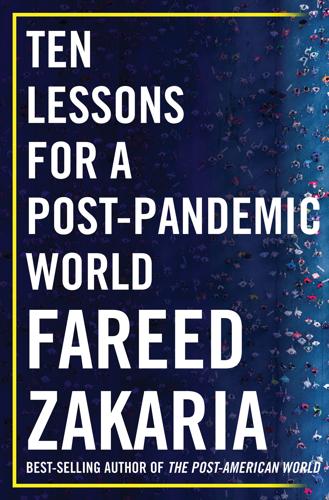
Ten Lessons for a Post-Pandemic World
by
Fareed Zakaria
Published 5 Oct 2020
Dirty water had become a crisis in the unprecedentedly populous cities of the industrial age. The author Steven Johnson describes London in 1851: “without infrastructure, two million people suddenly forced to share ninety square miles of space wasn’t just a disaster waiting to happen—it was a kind of permanent, rolling disaster.” Cholera stalked the streets, killing tens of thousands. John Snow, a pioneering epidemiologist, theorized that the disease was waterborne, and blocked a local pump to prove it. Lo and behold, the outbreak stopped raging in that neighborhood. But this dramatic experiment failed to convince the authorities to systematically implement Snow’s recommendations—until his ideas became consensus decades later, after thousands of unnecessary deaths.
…
Humanity has turned to artists to convey this idea, from the plague years to the time of cholera. “Death is democratic,” remarked the Mexican artist José Guadalupe Posada. “At the end, regardless of whether you are white, dark, rich or poor, we all end up as skeletons.” Drawing on this morbid idea, Posada’s most famous creation, an etching titled La Catrina, depicts an elegant female skeleton in a large plumed hat, a macabre figure in Victorian finery that has become associated with Mexico’s Day of the Dead. He first crafted this indelible image around 1910, when cholera remained rampant. Indeed, another of Posada’s works from the same year is called The Skull of Morbid Cholera.
…
“The cash-rich municipality, politicians, and non-profits have provided tens of thousands of free meals and rations. Bollywood actors and businessmen have donated gear, oxygen cylinders, gloves, masks, medicines and ventilators.” Before the crisis, most of the city’s elite had never given much thought to—let alone visited—the poverty in their midst. In the late nineteenth century, outbreaks of cholera and popular reports of “how the other half lives” in overcrowded tenements spurred urban reform movements in Europe and the United States. Today, the developing world’s cities face issues of exponentially greater size, but, ultimately, they could easily apply some of the solutions Western cities did a century ago—centering on sanitation and clean water.
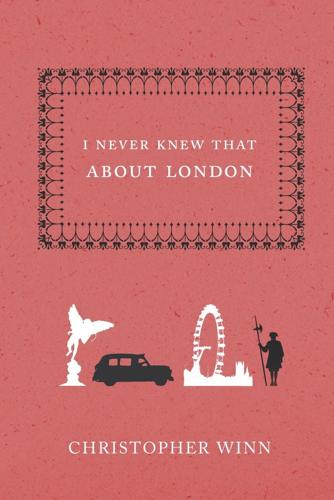
I Never Knew That About London
by
Christopher Winn
Published 3 Oct 2007
The Blake House tower block now stands on the site. The JOHN SNOW pub in Broadwick Street commemorates the surgeon who, in 1854, uncovered the link between the victims of a cholera epidemic in Soho and those who had drunk from a well in Broadwick Street. Having taken samples from the well and discovered that the water contained infected particles, he persuaded the local council to close the well. Subsequently the spread of the disease diminished, thus proving that cholera entered the body through the mouth rather than being airborne, which had been the accepted theory. John Snow (1813–58) also pioneered the use of anaesthetics by administering chloroform to Queen Victoria at the delivery of her son, Prince Leopold, in April 1853 and daughter Beatrice in April 1857.
…
Abramovich, Roman 95 Adelaide House, EC3 4, 5 Adelphi, Strand 75, 108 Admiralty Arch 103 Albany, Piccadilly 91 Albemarle Street, Mayfair 99, 100 Albert Memorial 96 Aldwych 78 Alsatia 52 Altab Ali park, Whitechapel 169 Amen Court, St Paul’s 48 Apsley House, Hyde Park Corner 94, 95 Baltic Exchange 21 Bank of England 26, 27, 28, 29, 34 Bank, Child’s 56 Bank, EC2 26, 27 Bank, Hoare’s 56 Bankside 232 Banqueting House, Whitehall 115, 116 Barnard Inn, EC1 66 Baron’s Court 201 Battersea 212, 213 Battersea Dogs and Cats Home 217 Battersea Park 213, 214 Battersea Power Station 136, 214, 215, 233 BBC TV Centre, White City 200, 201 Belgravia 134 Berkeley Square 100 Bermondsey 238, 239, 241 Bermondsey Market 238 BFI South Bank 227 Big Ben 129 Billingsgate, Canary Wharf 160 Billingsgate, EC3 8, 9 Birdcage Walk, St James’s 105 Bishopsgate, EC2 30, 31, 36, 37 Blackfriars 46 Blackheath 251, 254 Blackwall 23, 159, 160, 161 Blackwall Tunnel 159 Bond Street 112 Borough High Street 237, 238 Borough Market 242 Bow Street, Covent Garden 86 Brick Lane, Spitalfields 170 Bridge, Albert 176, 177, 213 Bridge, Battersea 176, 213 Bridge, Blackfriars 47, 51, 241 Bridge, Chelsea 133, 182 Bridge, Grosvenor 136 Bridge, Hammersmith 196, 197 Bridge, Hungerford 77 Bridge, Lambeth 119, 132, 221 Bridge, London 4, 5, 6, 7, 8, 12, 61, 235, 237, 242 Bridge, Millennium 233 Bridge, Putney 203, 204, 207 Bridge, Southwark 226, 240 Bridge, Tower 141, 142, 145, 147, 239, 242 Bridge, Vauxhall 133, 219 Bridge, Waterloo 74, 227 Bridge, Westminster 119, 120, 130, 224, 225 Brixton 230 Brompton Cemetery 180 Brook Green 199 Brook Street, Mayfair 98, 99 Brunswick House, Vauxhall 218, 219 Burlington Arcade, Piccadilly 101 Burlington House, Piccadilly 91, 92 Bush House, Aldwych 78 Cabinet War Rooms 120 Cable Street, Wapping 145 Canary Wharf 155, 157, 226 Capel, St Peter ad Vincula 141 Carlton House Terrace 106, 107 Cathedral, Southwark 10, 232, 235, 236, 237 Cathedral, St George’s 240 Cathedral, St Paul’s 4, 17, 38, 39, 40, 129, 163 Cathedral, Westminster 13, 131, 136, 191 Cenotaph, The 118 Central Hall, Westminster 119, 120 Change Alley, EC3 21 Chapel, Queen’s, Greenwich 248 Chapel, Queen’s, St James’s 108 Chapel, Royal 109 Chapel, Savoy 74 Chapel, St Stephen’s Westminster 128 Charing Cross 76 Charlton House 244, 252 Charterhouse 64 Cheapside EC2 33, 34, 35 Chelsea 12, 173–183 Chelsea Harbour 204 Chelsea, FC 195 Cherry Pier 142, 239 Cheyne Row, Chelsea 177, 178 Cheyne Walk, Chelsea 173, 176, 177, 179 Church House, Westminster 131 Church, All Hallows-by-the-Tower 9, 12 Church, All Saints Fulham 195 Church, Brompton Oratory 191 Church, Chelsea Old 173, 177, 178 Church, Christ Church Spitalfields 162, 165 Church, Christ Church, (Kennington) 231 Church, Holy Sepulchre 59 Church, St Alfege (Greenwich) 250 Church, St Andrew Undershaft 15, 16 Church, St Andrew’s (Holborn) 24 Church, St Anne’s (Limehouse) 154 Church, St Bartholomew-the-Great 62 Church, St Benet, (Paul’s Wharf) 46 Church, St Botolph, (Aldgate) 13, 14 Church, St Bride (Fleet Street) 54, 55 Church, St Clement Danes 72 Church, St Dunstan-in-the-East 12 Church, St Dunstan-in-the-West 53, 54 Church, St Dunstan’s (Stepney) 169 Church, St Ethelburga-the-Virgin 29, 30 Church, St Etheldreda’s 64 Church, St Giles (Cripplegate) 31, 32 Church, St Helen’s (Bishopsgate) 14, 15 Church, St James’s (Piccadilly) 91 Church, St John (Smith Square) 136 Church, St Katharine Cree 16, 17 Church, St Lawrence Jewry 33 Church, St Luke’s (Charlton) 252 Church, St Luke’s (Chelsea) 182 Church, St Magnus the Martyr 4, 7 Church, St Margaret Pattens 12 Church, St Margaret’s (Westminster) 119 Church, St Martin-in-the-Fields 81 Church, St Martin-within-Ludgate 48 Church, St Mary Abbots 192 Church, St Mary Aldermanbury 33 Church, St Mary Aldermary 44 Church, St Mary-at-Lambeth 222 Church, St Mary-le-Bow 42, 43 Church, St Mary-le-Strand 72 Church, St Mary’s (Battersea) 212, 213 Church, St Mary’s (Putney) 207, 208 Church, St Mary’s (Rotherhithe) 239 Church, St Matthias, (Poplar) 156 Church, St Nicholas (Deptford) 245, 246 Church, St Olave (Hart Street) 10, 11 Church, St Paul’s (Covent Garden) 84, 85, 87 Church, St Paul’s Presbyterian 158 Church, St Paul’s (Shadwell) 149, 150 Church, St Peter-upon-Cornhill 21 Church, St Stephen Walbrook 44, 45 Church, Temple 50, 51 City Hall, Southwark 242 Clapham 215, 229 Clapham Common 229 Clarence House 104 Cleopatra’s Needle 76, 77 Clerkenwell 62, 63 Clerkenwell Green 63 Cloth Fair, Smithfield 61 Club, Albemarle 99 Club, Annabel’s 100 Club, Army & Navy 108 Club, Boodles 111 Club, Brooks’s 110, 111 Club, Carlton 111 Club, Clermont 100 Club, National Liberal 116 Club, Naval and Military 92, 112 Club, Portland 92 Club, Pratts 111 Club, Reform 107 Club, Royal Automobile (RAC) 107, 108 Club, Travellers’ 107 Club, Whites 112 College of Arms 46 Cornhill EC3 19, 20, 21, 27 County Hall 225, 226 Courtauld Institute of Art 73 Covent Garden 74, 84, 85 Craven Cottage, Fulham 195, 196 Cremorne Gardens, Chelsea 179, 180 Crosby Hall, Chelsea 15, 178, 179 Custom House 9 Cutty Sark 250 Dean’s Yard, Westminster 131 Dennis Sever’s House, Spitalfields 166 Deptford 244, 245, 246, 253, 254 Dirty Dick’s, Bishopsgate 36 Dolphin Square, Pimlico 136 Downing Street, No. 10 104, 116, 117, 121 Downing Street, Westminster 116, 117 Duke Street, St James’s 114 Dulwich College 36 Dunbar Wharf, Limehouse 152 Earl’s Court 191 Eaton Place, Belgravia 134 Eaton Square, Belgravia 134 El Vino, Fleet Street 57 Elder Street, Spitalfields 166 Electra House, Savoy Hill 76 Elephant and Castle 240 Ely Place, Holborn 64, 65 Embankment 77, 116, 120 Empress State Building, Fulham 203 Execution Dock, Wapping 148, 239 Faraday Building, Queen Victoria St 46 Festival Hall, South Bank 225, 227 Flamsteed House, Greenwich 249, 250 Fleet Street 23, 50–57 Fortnum & Mason, Piccadilly 91 Fournier Street, Spitalfields 165 Fulham FC 195, 203 George and Vulture, EC3 21 Gherkin, The, 24 Gravesend 9 Green Park 108 Greenwich 159, 244, 246, 254 Greenwich Observatory 129 Greenwich Park 246, 250, 254 Gresham College 66 Grosvenor Square, Mayfair 98 Grove Road, Mile End 169 Guildhall, EC2 32, 33 Hall, Caxton, Victoria 135 Hall, Congregational Memorial 56 Hall, Drapers’ 35 Hall, Fishmongers’ 12, 45 Hall, Goldsmiths’ 33 Hall, Leathersellers’ 15 Hall, Mercers’ 27 Hall, Merchant Taylors’ 28 Hall, Saddlers’ 35 Hall, Vintners’ 45 Hall, Westminster 125, 126, 127 Hamley’s, Regent Street 88 Hammersmith 196–204 Hammersmith Odeon 201 Hammersmith Palais 201 Hampstead 133 Hampstead Heath 51 Hampton Court 114, 180, 185 Harrods, Knightsbridge 186, 187 Hatchard’s, Piccadilly 92, 93 Hatton Garden, Holborn 65, 67 Haymarket 119 Hayward Gallery, South Bank 227, 228 Highgate Hill 43 HMS Belfast 242 Holborn 65 Holborn Bars 65 Holborn Circus 58, 64 Holborn Viaduct 59 Holland Park 188, 189 Horse Guards Parade 116, 117 Horse Guards, Whitehall 116 Hospital, Bethlehem Royal 31 Hospital, Guy’s 243 Hospital, Royal Free 58 Hospital, Royal London 163, 164, 170 Hospital, Royal Naval Greenwich 248, 254 Hospital, St Bartholomew’s 61, 62 Hospital, St Thomas’s 231, 236, 242, 243 Hotel, Brown’s 99 Hotel, Claridge’s 98 Hotel, Great Eastern 31 Hotel, Grosvenor House 101 Hotel, Inter Continental 102 Hotel, Ritz 93 Hotel, Savoy 74, 93, 98 Houses of Parliament 119, 121, 125–130 Howland Great Wet Dock 241 Hurlingham 193, 194 Hyde Park 95, 96, 133, 186, 200 Hyde Park Corner 26, 67, 93, 94, 102 Inn, Tabard, (Southwark) 237 Inn, White Hart, (Southwark) 237 Institute of Contemporary Art 104 Island Gardens, Isle of Dogs 158, 159 Isle of Dogs 8, 151, 155, 156 Jamarch’s Animal Emporium 144 Jermyn Street, Westminster 114, 115 Jerusalem Passage, Clerkenwell 63 John Scott Russell’s Yard, Millwall 158, 161 Kelmscott House, Hammersmith 198, 199 Kennington 220, 221 Kensington Gardens 97, 186 Kensington High Street 184, 185 Kensington Palace Gardens 184, 185 King Edward Memorial Park, Shadwell 150 King Street, St James’s 112 King’s Arms Tavern, EC3 21 King’s Reach 75, 76 King’s Road, Chelsea 180, 181, 183 Knightsbridge 186 Ladbroke Square Gardens 189 Lambeth 221, 222, 223, 229 Lambeth Palace 218, 221, 222, 223 Lambeth Walk 231 Lancaster House 104 Leadenhall Market 25 Leicester Square 82 Library, British 83 Library, London 112 Library, Marx Memorial 63 Lime Grove, Shepherd’s Bush 203 Limehouse 142, 150, 151, 152 Limehouse Basin 151 Limehouse Cut 151 Limehouse Reach 151 Limekiln Wharf, Limehouse 152 Lincoln’s Inn 86, 87 Lincoln’s Inn Fields 98 Linley Samborne’s House, Kensington 184 Little Ben, Victoria 134 Liverpool Street 31, 36, 37 Lloyds Building EC3 18, 19 Lombard Street EC3 21, 24 London Docks 143, 144, 147 London Eye 226 Lord Leighton’s House, Holland Park 189 Lord North Street, Westminster 132 Lots Road Power Station 180 Lower Mall, Hammersmith 197, 198 Ludgate Hill 38, 55 Madame Tussauds 78 Mall, The 103 Mansion House, EC4 13, 26, 48 Marble Arch 97, 104, 133 Marlborough House 108 Maryon Park, Charlton 252 Melbury Road, Holland Park 189 Middlesex Guildhall 120 Mile End 167, 168 Mile End Road 167 Millbank Tower, Westminster 132 Millbank, Westminster 132, 133 Millennium Dome 250, 251 Millwall 157, 158 Milton Street, EC2 36 Monument, EC3 3 Moorfields 31 Moorgate 36 Morden College, Blackheath 251, 252 Mosque, Jamme Masjiid 170 Mudchute, Isle of Dogs 159 Museum, Bank of England 27 Museum, British 9, 177 Museum, Clink Prison 235 Museum, Design, (Southwark) 238 Museum, Garden History 222 Museum, Handel House 99 Museum, Imperial War 31 Museum, London 36 Museum, National Maritime 248 Museum, Natural History 187 Museum, Victoria and Albert 187 Narrow Street, Limehouse 151, 152 New Scotland Yard 118, 136 Nine Elms, Vauxhall 217 Notting Hill 189–192 Old Bailey, EC4 42 Old Curiosity Shop, Lincoln’s Inn 89 Old Oak Common 203 Old Operating Theatre, Borough 242 Olympia, Kensington 203 Oxford Circus 88 Oxford Street 83, 84 Oxo Tower, South Bank 232 Painted Hall, Greenwich 248 Palace, Buckingham 93, 97, 98, 103, 104, 104, 105, 133, 224 Palace, Fulham 193, 194, 195 Palace, Greenwich 156, 246, 247 Palace, Kensington 95, 184, 185, 186, 248 Palace, St James’s 103, 109 Palace, Westminster 119, 125–130, 180, 221 Palace, Whitehall 109, 115, 125 Palace, Winchester 10, 235 Pall Mall, St James’s 56, 103, 105, 106, 107, 111, 114 Paragon, The (Blackheath) 251 Park Lane 102 Parliament Square, Westminster 119 Paternoster Row, St Paul’s 41, 48 Paternoster Square, St Paul’s 41, 42, 48 Peninsula Heights, Vauxhall 219, 220 Physic Garden, Chelsea 175, 176 Piccadilly 91, 92, 133 Piccadilly Circus 90, 108 Pickering Place, St James’s 110 Pimlico 133, 134, 142 Pinnacle, The 36 Plumstead 254 Poplar 155, 156 Portcullis House, Westminster 120 Portobello Road, Notting Hill 189, 190, 192 Postman’s Park, EC1 60 President, HMS 49 Prince Henry’s Room, Fleet Street 52 Prison, Clerkenwell 60 Prison, Clink (South Bank) 235 Prison, Fleet 55, 56 Prison, Newgate 59, 60 Pub, Anchor (Bankside) 234, 235 Pub, Angel (Bermondsey) 239 Pub, Chequers 114 Pub, Coach and Horses (Soho) 88 Pub, George Inn 237 Pub, Henry Addington (Canary Wharf) 160 Pub, John Snow (Soho) 83 Pub, Mayflower (Rotherhithe) 239 Pub, Queen’s Head 237 Pub, The Grapes (Limehouse) 151 Pub, Town of Ramsgate (Wapping) 147 Pub, Waterman’s Arms (Millwall) 159 Pub, Ye Olde Cheshire Cheese 53 Pub, Ye Olde Mitre (EC1) 64 Puddle Dock, EC4 47 Purcell Room, South Bank 227 Putney 207, 208, 209, 217 Putney Heath 209, 216 Putney Vale 209, 210 Pye Corner, EC1 61 Queen Anne’s Gate, Westminster 135 Queen Elizabeth Hall, South Bank 227 Queen Victoria Street, EC4 45, 47 Queen’s House, Greenwich 248, 249 Queens Park Rangers FC 201 Ranelagh Gardens, Chelsea 134, 175 Ratcliffe, East End 144, 150 Regent’s Park 133 Rillington Place 10 190, 216 River Lea 151 River Tyburn 133 River Westbourne 133 River, Fleet 55 River, Thames 4–9, 12, 47, 49, 75, 76, 119, 122, 125, 130, 132, 136, 139, 141–148, 150–152, 154, 156–161, 173–176, 180, 182, 193–199, 204, 207, 212–216, 218, 219, 222, 224–227, 232–235, 238–242, 244–247, 250, 251, 253, 254 Riverside Studios, Hammersmith 196 Rotherhithe 239, 241 Rotherhithe Tunnel 150 Royal Albert Hall, Kensington 59, 85, 96 Royal Artillery Barracks, Woolwich 255 Royal Avenue, Chelsea 181, 182 Royal Courts of Justice, Strand 71 Royal Exchange, EC3 13, 14, 19, 23, 26 Royal Hospital, Chelsea 174, 175 Royal Observatory, Greenwich 249, 250 Royal Opera Arcade, Haymarket 114 Royal Opera House 85, 86, 87 Royal Ordnance Factory, Woolwich 253 Sadler’s Wells, Clerkenwell 66 Savile Row 100, 101 Savile Row, Mayfair 98 Savoy 73 Savoy Hill 78 Savoy Place 74 Sayes Court, Deptford 245 Schomberg House, St James’s 75, 108 School, Blewcoat 134 School, St Paul’s 40, 199 School, St Paul’s Girls 199 School, Westminster 131 Scotland Yard 118 Serpentine, The 102, 186 Shad Thames, Southwark 238 Shadwell 148, 149, 150 Shard of Glass, 240 Shell Centre 227 Shell Mex House 78 Shepherd’s Bush 199, 200 Shepherd’s Bush Empire 201, 202 Simpsons-in-the-Starnd 78 Smithfield 61 Soho 82, 83 Somerset House 72, 73 Sotheby’s, Bond Street 101 South Bank 227, 228 South Kensington 187, 188 Spitalfields 164, 165, 170 St George’s Square, Pimlico 136 St Helen’s Place 15, 29 St James’s Park 105 St James’s Square 112, 113 St James’s Street 107, 108, 109, 110, 114 St John’s Gate, Clerkenwell 62, 63 St Katharine’s Dock 133, 142, 145, 146 St Mary Woolnoth 22, 23 St Mary’s RC Cemetery, Kensal Grn 203 St Paul’s Churchyard 40, 41 St Peter’s Square, Hammersmith 202 Staple Inn, EC1 58, 65, 66, 67 Station, Cannon Street 48 Station, Fenchurch Street 12 Station, Liverpool Street 31, 134 Station, London Bridge 237 Station, Victoria 134 Station, Waterloo 228 Stepney 164, 168, 169, 170 Stepney Green 168 Stockwell 229, 230 Strand, The 71 Streatham 229 Strutton Ground, Victoria 136 Sun Wharf, Limehouse 154 Swan Walk, Chelsea 175 Synagogue, Portuguese and Spanish 24 Tate Modern, South Bank 133 Tate Gallery, Millbank 133 Tate Modern 233 Temple Bar 41 Temple of Mithras 47 Temple, EC4 50 Thames Barrier 253, 254 Thames House, Westminster 132 Thames Tunnel 239, 240 Theatre Royal, Drury Lane 12, 28, 88 Theatre, Adelphi 75 Theatre, Apollo 94 Theatre, Globe 36, 233, 234, 236 Theatre, Her Majesty’s 86, 114 Theatre, Lyceum 78 Theatre, Mermaid 47 Theatre, National 228 Theatre, Old Vic 228 Theatre, Rose 234 Theatre, Royal Court 183 Theatre, Savoy 74 Theatre, St James’s 112 Theatre, Victoria Palace 134, 231 Threadneedle Street, EC2 28, 29 Tite Street, Chelsea 182, 183 Tobacco Dock 144 Tower 42 (NatWest Tower) 27, 30 Tower Green 141, 248 Tower Hill 9, 140, 141, 145, 224 Tower House, Melbury Road 189 Tower House, Whitechapel 163 Tower of London 139–141, 145, 176 Tower Subway 145 Toynbee Hall, Spitalfields 165 Trafalgar Square 63, 80, 81, 82, 88, 96, 103, 114 Trinity Almshouses, Mile End 167 Trinity Buoy Wharf, Blackwall 160 Upper Mall, Hammersmith 198 Vanbrugh’s Castle, Greenwich 248 Vauxhall 218, 219, 230 Vauxhall Cross 219 Vauxhall Gardens 220 Vauxhall Pleasure Gardens 175, 220, 225 Victoria 131–138 Victoria Embankment 75, 76, 77 Victoria Tower, Westminster 128, 129 Virginia Quay 159 Walworth 241 Wandsworth 211, 216 Wandsworth Prison 211, 212 Wapping 146, 147, 148, 153, 154, 240 Wapping High Street 146, 147, 148 Wapping Old Stairs 147 Wapping Pier Head 146 Waterloo 224, 231 Waterloo Place, St James’s 105, 106 Wellington Arch 102 West India Dock, Canary Wharf 160 Westminster Abbey 109, 122–125, 127, 129, 130, 131, 140, 163, 198 White City 200, 201 Whitechapel 162, 163, 164, 169 Whitechapel Bell Foundry 162, 163 Whitechapel Road 162, 164 Whitehall 82, 115–121, 175 Whitehall Court 116 Wickham’s Department Store 168 Wilkes Street, Spitalfields 165, 166 Wilton’s Music Hall, Whitechapel 142, 143 Wine Office Court, EC4 53 Woolwich 253, 254, 255 Wormwood Scrubs 199, 200 York House, Battersea 217 Acknowledgements My thanks as always to Hugh Montgomery Massingberd, my inspiration and the finest dining companion I know.
…
THE FIRST DIGITAL PROJECTOR IN EUROPE was installed here in 1999. The EMPIRE LEICESTER SQUARE was the venue of THE FIRST REGULAR PUBLIC FILM SHOW IN BRITAIN, in 1896. MAURICE MICKLEWHITE was making a telephone call from a call box in Leicester Square when he spotted a poster for The Caine Mutiny and decided to change his name to MICHAEL CAINE. Soho Cholera, Marxism and TV SOHO TAKES ITS name from a hunting cry as used by the Duke of Monmouth, who had a house near where Soho Square is now. Monmouth also used Soho as his battle cry at the Battle of Sedgemoor in 1685. The celebrated American MARLBORO cigarette, THE WORLD’S BEST-SELLING CIGARETTE BRAND, is named after Soho’s Great Marlborough Street, once the location of the Philip Morris factory where they were first manufactured.
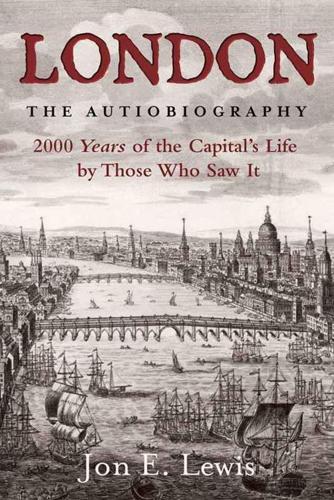
London: The Autobiography
by
Jon E. Lewis
Published 25 Aug 2009
Furious contests have taken place about the burials, it having been recommended that bodies should be burned directly after death, and the most violent prejudice opposing itself to this recommendation; in short, there is no end to the scenes of uproar, violence, and brutal ignorance that have gone on, and this on the part of the lower orders, for whose especial benefit all the precautions are taken, and for whose relief large sums have been raised and all the resources of charity called into activity in every part of the town. It was not understood at the time that the cholera outbreak was caused by polluted water. This vital scientific breakthrough was made in 1854 by Dr John Snow, who noticed that those who drank from the pump in Broad Street died, while those who worked in the nearby brewery, and drank beer instead of water, did not. By then cholera had taken the lives of 30,000 Londoners. The Opening of the London to Deptford Railway, 14 December 1837 John O’London London’s first railway was mounted on a twin-track viaduct.
…
Tenements in slum districts known, in the vernacular of the time, as ‘rookeries’ teemed with people. Disease ran rife. Diphtheria, measles, smallpox and typhus were constant killers. Another contagion arrived in 1831 – another bacillus that ensured that the life expectancy of poor Londoners did not linger beyond 27 years. King Cholera, 1832 Charles Greville 17 FEBRUARY 1832 THE CHOLERA HAS produced more alertness than alarm here; in fact, at present it is a mere trifle – in three days twenty-eight persons. Nothing like the disorders which rage unheeded every year and every day among the lower orders. It is its name, its suddenness, and its frightful symptoms that terrify.
…
A copy of the British Library Cataloguing in Publication data is available from the British Library UK ISBN: 978-1-84529-942-2 eISBN: 978-1-78033-750-0 1 3 5 7 9 10 8 6 4 2 First published in the United States in 2009 by Running Press Book Publishers All rights reserved under the Pan-American and International Copyright Conventions No part of this work may be produced or utilized in any form or by any means, electronic or mechanical, including photocopying, recording, or by information storage and retrieval system, without permission in writing from the publisher. 9 8 7 6 5 4 3 2 1 Digit on the right indicates the number of this printing US Library of Congress Control Number: 2009920964 US ISBN: 978-0-7624-3734-4 Running Press Book Publishers 2300 Chestnut Street Philadelphia, PA 19103-4371 www.runningpress.com Printed and bound in the EU For Penny, a London girl Contents List of Illustrations Foreword Boudicca Sacks Londinium, AD 60 TACITUS The Romans in London: Graffiti VARIOUS Londoners Reject Christianity, 616 THE VENERABLE BEDE Viking Raids, 842–1009 THE ANGLO-SAXON CHRONICLE London Bridge is Pulled Down by King Olaf, c. 1014 SNORRI STURLUSON Edward the Confessor Builds Westminster Abbey, 1060–5 A MONK OF ST BERTIN’S ABBEY The Coronation of William the Conqueror, Christmas Day, 1066 ORDERIC VITALIS The Charter of Henry I in Favour of the Citizens of London, Michaelmas 1130–August 1133 HENRY I A Description of the City of London, c. 1173 WILLIAM FITZ STEPHEN Building Regulations, 1189 THE LONDON ASSIZES Tax Riot, 1194 ROGER OF WENDOVER The Thames Floods, 1241 MATTHEW PARIS Misadventures in Childhood, 1301–37 CALENDAR OF THE CORONERS’ ROLLS Street Life, 1301–80 VARIOUS Trick of the Trade: A Fraudulent Baker, 1327 THE CITY OF LONDON LETTER-BOOK The Ordinances of the Spurriers, 1346 ANONYMOUS City of the Dead: The Black Death, 1348 ROBERT OF AVESBURY Flagellants, Michaelmas 1349 ROBERT OF AVESBURY Expulsion of a Leper, 1372 THE CITY OF LONDON LETTER-BOOK An Inventory of the Goods in a Fishmonger’s City House, 1373 CALENDAR OF PLEA AND MEMORANDA ROLLS The Peasants’ Revolt Comes to London, 1381 SIR JOHN FROISSART Richard II Quarrels with the City of London, 1392 THE MONK OF WESTMINSTER London Lickpenny, c. 1410 ANONYMOUS Henry V’s Victory March After Agincourt, 23 November 1415 ANONYMOUS Richard Whittington is Elected Mayor for the Third Time, 13 October 1419 THE CITY OF LONDON LETTER-BOOK Public Nuisances, 1422 THE GENERAL COURT OF THE MAYOR OF THE CITY OF LONDON Wars of the Roses: The Beginning of Strife, 1454 JOHN STODELY The Dignity of the Mayor of London, 1464 ANONYMOUS The Joust Between Lord Scales and the Bastard of Burgoyne, 1467 EDWARD HALL The Sweating Sickness, 1485 EDWARD HALL Tudor London: A Portrait, 1497 ANDREAS FRANCISCUS Evil May Day, 1 May 1517 THE CHRONICLE OF THE GREY FRIARS The Beheading of Sir Thomas More, 1535 WILLIAM ROPER Protestant Revolution: Edward VI Suppresses Popery in London, 1547 THE CHRONICLE OF THE GREY FRIARS Queen Mary Seizes the Crown, 1553 HENRY MACHYN Mary Persecutes the Protestants: The Burning of Bradford and Leaf at Smithfield, 1555 JOHN FOXE Elizabethan London: City Life, 1564–99 VARIOUS Elizabethan London: The Oath of Every Freeman, 1580 ANONYMOUS Riots, Puritans and Shakespeare: Theatre-going, 1584–1613 WILLIAM FLEETWOOD, THE LORD MAYOR AND ALDERMEN, AND THOMAS PLATTER Queen Elizabeth at Greenwich, c. 1596 PAUL HENTZNER The Torturing of a Jesuit Priest in the Tower of London, April 1597 FATHER JOHN GERARD The Diary of a Tourist, 5 July 1598 BARON WALDSTEIN The Gunpowder Plot, 5 November 1605 SIR EDWARD HOBY The Attempted Arrest of the Five Members, 4 January 1642 JOHN RUSHWORTH The Battle of Newbury: Sergeant Henry Foster in Action, 20 September 1643 SERGEANT HENRY FOSTER, RED REGIMENT OF THE TRAINED BANDS OF THE CITY OF LONDON The Execution of Charles I, 30 January 1649 PHILIP HENRY Ranters, 1651 JOHN TAYLOR A Whale in the Thames, 3 June 1658 JOHN EVELYN The Restoration: The Arrival of Charles II in London, 29 May 1660 ANONYMOUS Notices for a Lost Dog, 21–8 June 1660 CHARLES II Journal of the Plague Year, 1665 SAMUEL PEPYS The Great Fire, 2–7 September 1666 JOHN EVELYN The Dutch in the Thames, June 1667 JOHN EVELYN A Visit to a Gaming House, 1 January 1668 SAMUEL PEPYS Highway Robbery, 11 May 1674 JOHN VERNEY London Arisen from the Ashes: Wren Rebuilds St Paul’s Cathedral, 1675–1710 DANIEL DEFOE The Great Frost, 1683–4 JOHN EVELYN Cockfighting, 18 June 1710 ZACHARIAS VON UFFENBACH Making Hay in Chelsea, 19 May 1711 JONATHAN SWIFT The Mohock Club, March 1712 LADY STRAFFORD Handel’s Water Music, 17 July 1717 DAILY COURANT Coffee-houses, c. 1722–5 JOHN MACKY AND CÉSAR DE SAUSSURE John Wesley Stoned, 12 September 1742 JOHN WESLEY A Hanging at Tyburn, c. 1745 SAMUEL RICHARDSON Earthquake, 11 March 1750 HORACE WALPOLE Gin Lane, 1751 WILLIAM HOGARTH Man About Town: A Rake’s Progress, 25 November 1762–4 June 1763 JAMES BOSWELL Wilkes and the Mob, 1768 HORACE WALPOLE The Lord Mayor’s Banquet, 1768 WILLIAM HICKEY The Gordon Riots, 6 June 1780 IGNATIUS SANCHO Ranelagh Pleasure Gardens, 12 June 1782 KARL PHILIPP MORITZ London Hospitals, 1788 JOHN HOWARD ‘The Rage for Building’: The Growth of London, 8 June 1791 HORACE WALPOLE London: A Georgian Poet’s View, 1794 WILLIAM BLAKE Mr Whitbread’s Brewery, c. 1800 JOHANNA SCHOPENHAUER Shooting Under London Bridge in a Boat, 12 July 1810 LOUIS SIMOND The Season: Jane Austen’s Party, April 1811 JANE AUSTEN Death of a Climbing Boy, 29 March 1813 THE PARLIAMENTARY COMMITTEE ON CLIMBING BOYS Mrs Fry at Newgate, March 1822 MARIA EDGEWORTH ‘Peelers’: The Formation of the Metropolitan Police, October 1829 SIR ROBERT PEEL William IV Rambles the Streets, 19 July 1830 CHARLE S GREVILLE King Cholera, 1832 CHARLES GREVILLE The Opening of the London to Deptford Railway, 14 December 1837 JOHN O’LONDON Queen Victoria at Her Coronation, 28 June 1838 QUEEN VICTORIA The Condition of the Working Class in London, c. 1844 FRIEDRICH ENGELS Chartist Demonstration, 10 April 1848 LORD JOHN RUSSELL Victorian London: Street Life, c. 1850 HENRY MAYHEW A Visit to the Great Exhibition, 7 June 1851 CHARLOTTE BRONTE High Society: A Fancy-dress Ball at Buckingham Palace, 1851 ANNE THACKERAY RITCHIE Karl Marx at Home, 1852 KARL MARX Some London Wonders: Gaslights, Penny Gaffs and Omnibuses, 1853 MAX SCHLESINGER Fog, 1853 CHARLES DICKENS The Great Stink, Summer 1858 CHARLES DICKENS AND GEORGE GODWIN Nine a.m.: Clerks on Their Way to Work, 1858 GEORGE AUGUSTUS SALA White Slavery: Maids and Match Girls, 1860–83 HANNAH CULLWICK AND JAMES GREENWOOD A Day at the Races: The Derby, Epsom, 28 May 1861 HIPPOLYTE TAINE Tothill Fields, 1861 HENRY MAYHEW AND JOHN BINNY Prostitutes on the Haymarket, 1862 FYODOR DOSTOEVSKY Into Hades: The Metropolitan Underground Railway Commences Service, 9 January 1863 THE TIMES Murder on the North London Railway, July 1864 ILLUSTRATED LONDON NEWS The Founding of the International Working Men’s Association, Covent Garden, 28 September 1865 KARL MARX William Morris at Home, 10 March 1869 HENRY JAMES A Socialist March Through the West End, Autumn 1886 H.M.
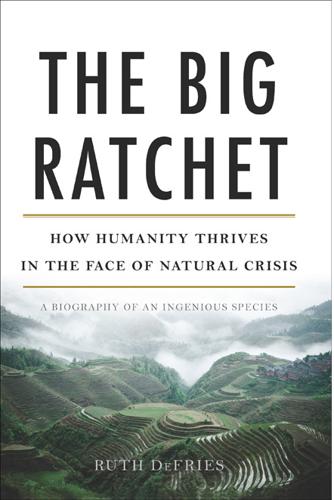
The Big Ratchet: How Humanity Thrives in the Face of Natural Crisis
by
Ruth Defries
Published 8 Sep 2014
The streets, as he described them in his novel Oliver Twist, were “very narrow and muddy, and the air . . . impregnated with filthy odors.” Despite the city’s stinking, horrid state, politicians gave little priority to the reeking cesspools of London. In 1854, cholera hit the city in the third major outbreak of the nineteenth century. About 1,000 people died every week during the outbreak, some 14,000 in all. At first people thought the foul air was behind the outbreaks. But the visionary London physician Dr. John Snow famously pinpointed the true source of these outbreaks when he traced one of them to a single public water pump on Broad Street. Yet even after he nailed the idea that the disease was coming from water contaminated with human waste, not the fetid air, the local government still dilly-dallied on cleaning up the stinking mess.
…
One province or another suffered from famine nearly every year. Untold millions died of starvation. Human excrement that fertilized the fields carried diseases, such as schistosomiasis, known as snail fever for the parasitic worms that hatched in snails, crawled under the skin of a barefoot farmer, laid eggs, and infected the unfortunate victim. Cholera epidemics from water contaminated with human and animal waste swept through the population. With dense populations and land and nutrients too scarce to spend on raising animals for slaughter, meat was a rarity in the Chinese diet. As a result, Chinese society circumvented the energy conundrum that compounds when people use animals for meat.
…
When the project to construct London’s underground sewers was finally finished in 1865, London joined the great Indus Valley civilization and the Greeks and Romans in taking care of this noxious health hazard—all of them had devised water and sewage disposal systems many centuries earlier. London’s system discharged waste into the Thames, where the river’s flow and the tides could wash it out to sea. Sewer systems such as London’s have saved millions, if not billions, of people from cholera, typhoid, dysentery, and other diseases caused by water contaminated with human and animal waste. Lack of sanitation tragically still deprives too many throughout the developing world of a chance at a healthy life. No one would argue that humanity should go back to the days of cesspits and night-soil.

City: A Guidebook for the Urban Age
by
P. D. Smith
Published 19 Jun 2012
When the river had been clean this was not a problem, but after 1848, when new laws required buildings to be connected to the sewers, there was a cholera outbreak which claimed 14,789 lives. At this time, it was widely believed that diseases such as cholera were spread by ‘miasmas’, or foul odours. In American cities at the end of the eighteenth century, men, women and children walked around with cigars in their mouths in the belief that the smoke helped ward off infection. However, the London physician John Snow was convinced that cholera was water-borne. In the early 1850s, he was able to show that one in a hundred customers supplied by the Southwark and Vauxhall Water Company (which took water from the Thames at Battersea) died of cholera, whereas not a single person died among the 14,632 people supplied by the Lambeth Water Company, which used a new waterworks at Long Ditton.
…
In the early 1850s, he was able to show that one in a hundred customers supplied by the Southwark and Vauxhall Water Company (which took water from the Thames at Battersea) died of cholera, whereas not a single person died among the 14,632 people supplied by the Lambeth Water Company, which used a new waterworks at Long Ditton. It was an important piece of evidence in support of his hypothesis and a powerful argument for modern urban plumbing. Despite thousands of deaths from cholera, it was not until what became known as ‘the Great Stink’ of 1858 – when the stench rising from the river during an exceptionally hot summer was so appalling even Parliament had to close – that Her Majesty’s Government was forced to accept that London urgently needed a new sewer system.
…
First recorded in ancient Egypt, smallpox thrives in slum conditions, and regular waves of the disease swept through cities killing a third of victims and scarring or blinding others for life. ‘Father Thames Introducing His Offspring to the Fair City of London’, by John Leech, published in Punch on 3 July 1858, during what became known as the Great Stink. Among the ‘offspring’ of Father Thames are Diphtheria, Scrofula and Cholera. The experience of these epidemics must have been terrifying for city dwellers. In the sixth century ad, a terrible plague struck Constantinople. In the course of a year a quarter of the population was wiped out. At its height, ten thousand people a day were dying, more than the city’s inhabitants could bury.
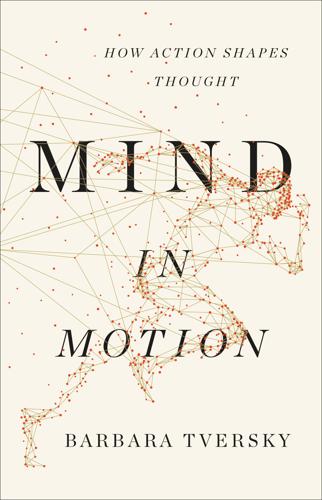
Mind in Motion: How Action Shapes Thought
by
Barbara Tversky
Published 20 May 2019
They can track spread of disease, the first step in finding causality, as the dogged physician John Snow famously did in the cholera epidemic in London in 1854. No one knew then what caused cholera. Snow asked that each case be recorded on a map of central London, as shown in Figure 8.5. He observed that many cholera cases clustered around the Broad Street pump and ordered the pump handle removed. That virtually ended the epidemic and, at the same time, initiated the science of epidemiology, still strongly based on maps. Maps can foster sleuthing and inferencing and discovery and prediction, whether it’s spread of disease or tracking terrorists or paths of hurricanes.
…
Most good maps and diagrams are multimodal, like natural conversation, which uses far more than words, such as intonation, gesture, and stuff in the world. Maps can be designed for multiple purposes or different maps for different purposes. Maps can allow way finding and exploring an environment and planning excursions and rerouting traffic and locating bike lanes and so much more. Maps can form a foundation for explaining history, as the Aztecs did in their codices, colorfully showing the migrations of their ancestors over space and time. FIGURE 8.5. Snow’s 1854 map of central London, with cholera cases represented by dots. Maps can explain wars, as the newspapers did during World War II, showing the size and movements and alliances of troops in Europe day by day.
…
children animacy, understanding of, 23 connection of action and sensation, 16 counting by, 131 gesturing by, 112–114 goal-directed behavior, 20 intentions of the actions of others, understanding, 21 recognition by, 34 thinking by, 19–20 training joint action, 27 vocabulary acquisition and gestures, 131 word acquisition, 36 cholera (1854), map of, 200–201 circles, 131, 134, 167–169, 209, 227 cities, layouts of, 72–73 cocktail napkins, 262 cognitive behavior therapy, 273 cognitive collage, 83 cognitive design principles, 193–194, 199, 201 Cognitive Laws, 289 First, 15–16, 39, 51, 150, 157, 169, 194, 240, 274 Second, 18 Third, 42 Fourth, 13, 36, 55, 64 Fifth, 57, 73, 81 Corollary of Fifth, 60 Sixth, 72, 142, 165 Seventh, 78, 244 Eighth, 190 Ninth, 280 cognitive load, 127, 146 cognitive maps, 72, 82–83 cognitive reference points, 81 coherence, check for, 261 collaboration, 29, 136–137, 284 color, 44 comics, 240–255 advantages of, 241–243 beginning of, 243 connections in, 245 contrasting word and picture, 249–250 disconnection in, 245–246 effectiveness, 241 end of, 246 figures of depiction, 250–253, 251 (fig.)–253 (fig.)
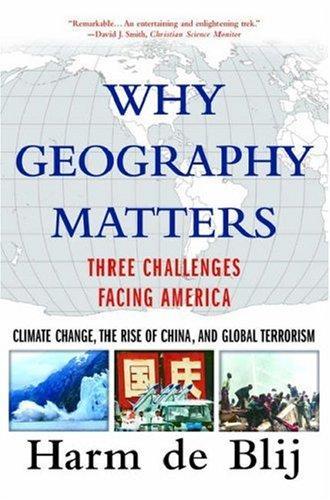
Why geography matters: three challenges facing America : climate change, the rise of China, and global terrorism
by
Harm J. De Blij
Published 15 Nov 2007
How clear were they when the Iraq invasion was planned? How clear are they in this century of environmental change, China's rise, and terrorism's threat? USES AND MISUSES OF MAPS When geographers are asked to provide an example of the practical utility of maps in solving real-world problems, we like to go back to the story of Dr. John Snow, a London physician-geographer who lived through several of the dreadful cholera pandemics that ravaged much of the world during the nineteenth century. No one knew for sure how cholera spread, making the disease especially frightening, and many victims died within a week of infection. Dr. Snow had come to believe that contaminated water was to blame, but he had no proof of it.
…
This accounted for the clustering of the dots around the pump, and the link between contaminated water and cholera was confirmed by the map. That was not the end of the story. Dr. Snow asked city officials to remove the handle from the pump, but they first demurred, saying that this would risk a riot in Soho where people were already angry about the casualty toll from cholera. So Dr. Snow and his students did it themselves, pouring lye down the hole for good measure. Soon he had his proof: the number of deaths around the intersection plummeted, new cases dropped even more sharply, and what the map had confirmed was proven beyond a doubt. Now the authorities could advise people to boil their water and to stop worrying about touching each other or inhaling "bad air," two of the suspected causes.
…
Another environment-related issue involves health and disease. The origins and spread of many diseases have much to do with climate, vegetation, and fauna as well as cultural traditions and habits. A small but productive cadre of medical geographers is at work researching and predicting outbreaks and dispersals of maladies ranging from cholera to AIDS to bird flu. Peter Gould's book on AIDS, which he called The Slow Plague, effectively displays the toolbox of geographers when it comes to such analyses (Gould, 1993). A tjiird geographic tradition is simply this: we do research in, and try to understand, foreign cultures and distant regions.
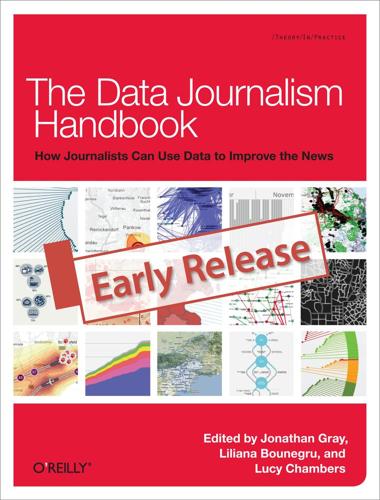
The Data Journalism Handbook
by
Jonathan Gray
,
Lucy Chambers
and
Liliana Bounegru
Published 9 May 2012
In 1829 he created the first choropleth by taking regions in France and shading them to represent crime levels. Today we see such maps used to show political polling regions, who voted for whom, wealth distribution, and many other geographically linked variables. It seems like such a simple idea, but even today, it is difficult to master and understand if not used wisely. Figure 6-11. An early bar chart (William Playfair) Figure 6-12. Cholera map of London (John Snow) Figure 6-13. Choropleth map of France showing crime levels (André-Michel Guerry) There are many tools a good journalist needs to understand and have in their toolbox for constructing visualizations.
…
The need for these new forms of charts and graphs came out of commerce, but as time passed, others appeared and were used to save lives. In 1854 John Snow created his now famous “Cholera Map of London” by adding a small black bar over each address where an incident was reported. Over time, an obvious density of the outbreak could be seen and action taken to curb the problem. As time passed, practitioners of these new chart and graphs got bolder and experimented further, pushing the medium toward what we know today. André-Michel Guerry was the first to publish the idea of a map where individual regions were different colors based on some variable. In 1829 he created the first choropleth by taking regions in France and shading them to represent crime levels.
…
For the technology, we used Google Fusion Tables, Google Maps, and vector graphics libraries. We worked on the construction of polygons for displaying geographic mapping and electoral demographics. Combining polygons in GIS software and geometries from public tables in Google Fusion Tables, we generated tables with keys corresponding to the electoral database of the Ministry of Interior, Indra, and sociodemographic data from INDEC. From this, we created visualizations in Google Maps. Using the Google Maps API, we published several thematic maps representing the spatial distribution of voting with different tones of color, where the intensity of color represented the percentage of votes for the various presidential tickets in different administrative departments and polling stations, with particular emphasis on major urban centers: the City of Buenos Aires, the 24 districts of Greater Buenos Aires, the City of Cordoba, and Rosario.

The Long History of the Future: Why Tomorrow's Technology Still Isn't Here
by
Nicole Kobie
Published 3 Jul 2024
Early smart cities, from well before the term was coined, collected and applied data to solve problems – we’ll see an example from the 1850s – and though that sounds smart it doesn’t always end well, especially once that data is plugged into algorithms or whacked into a dashboard with little other purpose than as a backdrop for politicians at press conferences. * * * It’s Victorian London, and cholera is creeping through the streets of Soho, a district right in the centre of the city. Famously, Dr John Snow deduced that the disease wasn’t spread via bad smells in the air, as first believed, but through water – in particular, a single water pump. He figured that out with data and a map. The clever doctor simply plotted on a map of the district all the deaths of infected people and had the good sense to notice that they lived near the same water pump on Broad Street.
…
As the story goes, he ended the outbreak by removing the pump’s handle. Dr Snow also spotted that no workers from a local brewery died of cholera, likely because they drank beer rather than water.3 That’s the data collection and analytics side, one aspect of smart cities. The other aspect is controlling people (and whatever else) through technology. For example, the world’s first traffic light was installed in London just three decades after John Snow’s data map beheaded that Broad Street pump, at Bridge Street near Parliament Square in 1868. This was before cars, but a thousand pedestrians were still being killed each year on the city’s roads thanks to carriages.
…
Notes 1 I wrote about this for WIRED at the time – you can read the story here: https://biturl.top/a226ji 2 A reporter for Insider toured the project in 2022 (https://biturl.top/eQJzY3) followed by the BBC the year after (https://biturl.top/aIvyai). If anyone wants to send me on an all-expenses paid trip to check it out again, I’m game.3 There is a pump commemorating the event on the corner of what is now Broadwick Street and Lexington Street in London’s Soho – as well as a John Snow pub.4 Josef Kates is a Canadian consulting and tech success story. Born Josef Katz in Vienna, 1921, his family emigrated to Italy and then England after Germany annexed Austria. The British held him as an ‘enemy alien’, eventually deporting him to Canada, where he was also interned as such. Eventually they realised the mistake and he was allowed to finish his education.
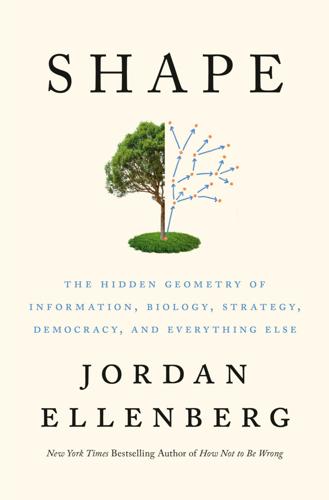
Shape: The Hidden Geometry of Information, Biology, Strategy, Democracy, and Everything Else
by
Jordan Ellenberg
Published 14 May 2021
Farr was a leading British physician of the mid-nineteenth century, the architect of the country’s vital statistics office and an advocate for health reforms in the nation’s crowded cities. If you’ve heard his name, it’s probably in connection with the great success story of early epidemiology, John Snow’s discovery of the source of the 1854 London cholera outbreak at the Broad Street water pump. Farr represented the British medical consensus on the wrong side of that argument, committed to the belief that cholera was spread not by a living organism but by a fermented miasma emanating from the filthy water of the Thames. In 1866, it was Farr who was rowing against conventional wisdom. He wrote a letter to the London Daily News, insisting that the rinderpest, far from threatening to burn through the whole bovine population, was about to start guttering out of its own accord.
…
Matthews, “The Cattle Plague in Cheshire, 1865–1866,” Northern History 38, no. 1 (2001): 107–19, doi.org/10.1179/nhi.2001.38.1.107. By the end of October: A. B. Erickson, “The Cattle Plague in England, 1865–1867,” Agricultural History 35, no. 2 (Apr. 1961): 97. Farr represented: The story of Snow, Farr, and the cholera epidemic is much told; this account is drawn from N. Paneth et al., “A Rivalry of Foulness: Official and Unofficial Investigations of the London Cholera Epidemic of 1854,” American Journal of Public Health 88, no. 10 (Oct. 1998): 1545–53. “We will venture to say”: British Medical Association, British Medical Journal 1, no. 269 (1866): 207. “a more extensive”: General Register Office, Second Annual Report of the Registrar-General of Births, Deaths, and Marriages in England (London: W.
…
See also Erdős-Bacon number Baker, Herbert, 411 Baldwin, Tammy, 340, 347 ball (mathematical), 327, 327n Ballard, William H., 320 ballot referendums, 407, 409 Baltimore, Maryland, 351 Baltimore Ravens, 395 Barrow, Isaac, 4 baseball, 160–62, 183n Bayer, Dave, 330–31 Bayes’ theorem, 96 Beautiful Mind, A (film), 330n Beauty Shop (film), 315 Bellaso, Giovan Battista, 133 bell curve, 256–57 Berdieva, Amangul, 142 Bergman, Dennis, 257 Berlekamp, Elwyn, 114–15 Bernoulli, Jakob, 86, 87 Bertillon, Alphonse, 80–81 best of “x” tournament formats, 159–61, 160n Betti, Enrico, 44 Bhāskara, 24, 24n bias, 71–72, 74 bigrams, 92–94, 92n, 96 binary exponentiation, 153n biological assays, 227 Biometrika, 77, 77n, 78 Birkhoff, George, 20 Bishop, Richard, 290 Black Death, 301, 302 Black suffrage, 351–52 Blackwell, David, 419–20 blended strategies, 164 Bloc Québécois, 373 blow-up transformation, 213 Blum-Smith, Ben, 22 Boltzmann, Ludwig, 59, 83, 84, 315, 331 bond prices, 80, 81 Bondurant, Emmet, 385 book codes, 129–33 boundaries, 160–61, 183, 183, 197–98 Brahmagupta, 250 Breitenberger, Ernst, 46 Breyer, Stephen, 402, 403–4 Briggs, Henry, 323 Brigham Young University, 205 British intelligence, 136 British Medical Journal, 208, 244–45, 256 Broussard, Meredith, 166, 178 Brown, Dan, 278 Brown, Daniel, 322n Brown, Robert, 82–83 Brownian motion, 82–84 Brownlee, John, 256–57 Bugaev, Nikolai Vasilievich, 87 Burger, Dionys, 417n Burke, Edmund, 351 Burke, John Butler, 78 Bush, George W., 346 butane, 316 BuzzFeed, 34 calculus, 68, 167, 186n, 413 Calhoun, John C., 319–20 California, 354–55 Cambridge University, 253, 320 Canada, 373–74 carbon atoms, 315–18, 316, 317 card shuffling geometry, 38, 325–31, 332–33, 388, 392–93, 399 Carlsen, Magnus, 142–43 Carlyle, Thomas, 305n Carroll, Sean, 297n cartograms, 355–56, 356 catenary, 258 cat’s games (draw games), 125–26, 137–38 celestial mechanics, 38–39, 80, 209, 211, 250 Celli, Angelo, 208 censuses, 343, 352, 354 “Census of Spatial Aggregates” (Listing), 46 Centers for Disease Control and Prevention (CDC), 220, 226 Centuriate Assembly (Roman), 349 chain complexes, 45 “Chain-links” (Karinthy), 338 chain-relations, 338–39 chain rule, 186n chains of command, 106 chaos, 38, 241 Chebyshev, Pafnuty, 86, 87 checkers champion players, 97–99 and game-playing programs, 98–99, 137, 138–39, 141, 155, 156, 203, 419 and mathematical intuition, 152 mathematical solution of, 139–42 opening move names, 138, 138n, 140 and strategy spaces, 163, 164, 170 tree structure of, 100, 127, 128n chemistry, 210, 315–18 Chen, Jowei, 386–87 cherry-picking data, 199 chess, 127–29, 137, 141–46, 155–56, 164 Chess Turk, 155 “chest-of-drawers principle”(Schubfachprinzip), 273–74 childhood experiences with geometry, 1 Childhood Years of Bagrov, Grandson, The (Aksakov), 91 Chinese Hypothesis, 154 Chinook (checkers program), 98–99, 137, 138–39, 141, 155, 203, 419 cholera, 244 Chomsky, Noam, 262–63 chords, 191, 298 Christianity, 213 church doctrine, 87. See also religion and mathematics Church of Scientology, 325n cicadas, 149–50 ciphers, 132–33, 136–37. See also cryptography circles, 146–51, 188, 189–90, 196 Clay Foundation, 419 Clement, Paul, 401–2, 404 Clifford, W.

The Master Algorithm: How the Quest for the Ultimate Learning Machine Will Remake Our World
by
Pedro Domingos
Published 21 Sep 2015
Instead, he saw an analogy between that crisis and the outbreak of World War I, and that analogy guided him to the right decisions. Nearest-neighbor can save lives, as Steven Johnson recounted in The Ghost Map. In 1854, London was struck by a cholera outbreak, which killed as many as one in eight people in parts of the city. The then-prevailing theory that cholera was caused by “bad air” did nothing to prevent its spread. But John Snow, a physician who was skeptical of the theory, had a better idea. He marked on a map of London the locations of all the known cases of cholera and divided the map into the regions closest to each public water pump. Eureka: nearly all deaths were in the “metro area” of one particular pump, located on Broad Street in the Soho district.
…
M., 138–139 Baldwin effect, 139, 140, 304 Bandit problems, 129–130 Barto, Andy, 221 Bayes, Thomas, 144–145 Bayesian learning, 166–170, 174–175 Bayesian methods, cell model and, 114 Bayesian model averaging, 166–167 Bayesian models, tweaking probabilities, 170–173 Bayesian networks, 24, 156–161, 305–306 Alchemy and, 250 gene regulation and, 159 inference problem and, 161–166 Master Algorithm and, 240, 245 relational learning and, 231 Bayesians, 51, 52–53, 54, 143–175 Alchemy and, 253 further reading, 304–305 hidden Markov model, 154–155 If . . . then . . . rules and, 155–156 inference problem, 161–166 learning and, 166–170 logic and probability and, 173–175 Markov chain, 153–155 Markov networks, 170–173 Master Algorithm and, 240–241, 242 medical diagnosis and, 149–150 models and, 149–153 nature and, 141 probabilistic inference and, 52, 53 See also Bayesian networks Bayes’ theorem, 31–32, 52–53, 143–149, 253 Beam search, 135 “Beer and diapers” rule, 69–70 Belief, probability and, 149 Belief propagation, 161–164, 242, 253 Bell Labs, 190 Bellman, Richard, 188, 220 Bellman’s equation, 220 Berkeley, George, 58 Berlin, Isaiah, 41 Bias, 78–79 Bias-free learning, futility of, 64 Bias-variance decomposition, 301 The Bible Code (Drosnin), 72 Big data, 21 A/B testing and, 227 algorithms and, 7 clustering and, 206–207 relational learning and, 232–233 science, machine learning, and, 14–16 scientific truth and, 40 Big-data systems, 258 Bing, 12 Biology, learning algorithms and, 15 Black swans, 38–39, 158, 232 The Black Swan (Taleb), 38 Blessing of nonuniformity, 189 Board games, reinforcement learning and, 219 Bohr, Niels, 178, 199 Boltzmann distribution, 103–104 Boltzmann machines, 103–104, 117, 250 Boole, George, 104, 175 Boolean circuits, 123, 136 Boolean variable, 149 Boosting, 238 Borges, Jorge Luis, 71 Box, George, 151 Brahe, Tycho, 14, 131 Brahe phase of science, 39–40 Brain learning algorithms and, 26–28 mapping, 118 number of connections in, 94–95 reverse engineering the, 52, 302 S curves and, 105 simulating with computer, 95 spin glasses and, 102–103 BRAIN initiative, 118 Breiman, Leo, 238 Brin, Sergey, 55, 227, 274 Bryson, Arthur, 113 Bucket brigade algorithm, 127 Building blocks, 128–129, 134 Buntine, Wray, 80 Burglar alarms, Bayesian networks and, 157–158 Burks, Arthur, 123 Burns, Bob, 206 Business, machine learning and, 10–13 C. elegans, 118 Cajal, Santiago Ramón y, 93–94 Caltech, 170 CancerCommons.org, 261 Cancer cure algorithm for, 53–54 Bayesian learning and, 174 inverse deduction and, 83–85 Markov logic network and, 249 program for (CanceRx), 259–261, 310 Cancer diagnosis, 141 Cancer drugs predicting efficacy of, 83–84 relational learning and models for, 233 selection of, 41–42 CanceRx, 259–261, 310 Capital One, 272 Carbonell, Jaime, 69 Carnap, Rudolf, 175 Cars driverless, 113, 166, 172, 306 learning to drive, 113 Case-based reasoning, 198, 307 Catch Me If You Can (film), 177 Cause and effect, Bayes’ theorem and, 145–149 Cell model of, 114–115 relational learning and workings of, 233 Cell assembly, 94 Cell phone, hidden Markov models and, 155 Centaurs, 277 Central Dogma, 83 Cerebellum, 27, 118 Chance, Bayes and, 145 Chaos, study of, 30 Checkers-playing program, 219 Cholera outbreak, London’s, 182–183 Chomsky, Noam, 36–38 Chrome, 266 Chunking, 223–227, 254, 309 Circuit design, genetic programming and, 135–136 Classes, 86–87, 209, 257 Classifiers, 86–87, 127 Master Algorithm and, 240 Naïve Bayes, 151–153 nearest-neighbor algorithm and, 183 Clinton, Bill, 18 Clustering, 205–210, 254, 257 hierarchical, 210 Cluster prototypes, 207–208 Clusters, 205–210 “Cocktail party” problem, 215 Cognition, theory of, 226 Coin toss, 63, 130, 167–168 Collaborative filtering systems, 183–184, 306–307 Columbus test, 113 Combinatorial explosion, 73–74 Commoner, Barry, 158 Commonsense reasoning, 35, 118–119, 145, 276–277, 300 Complexity monster, 5–6, 7, 43, 246 Compositionality, 119 Computational biologists, use of hidden Markov models, 155 Computers decision making and, 282–286 evolution of, 286–289 human interaction with, 264–267 as learners, 45 logic and, 2 S curves and, 105 as sign of Master Algorithm, 34 simulating brain using, 95 as unifier, 236 writing own programs, 6 Computer science, Master Algorithm and, 32–34 Computer vision, Markov networks and, 172 Concepts, 67 conjunctive, 66–68 set of rules and, 68–69 sets of, 86–87 Conceptual model, 44, 152 Conditional independence, 157–158 Conditional probabilities, 245 Conditional random fields, 172, 306 Conference on Neural Information Processing Systems (NIPS), 170, 172 Conjunctive concepts, 65–68, 74 Connectionists/connectionism, 51, 52, 54, 93–119 Alchemy and, 252 autoencoder and, 116–118 backpropagation and, 52, 107–111 Boltzmann machine and, 103–104 cell model, 114–115 connectomics, 118–119 deep learning and, 115 further reading, 302–303 Master Algorithm and, 240–241 nature and, 137–142 neural networks and, 112–114 perceptron, 96–101, 107–108 S curves and, 104–107 spin glasses and, 102–103 symbolist learning vs., 91, 94–95 Connectomics, 118–119 Consciousness, 96 Consilience (Wilson), 31 Constrained optimization, 193–195, 241, 242 Constraints, support vector machines and, 193–195 Convolutional neural networks, 117–119, 303 Cope, David, 199, 307 Cornell University, Creative Machines Lab, 121–122 Cortex, 118, 138 unity of, 26–28, 299–300 Counterexamples, 67 Cover, Tom, 185 Crawlers, 8–9 Creative Machines Lab, 121–122 Credit-assignment problem, 102, 104, 107, 127 Crick, Francis, 122, 236 Crossover, 124–125, 134–136, 241, 243 Curse of dimensionality, 186–190, 196, 201, 307 Cyber Command, 19 Cyberwar, 19–21, 279–282, 299, 310 Cyc project, 35, 300 DARPA, 21, 37, 113, 121, 255 Darwin, Charles, 28, 30, 131, 235 algorithm, 122–128 analogy and, 178 Hume and, 58 on lack of mathematical ability, 127 on selective breeding, 123–124 variation and, 124 Data accuracy of held-out, 75–76 Bayes’ theorem and, 31–32 control of, 45 first principal component of the, 214 human intuition and, 39 learning from finite, 24–25 Master Algorithm and, 25–26 patterns in, 70–75 sciences and complex, 14 as strategic asset for business, 13 theory and, 46 See also Big data; Overfitting; Personal data Database engine, 49–50 Databases, 8, 9 Data mining, 8, 73, 232–233, 298, 306.
…
Stock prices and the velocities of particles suspended in a fluid are just different variables, so the learner wouldn’t even know where to start. But analogizers can do this using structure mapping, an algorithm invented by Dedre Gentner, a psychologist at Northwestern University. Structure mapping takes two descriptions, finds a coherent correspondence between some of their parts and relations, and then, based on that correspondence, transfers further properties from one structure to the other. For example, if the structures are the solar system and the atom, we can map planets to electrons and the sun to the nucleus and conclude, as Bohr did, that electrons revolve around the nucleus.
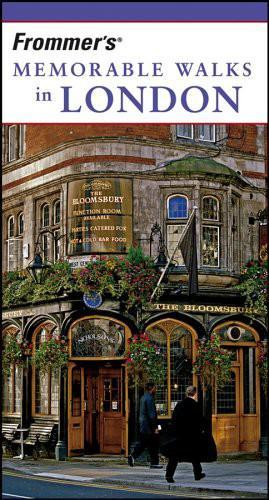
Frommer's Memorable Walks in London
by
Richard Jones
Published 2 Jan 1998
Anne’s Court, bear left across Wardour Street (home of many of London’s most important film companies) and walk straight onto Broadwick Street. Just ahead, at the corner of Poland Street, is the: 23. Broadwick Street Pump, a water pump that was identified by Dr. John Snow (1813–58) as the source of the 1854 Soho cholera epidemic. Snow, a noted anesthetist who had studied cholera during a previous epidemic, theorized that polluted drinking water caused the disease. He plotted on a map the addresses of more than 500 people who died in September 1854, and discovered that the Broad Street Public Water Pump (as it was then called) was at the geographic center of the epidemic.
…
Some content that appears in print may not be available in electronic formats. Manufactured in the United States of America 5 4 3 2 1 Contents List of Maps iv Introducing the City by the Thames 1 The Walking Tours 1 2 3 4 5 6 7 8 9 10 11 The City Dickens’s London A Historic Pub Walk Westminster & Whitehall St. James’s The East End Clerkenwell Bloomsbury Soho Chelsea Hampstead 10 27 43 55 71 87 99 110 122 136 152 Essentials & Recommended Reading 165 Index 177 LIST OF MAPS The Tours at a Glance 2 The Walking Tours The City Dickens’s London A Historic Pub Walk Westminster & Whitehall St. James’s The East End Clerkenwell Bloomsbury Soho Chelsea Hampstead 12 29 45 57 73 91 101 111 124 138 153 About the Author Londoner Richard Jones has been devising walking tours of his city since 1982.
…
Closing times vary with each station, but the last trains always leave between 11:30pm and midnight; the last departure time is posted at the entrance of each station. You can buy tickets from station ticket windows or from vending machines. Hold on to your ticket throughout your ride; you must present it when you reach your destination. Also be sure to pick up a handy Tube map, available free at station ticket windows. (There’s an Underground map on the inside back cover of this book as well.) Essentials & Recommended Reading • 167 By Bus On the majority of City Centre buses, you either pay the driver as you enter the bus, or you press your Oyster Card (see above) against the reader as you board. On the long bendy buses, you can board via any door if you have an Oyster Card—simply touch it to the reader as you board.
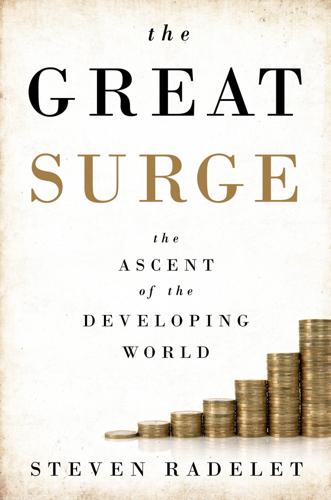
The Great Surge: The Ascent of the Developing World
by
Steven Radelet
Published 10 Nov 2015
The roots of the recent gains in health in developing countries stretch back more than two centuries to the improvements in health in Western Europe that began with the Enlightenment and the industrial revolution.5 The combination of increased incomes, improved nutrition, better living conditions, education, and public health interventions for clean water and improved sanitation led to rapid gains in mortality and morbidity. One of the most important breakthroughs was the discovery in 1855 by the London physician John Snow, known now as the father of modern epidemiology, that deadly cholera was being spread by contaminated drinking water.6 Snow’s work, alongside that of several others, led to the development of modern germ theory. This knowledge and the public health interventions it spurred were central to the reductions in child death and improvements in health in Western Europe.
…
For an excellent in-depth analysis of these changes, see Angus Deaton, The Great Escape: Health, Wealth, and the Origins of Inequality (Princeton, NJ: Princeton University Press, 2013). 6. For a terrific account of Snow’s dogged determination and sleuthing skills in tracing the origins of cholera, see Steven Johnson, The Ghost Map: The Story of London’s Most Terrifying Epidemic and How It Changed Science, Cities, and the Modern World (New York: Riverhead Books, 2007). 7. “Chapter 4: Mortality, 2010-Based NPP Reference Volume,” Office for National Statistics (United Kingdom), March 29, 2012, fig. 4.6, www.ons.gov.uk/ons/dcp171776_253938.pdf. 8.
…
Health expert Thomas Bollyky of the Council on Foreign Relations has shown that with the decline in child death and infectious diseases, NCDs have become the largest cause of death in developing countries. To some extent, this development is a normal part of the epidemiological transition: at very low incomes, infectious diseases such as cholera, diarrhea, malaria, and other parasites and viruses are the biggest killers. As incomes rise and societies are better able to fight those diseases, people live longer and are more likely to be affected by NCDs. This shift seems to be happening rapidly and is disproportionately affecting younger people in developing countries.
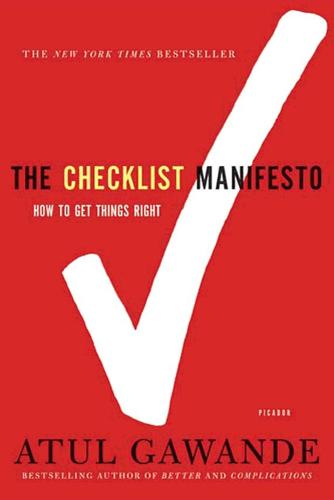
The Checklist Manifesto: How to Get Things Right
by
Atul Gawande
Published 2 Jan 2009
They came up with instances like the smallpox vaccination campaign that eradicated the scourge from the world in 1979 and the work of Dr. John Snow famously tracing a deadly 1854 London cholera outbreak to water in a public well. When the disease struck a London neighborhood that summer, two hundred people died in the first three days. Three-quarters of the area’s residents fled in panic. Nonetheless, by the next week, some five hundred more died. The dominant belief was that diseases like cholera were caused by “miasmas”—putrefied air. But Snow, skeptical of the bad-air theory, made a map of where the deceased had lived and found them clustered around a single water source, a well in Soho’s Broad Street.
…
Sick people, for instance, are phenomenally more various than airplanes. A study of forty-one thousand trauma patients in the state of Pennsylvania—just trauma patients—found that they had 1,224 different injury-related diagnoses in 32,261 unique combinations. That’s like having 32,261 kinds of airplane to land. Mapping out the proper steps for every case is not possible, and physicians have been skeptical that a piece of paper with a bunch of little boxes would improve matters. But we have had glimmers that it might, at least in some corners. What, for instance, are the vital signs that every hospital records if not a kind of checklist?
…
We have a thirty-billion-dollar-a-year National Institutes of Health, which has been a remarkable power house of medical discoveries. But we have no National Institute of Health Systems Innovation alongside it studying how best to incorporate these discoveries into daily practice—no NTSB equivalent swooping in to study failures the way crash investigators do, no Boeing mapping out the checklists, no agency tracking the month-to-month results. The same can be said in numerous other fields. We don’t study routine failures in teaching, in law, in government programs, in the financial industry, or elsewhere. We don’t look for the patterns of our recurrent mistakes or devise and refine potential solutions for them.
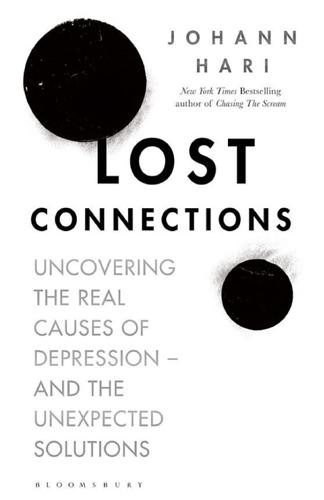
Lost Connections: Uncovering the Real Causes of Depression – and the Unexpected Solutions
by
Johann Hari
Published 1 Jan 2018
Sam, the doctor who helped transform this clinic, told me he suspects that a century from now we will look back on the discovery that you need to meet people’s emotional needs if you want them to recover from depression and anxiety as a key moment in medical history. Until the 1850s, nobody knew what caused cholera,6 and it killed enormous numbers of people. Then a physician named John Snow discovered (just a few miles from Sam’s clinic, coincidentally) that the disease is carried in water—and we started to build proper sewage systems. As a result, cholera outbreaks in the West stopped. An antidepressant, they have learned, isn’t just a pill. It’s anything that lifts your despair. The evidence that chemical antidepressants don’t work for most people shouldn’t make us give up on the idea of an antidepressant.
…
Yet nobody knew what people with “reactive” depression were meant to be reacting to, or where the line between these two different kinds of depression was—or even if it was a distinction that made any sense. To find the real story, George concluded, you had to do something that nobody had ever done before on a significant scale. You had to conduct a proper scientific investigation6 into depressed or highly anxious people, using techniques a little like those you’d use to (say) figure out why cholera spreads, or how pneumonia is contracted. So he began to draw up plans. In the South London district of Camberwell, as George walked through its streets, the thrum of the city seemed a world away. It was only two miles from central London, but the only thing that could convince you of that was the spire of St.
…
See also William Davies, The Happiness Industry: How the Government and Big Business Sold Us Well-Being (New York: Verso, 2016), 246. This suggests, at the very least, that it is a good place to start Paul Moloney, The Therapy Industry: The Irresistible Rise of the Talking Cure, and Why It Doesn’t Work (London: Pluto Press, 2013), 61. Until the 1850s, nobody knew what caused cholera http://www.bbc.co.uk/history/historic_figures/bazalgette_joseph.shtml, as accessed December 10, 2016. Chapter 18: Reconnection Three: To Meaningful Work It felt like a karaoke life I think I first heard this metaphor from the British writer Dennis Potter, in an interview where he was talking about his TV series Lipstick on Your Collar.

More: The 10,000-Year Rise of the World Economy
by
Philip Coggan
Published 6 Feb 2020
But although the death rate of new mothers fell dramatically, his theory was not widely acknowledged. Semmelweis had a nervous breakdown and was beaten to death by guards in an insane asylum, never knowing that his ideas would become widely approved.100 In 1854, John Snow, a doctor who had written about cholera transmission, successfully traced an outbreak of the disease to a water pump in London: when the pump was taken out of service, cholera cases declined.101 Between 1859 and 1870, a team led by Joseph Bazalgette created a network of sewers under London that stretched for 550 miles (885km) and connected to a network that was 13,000 miles (21,000km) in all.
…
In Mexico, the population fell by an estimated 90% and in Peru by 40%. Some of this was the result of military action or brutal treatment in places like Potosí. But most damage was caused by disease. The American population had never experienced the viruses that cause smallpox, influenza or measles, or bacteria that lead to tuberculosis and cholera.16 This was the stark downside of the Columbian exchange. It is important not to romanticise the pre-European societies of Latin America. Several civilisations had come and gone, with ecological decline probably playing a part in the collapse of the “classic” era in the first millennium CE. In 1500, both the Aztec and Inca societies were relatively recent developments and were technologically unsophisticated.
…
The boats that transported Chinese workers were known as “coffin ships”, because of the number of those who died during the voyage – the mortality rate on ships carrying indentured workers was much higher than for other passengers travelling on the same routes.34 When the workers arrived, conditions were poor; Indian labourers in Trinidad, for example, were confined to crowded barracks in insanitary surroundings. Many suffered from dysentery and cholera, as well as from malaria.35 Half of imported workers in Cuba did not survive their term of indenture.36 These workers built the railways, shifted cargo in the docks, and worked in the mines. Like the slaves, they did the dirty and dangerous work that locals were reluctant to do. They also suffered some of the same punishments as slaves.

Radical Uncertainty: Decision-Making for an Unknowable Future
by
Mervyn King
and
John Kay
Published 5 Mar 2020
Doctors resisted, indeed resented, the idea that they themselves caused the illnesses they were unable to treat. Angered ultimately to the point of derangement, Semmelweis died in a lunatic asylum. But his analysis was vindicated and today it is safer to give birth in a hospital than at home. In 1854, Dr John Snow dramatically reduced the spread of cholera in London by removing the handle of the Broad Street pump in London’s Soho district, forcing local residents to obtain water elsewhere. At the time, the prevailing narrative was that infectious diseases were spread by ‘miasma’ – noxious particles in the air. Given the vile smell which prevailed across London and other metropolitan areas at the time, this explanation was easy to believe.
…
Natural phenomena are more likely than social ones to be the result of stationary processes – the structure of the physical world changes less than do global business, finance and politics. But the impact of a pandemic is determined as much or more by the state of medical knowledge as by the pathogens of disease. The Black Death will not recur – plague is easily cured by antibiotics (although the effectiveness of antibiotics is under threat) – and a significant outbreak of cholera in a developed country is highly unlikely. But we must expect to be hit by an epidemic of an infectious disease resulting from a virus which does not yet exist. To describe catastrophic pandemics, or environmental disasters, or nuclear annihilation, or our subjection to robots, in terms of probabilities is to mislead ourselves and others.
…
Like Semmelweis, Snow did not understand why his high-handed intervention was effective – he had simply observed the correlation between the incidence of the disease and the use of the Broad Street facility. After the epidemic subsided, the pump handle was replaced at the demand of users, who resumed their use of water. It was still contaminated by faecal bacteria, but the cholera epidemic was over. Even in science, we rely on narratives; a good story can be more compelling than publication of detailed research results. And this is still true in the twenty-first century. For many years, it was conventional wisdom among doctors that stomach ulcers were caused by stress and bad lifestyle leading to a build-up of acid in the stomach.
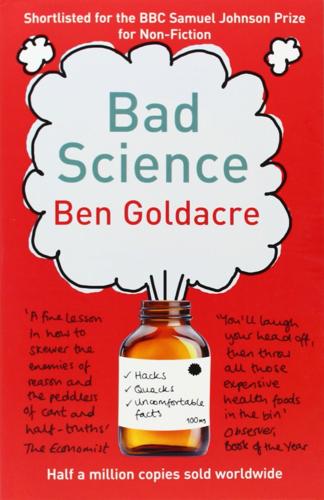
Bad Science
by
Ben Goldacre
Published 1 Jan 2008
And asbestos, through some genuinely brave and subversive investigative work, was shown to cause mesothelioma. The epidemiologists of the 1980s were On a roll, and they believed that they were going to find lifestyle causes for all the major diseases of humankind. A discipline that had got cracking when John Snow took the handle off the Broad Street pump in 1854, terminating that pocket of the Soho cholera epidemic by cutting off the supply of contaminated water (it was a bit more complicated than that, but we don’t have the time here) was going to come into its own. They were going to identify more and more of these one-to-one correlations between exposures and disease, and, in their fervent imaginations, with simple interventions and cautionary advice they were going to save whole nations of people.
…
A pragmatic clinician could only consider the value of a treatment by considering it in context. Here is a clear example of the benefits of placebo. During the nineteenth-century cholera epidemic, deaths were occurring in the London Homeopathic Hospital at just one third of the rate as in the Middlesex Hospital, but a placebo effect is unlikely to be all that beneficial in this condition. The reason for homeo-pathy’s success in this case is more interesting: at the time, nobody could treat cholera. So while hideous medical practices such as blood-letting were actively harmful, the homeopaths’ treatments at least did nothing either way.
…
We are obsessed with health—half of all science stories in the media are medical—and are repeatedly bombarded with sciencey-sounding claims and stories. But as you will see, we get our information from the very people who have repeatedly demonstrated themselves to be incapable of reading, interpreting and bearing reliable witness to the scientific evidence. Before we get started, let me map out the territory. Firsdy, we will look at what it means to do an experiment, to see the results with your own eyes, and judge whether they fit with a given theory, or whether an alternative is more compelling. You may find these early steps childish and patronising—the examples are certainly refreshingly absurd—but they have all been promoted credulously and with great authority in the mainstream media.
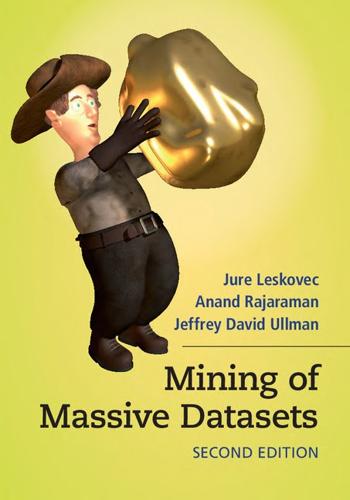
Mining of Massive Datasets
by
Jure Leskovec
,
Anand Rajaraman
and
Jeffrey David Ullman
Published 13 Nov 2014
EXAMPLE 1.2A famous instance of clustering to solve a problem took place long ago in London, and it was done entirely without computers.2 The physician John Snow, dealing with a cholera outbreak plotted the cases on a map of the city. A small illustration suggesting the process is shown in Fig. 1.1. Figure 1.1 Plotting cholera cases on a map of London The cases clustered around some of the intersections of roads. These intersections were the locations of wells that had become contaminated; people who lived nearest these wells got sick, while people who lived nearer to wells that had not been contaminated did not. Without the ability to cluster the data, Snow would not have discovered the cause of cholera.□ 1.1.5Feature Extraction The typical feature-based model looks for the most extreme examples of a phenomenon and represents the data by these examples.
…
Kumar, Introduction to Data Mining, Addison-Wesley, Upper Saddle River, NJ, 2005. 1 This startup attempted to use machine learning to mine large-scale data, and hired many of the top machine-learning people to do so. Unfortunately, it was not able to survive. 2 See http://en.wikipedia.org/wiki/1854_Broad_Street_cholera_outbreak. 3 That is, assume our hypothesis that terrorists will surely buy a set of 10 items in common at some time during the year. We don’t want to address the matter of whether or not terrorists would necessarily do so. 2 MapReduce and the New Software Stack Modern data-mining applications, often called “big-data” analysis, require us to manage immense amounts of data quickly.
…
Index A-Priori Algorithm, 201, 202, 208 Accessible page, 178 Active learning, 421 Ad-hoc query, 126 Adjacency matrix, 344 Adomavicius, G., 324 Advertising, 16, 110, 194, 267 Adwords, 276 Affiliation-Graph model, 352 Afrati, F.N., 66, 382 Agglomerative clustering, see Hierarchical clustering Aggregation, 31, 35 Agrawal, R., 226 Alon, N., 152 Alon–Matias–Szegedy Algorithm, 138 Amplification, 95 Analytic query, 50 AND-construction, 95 Anderson, C., 324 Andoni, A., 122 ANF, see Approximate neighborhood function ANF Algorithm, 376 Apache, 22, 67 Approximate neighborhood function, 376 Arc, 367 Archive, 124 Ask, 183 Association rule, 195, 196 Associativity, 25 Attribute, 30 Auction, 279 Austern, M.H., 67 Authority, 182, 183 Average, 135 B-tree, 265 Babcock, B., 153, 265 Babu, S., 153 Backstrom, L., 382 Bag, 38, 71 Balance Algorithm, 278 Balazinska, M., 67 Band, 83 Bandwidth, 20 Basket, see also Market basket, 191, 193, 194, 222 Batch gradient descent, 445 Batch learning, 421 Bayes net, 4 BDMO Algorithm, 257 Beer and diapers, 196 Bell, R., 324 Bellkor’s Pragmatic Chaos, 295 Berkhin, P., 190 Berrar, D.P., 414 Betweenness, 333 BFR Algorithm, 241, 244 BFS, see Breadth-first search Bi-clique, 339 Bid, 277, 279, 285, 286 BigTable, 66 Bik, A.J.C., 67 Binary Classification, 416 Biomarker, 195 Bipartite graph, 273, 329, 339, 340 BIRCH Algorithm, 265 Birrell, A., 67 Bitmap, 209 Block, 11, 19, 170, 171 Blog, 178 Bloom filter, 131, 207 Bloom, B.H., 153 Blum, A., 458 Bohannon, P., 67 Boldi, P., 382 Bonferroni correction, 5 Bonferroni’s principle, 4, 5 Bookmark, 176 Boral, H., 383 Borkar, V., 66 Bottou, L., 458 Bradley, P.S., 265 Breadth-first search, 333 Brick-and-mortar retailer, 194, 292, 294 Brin, S., 190 Broad matching, 279 Broder, A.Z., 18, 122, 190 Bu, Y., 67 Bucket, 9, 129, 143, 147, 207, 257 Budget, 277, 284 Budiu, M., 67 Burges, C.J.C., 458 Burrows, M., 67 Candidate itemset, 204, 217 Candidate pair, 83, 208, 210 Carey, M., 66 Categorical feature, 416, 455 Centroid, 230, 233, 238, 241, 245 Chabbert, M., 324 Chandra, T., 67 Chang, F., 67 Characteristic matrix, 76 Charikar, M.S., 122 Chaudhuri, S., 122 Checkpoint, 43 Chen, M.-S., 226 Child, 333 Cholera, 3 Chronicle data model, 152 Chunk, 22, 217, 244 CineMatch, 321 Classifier, 303, 415 Click stream, 125 Click-through rate, 271, 277 Clique, 338 Cloud computing, 15 CloudStore, 22 Cluster computing, 19, 20 Cluster tree, 252, 253 Clustera, 38, 66 Clustering, 3, 16, 228, 310, 325, 330, 415 Clustroid, 232, 239 Collaboration network, 328 Collaborative filtering, 4, 16, 70, 267, 292, 306, 328 Column-orthonormal matrix, 397 Combiner, 25, 168, 170 Communication cost, 20, 44, 365 Community, 16, 325, 336, 338, 361 Community-affiliation graph, 352 Commutativity, 25 Competitive ratio, 16, 272, 275, 279 Complete graph, 339, 340 Compressed set, 245 Compute node, 19, 20 Computer game, 299 Computing cloud, see Cloud computing Concept, 399 Concept space, 404 Confidence, 195, 196 Content-based recommendation, 292, 296 Convergence, 426 Cooper, B.F., 67 Coordinates, 228 Cortes, C., 458 Cosine distance, 89, 99, 298, 302, 404 Counting ones, 142, 257 Covering an output, 56 Craig’s List, 267 Craswell, N., 290 Credit, 334 Cristianini, N., 458 Cross-Validation, 420 Crowdsourcing, 422 CUR-decomposition, 384, 406 CURE Algorithm, 249, 252 Currey, J., 67 Curse of dimensionality, 230, 254, 452, 455 Cut, 343, 344 Cyclic permutation, 81 Cylinder, 11 Czajkowski, G., 67 DAG, see Directed acyclic graph Darts, 132 Das Sarma, A., 66 Dasgupta, A., 382 Data mining, 1 Data stream, 15, 220, 256, 270, 434 Data-stream-management system, 123 Database, 15 Datar, M., 122, 153, 265 Datar–Gionis–Indyk–Motwani Algorithm, 143 Dead end, 158, 161, 162, 184 Dean, J., 67 Decaying window, 148, 222 Decision tree, 17, 303, 419, 420, 456 Deerwester, S., 414 Degree, 341, 362 Degree matrix, 345 Dehnert, J.C., 67 del.icio.us, 299, 329 Deletion, 90 Dense matrix, 28, 406 Density, 238, 240 Depth-first search, 374 Determinant, 386 DeWitt, D.J., 67 DFS, see Distributed file system Diagonal matrix, 397 Diameter, 237, 240, 368 Diapers and beer, 194 Difference, 31, 34, 38 Dimension table, 50 Dimensionality reduction, 16, 312, 384, 453 Directed acyclic graph, 333 Directed graph, 367 Discard set, 244 Disk, 11, 199, 230, 252 Disk block, see Block Display ad, 267, 269 Distance measure, 87, 228, 331 Distinct elements, 133, 137 Distributed file system, 19, 21, 192, 198 DMOZ, see Open directory Document, 69, 72, 194, 229, 286, 297, 299, 418 Document frequency, see Inverse document frequency Domain, 181 Dot product, 89 Drineas, P., 414 Dryad, 66 DryadLINQ, 66 Dual construction, 330 Dubitzky, W., 414 Dumais, S.T., 414 Dup-elim task, 40 e, 12 Edit distance, 90, 92 Eigenpair, 385 Eigenvalue, 158, 346, 384, 395 Eigenvector, 158, 346, 384, 389, 394 Email, 328 Energy, 402 Ensemble, 303, 456 Entity resolution, 104 Equijoin, 31 Erlingsson, I., 67 Ernst, M., 67 Ethernet, 19, 20 Euclidean distance, 87, 101, 452 Euclidean space, 87, 91, 228, 230, 233, 249 Exponentially decaying window, see Decaying window Extrapoliation, 450 Facebook, 16, 176, 326 Fact table, 50 Failure, 20, 26, 39, 40, 42 Faloutsos, C., 383, 414 False negative, 83, 93, 216 False positive, 83, 93, 132, 216 Family of functions, 94 Fang, M., 226 Fayyad, U.M., 265 Feature, 252, 297, 298 Feature selection, 421 Feature vector, 416, 455 Fetterly, D., 67 Fikes, A., 67 File, 21, 198, 215 Filtering, 130 Fingerprint, 107 First-price auction, 279 Fixedpoint, 96, 182 Flajolet, P., 153 Flajolet–Martin Algorithm, 134, 376 Flow graph, 39 Fortunato, S., 382 Fotakis, D., 382 French, J.C., 265 Frequent bucket, 208, 209 Frequent itemset, 4, 192, 201, 204, 340, 415 Frequent pairs, 202 Frequent-items table, 203 Freund, Y., 458 Friends, 326 Friends relation, 49 Frieze, A.M., 122 Frobenius norm, 388, 402 Furnas, G.W., 414 Gaber, M.M., 18 Ganti, V., 122, 265 Garcia-Molina, H., 18, 190, 226, 265, 382 Garofalakis, M., 153 Gaussian elimination, 159 Gehrke, J., 153, 265 Generalization, 421 Generated subgraph, 339 Genre, 297, 309, 321 GFS, see Google file system Ghemawat, S., 67 Gibbons, P.B., 153, 383 Gionis, A., 122, 153 Girvan, M., 382 Girvan–Newman Algorithm, 333 Global minimum, 314 GN Algorithm, see Girvan–Newman Algorithm Gobioff, H., 67 Golub, G.H., 414 Google, 155, 166, 276 Google file system, 22 Google+, 326 Gradient descent, 17, 320, 355, 442 Granzow, M., 414 Graph, 42, 54, 325, 326, 361, 368 Greedy algorithm, 270, 271, 274, 278 GRGPF Algorithm, 252 Grouping, 24, 31, 35 Grouping attribute, 31 Groupon, 329 Gruber, R.E., 67 Guha, S., 266 Gunda, P.K., 67 Gyongi, Z., 190 Hadoop, 22, 67 Hadoop distributed file system, 22 Hamming distance, 63, 91, 98 Harris, M., 321 Harshman, R., 414 Hash function, 8, 74, 78, 83, 129, 131, 134 Hash key, 9, 285 Hash table, 8, 10, 11, 200, 207, 209, 211, 285, 287, 362 Haveliwala, T.H., 190 HDFS, see Hadoop distributed file system Head, 372 Heavy hitter, 362 Henzinger, M., 122 Hierarchical clustering, 230, 232, 249, 310, 331 Hinge loss, 441 HITS, 182 Hive, 66, 67 Hopcroft, J.E., 374 Horn, H., 67 Howe, B., 67 Hsieh, W.C., 67 Hub, 182, 183 Hyperlink-induced topic search, see HITS Hyperplane, 436 Hyracks, 38 Identical documents, 111 Identity matrix, 386 IDF, see Inverse document frequency Image, 125, 297, 298 IMDB, see Internet Movie Database Imielinski, T., 226 Immediate subset, 218 Immorlica, N., 122 Important page, 155 Impression, 268 In-component, 159 Inaccessible page, 178 Independent rows or columns, 397 Index, 10, 362 Indyk, P., 122, 153 Initialize clusters, 242 Input, 54 Insertion, 90 Instance-based learning, 419 Interest, 196 Internet Movie Database, 297, 321 Interpolation, 450 Intersection, 31, 33, 38, 71 Into Thin Air, 295 Inverse document frequency, see also TF.IDF, 8 Inverted index, 155, 268 Ioannidis, Y.E., 382 IP packet, 125 Isard, M., 67 Isolated component, 160 Item, 191, 193, 194, 293, 308, 310 Item profile, 297, 299 Itemset, 191, 199, 201 Jaccard distance, 87, 88, 95, 298, 453 Jaccard similarity, 69, 77, 87, 177 Jacobsen, H.
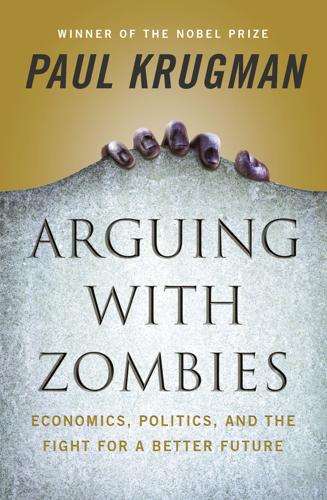
Arguing With Zombies: Economics, Politics, and the Fight for a Better Future
by
Paul Krugman
Published 28 Jan 2020
Circa 1996, the great majority of economists, myself included, believed that while the world was full of risks, one particular kind of risk, that of a 1930s-type depression, had been eliminated by the progress of economic knowledge. Such things have, after all, happened to other social ills. Back in 1854 Dr. John Snow realized that a cholera outbreak in London was tied to just one public pump; once epidemiologists realized that tainted water spread the disease, cholera epidemics became a thing of the past. Similarly, in 1936 John Maynard Keynes realized that inadequate spending and cascading bank failures were the cause of mass unemployment, and once policymakers came to understand that diagnosis, Great Depression–style slumps also became a thing of the past.
…
W., 306 Bush, George W., 276, 381 and election (2000), 387 on health care, 47 as movement conservative, 299, 301 and national security, 306 and taxes, 215–16, 229, 299 Bush, Jeb, 60, 381 Bush (W.) administration: authoritarianism of, 301 bait-and-switch tactics of, 378–79, 387 compared to that of Trump, 9, 13 corruption of, 343 disdain for rule of law, 301 dishonesty of, 9, 25, 26–27, 93, 343, 377–78, 389 functions outsourced by, 299–300 general incompetence of, 300 and income distribution, 271 and Iraq war, 13, 26, 27, 299, 343, 381 reliance on elite consensus, 14 on Social Security privatization, 14–15, 22–24, 25–27, 28–29, 32, 302, 306, 361, 377, 378 tax cuts by, 16–17, 20, 26, 50 torture authorized by, 300 voting rights curtailed by, 300 business decisions, 227–28 California: health care in, 77 housing bubble in, 84 taxes in, 216, 229 Canada: health care in, 36, 45, 47, 48–49 imports from, 253, 255 unions in, 290 Cantor, Eric, 302–4, 386 cap-and-trade system, 339 Capital Asset Pricing Model (CAPM), 135–36 capital gains: on houses, 87, 274 and income inequality, 273–74 inflation component of, 273 capitalism, voter confusion about, 320 capital market, 228 Capitol Hill Baby-Sitting Co-op, 137–38 carbon emissions, tax on, 339 Carter, Jimmy, 276 Cato Institute, 22, 23, 317, 320 caution, risk of, 104, 106, 107, 116–17 Cavuto, Neil, 44 Census data, 262–65, 263 capital gains omitted from, 264 Current Population Survey, 263, 264 and income distribution, 265–66, 266 top-coding, 264, 265 Center for a Responsible Federal Budget (CRFB), 193 central banks, 103–4, 124, 128, 133, 181, 182, 409–10 centrists, 308 belief in symmetry between left and right, 28, 29, 309 double standards of, 208–9 influence of, 28 and public opinion, 298, 306 Century Foundation, 22 CEOs, compensation for, 259, 262, 265 Chandler, Raymond, The Simple Art of Murder, 327 Charity Watch, 388 Chávez, Hugo, 324 Cheney, Dick, 300, 381 Chicago School, 131, 143–44 child care, proposals on, 210, 211, 212 Chile, retirement system in, 22, 23 China: economy of, 324 U.S. trade with, 252, 254, 255 cholera, 81 Civil Rights Act (1964), 53 civil rights movement, 346 classless society, myth of, 285 climate change, 327–28 and alternative energies, 340 and corruption, 337 deniers of, 329–31, 332–34, 335–37, 365 and fossil fuels, 333, 336 global temperatures in, 330 greenhouse gases as a cause of, 330, 335, 339–40 and Green New Deal, 328, 338–40 “hockey stick” graph on, 328, 336 politicization of, 4 positive incentives in, 340 transition industries in, 340 and tropical storms, 330 Climategate, 336 Clinton, Bill: Gingrich’s attacks on, 362 and health care (1993), 35, 37, 50, 378 and income inequality, 271 smear tactics against, 380 and taxes, 7, 215 Clinton, Hillary: and election (2016), 376, 388–89 and health care, 50, 51–52 and income inequality, 291 smear tactics against, 380 Trump vs., 336, 343 Clinton Foundation, 388 “Closing the Skills Gap” (Dimon and Seltzer), 166–68 Coal and Steel Community (1952), 175 coal-fired power plants, 331 coal mining, 289, 340 Cochrane, John H., 131, 138, 143 cockroach ideas, 329 Cohen, Michael, 359 Cohn, Jonathan, 300 coins: gold and silver, 411, 412 college graduates, earnings of, 282, 283 Collins, Susan, 360 Comey, James, 336, 343 Coming Apart: The State of White America, 1960–2010 (Murray), 285–86 Commission on Economic Security (1934), 26 Common Market (1959), 175 Commonwealth Fund, 48 competition: imperfect, 400 perfect, 402 “confidence fairy,” belief in, 158, 160, 161 Congressional Budget Office (CBO), 19, 29, 54, 59, 195–96 budget and economic outlook of, 115–16 Green Book of, 265 and income inequality, 265–66, 266, 272–74, 285 and Ryan plan, 201, 202 Conscience of a Conservative, The (Goldwater), 300 conservatism: ambition of practitioners, 151 bad faith of, 7, 8, 10, 75, 149–51, 332–33 and bipartisanship, 198 compassionate conservatism, 378 confusion about socialism in, 323 democracy rejected by, 369 disinterest in good government, 300 and income inequality, 261–62, 266, 271–75 and Keynesian economics, 124 moral and intellectual decline of, 262 movement conservatism, 8, 297–98, 299–301, 302–4, 307, 343, 368 Orwellian instincts in, 281 permanent rule by, 13 Republican, see Republican Party taking credit for growth, 275–76 uses and abuses of statistics by, 262 wing-nut welfare as safety net for, 303 conservative professional economists, 149–51 conspiracy theories, 150, 337, 343, 345–46, 365 Constitution, U.S., 301 containerization, 289 Cornyn, John, 346 corporate profits, 228, 232–33 corporate taxes: avoidance vs. evasion of, 349 cuts in, 201, 202, 218, 221, 222, 227, 229, 230, 231–33, 232, 351 and stock buybacks, 227, 230 corporations: “bringing money home,” 230 cooking their books, 228, 230–31, 231 global, 231–32 profits to foreign nationals, 232–33 and trade war, 371 unrestricted power for, 318 corruption: and Bush administration, 343 and climate change, 337 in Europe, 358 in financial services, 92, 93 in highly unequal societies, 283, 324, 349–50, 358 and Republican Party, 335–37, 338, 343, 358 in trade policy, 246, 247, 254, 255 of Trump administration, 70, 246, 331, 338, 343, 349, 350 “Cost of Bad Ideas, The” (Krugman), 123–25 Council of Economic Advisers, and CEA calculation, 271–72 Cox, Christopher, 93 credit, 89, 90, 104 “Cruelty Caucus, The” (Krugman), 65–66 Cruz, Ted, 57, 225 Cruz amendment, 69 cryptocurrencies, 411–14 Crystal, Graef, 265 In Search of Excess, 262 Cuccinelli, Ken, 336 currency, 412–14 fiat, 412, 414 optimum currency areas, 177 Customs and Border Protection, 371 debt: and austerity policies, 97–99, 163–65, 203–4, 207–8 fear of, 107, 116 and G.D.P., 154, 204–5, 205 interest rates on, 204, 211 magic threshold of, 158, 385 overrated as issue, 194, 206, 208 problematic, 153 and sustainable growth rate, 153–54, 204 and taxes, 154, 222–23, 224–26 tipping point of, 165 and total wealth, 154 Trump’s SOTU on, 207–9 winter of, 203–6 “debt scolds,” 204, 205, 206 “deficit scolds,” 194, 207, 209 deficit spending, 153, 218 deleveraging, 97 DeLong, Brad, 131, 143–44, 270, 316, 407 democracy: threats in Europe to, 188, 189, 344, 346, 358, 359 threats in U.S. to, 366, 367–69 Democratic Party: basic values of, 366 center-left position of, 28, 306, 310 and civil rights, 310 future plans for, 338 and Green New Deal, 338–40 and health care, 36, 55, 77, 78 House majority of, 338 impact in state governments, 77, 78 as loose coalition of interest groups, 297, 368 and midterm elections, 76, 194, 338, 344, 367 policy analysis by, 73 social democratic aspect of, 313–14, 321 and Social Security, 29, 30 subpoena power of, 338 De-Moralization of Society (Himmelfarb), 285–86 Denmark, economy of, 184, 239, 313, 317, 319–21, 323 deregulation, 370, 371, 409 derivatives, 135 “Developing a Positive Agenda” (Krugman), 35–37 Dew-Becker, Ian, 283 Diamond, Peter, 234–35, 236 diminishing marginal utility, 235 Dimon, Jamie, 166 dishonesty, power of, 324 “Dismal Science, The” (Krugman), 393–94 Dixit, Avinash K., 396–98, 405 dollar, international value of, 228 Donors Trust, 333 “Don’t Blame Robots for Low Wages” (Krugman), 260, 288–90 dot-com bubble, 90 double talk, political, 222, 225–26 Dow 36,000 (Gleason and Hassett), 84, 86 Draghi, Mario, 181–83 dumping, and tariffs, 252 Duncan, Greg, 277 economic analysis, importance of, 383–84, 386, 400 economic freedom, 317–18, 317 economic geography, 398–99, 400, 403 economic growth: (1982–1984), 215 long-term, 275–76 post–World War II, 219, 234 so-so, 315 taking credit for, 275–76 and taxes, 236–37, 236 economic models: Arrow-Debreu model, 402 CAPM, 135–36 Heckscher-Ohlin, 400–401, 403 importance of, 400 as metaphors, 400, 402 minimalist, 403 monopolistic competition models, 396–98 and neoclassical theory, 140 purposes of, 112 economic policy, failure of, 407 economics: behavioral, 146 easy questions in, 6 golden era of, 130–31 Keynesian, see Keynesian economics mathematics in, 131 monetary, 176 “neoclassical,” 132, 133, 139–40, 147 and politics, 149–51 “positive” vs.
…
When you’re doing micro, you assume rational individuals and rapidly clearing markets; when you’re doing macro, frictions and ad hoc behavioral assumptions are essential. So what? Inconsistency in the pursuit of useful guidance is no vice. The map is not the territory, and it’s O.K. to use different kinds of maps depending on what you’re trying to accomplish: if you’re driving, a road map suffices, if you’re going hiking, you really need a topo. But economists were bound to push at the dividing line between micro and macro—which in practice has meant trying to make macro more like micro, basing more and more of it on optimization and market-clearing.
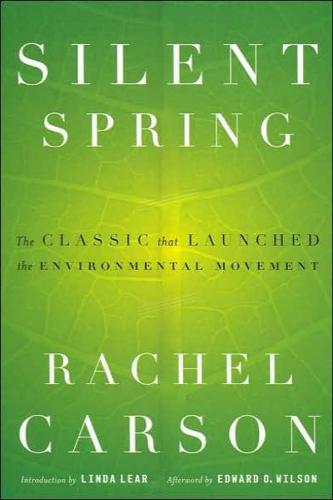
Silent Spring
by
Rachel Carson
,
Linda Lear
and
Edward O. Wilson
Published 1 Jan 1962
Despite the prominence that "magic bullets" and "wonder drugs" hold in the layman's mind, most of the really decisive battles in the war against infectious disease consisted of measures to eliminate disease organisms from the environment. An example from history concerns the great outbreak of cholera in London more than one hundred years ago. A London physician, John Snow, mapped the occurrence of cases and found they originated in one area, all of whose inhabitants drew their water from one pump located on Broad Street. In a swift and decisive practice of preventive medicine, Dr. Snow removed the handle from the pump. The epidemic was thereby brought under control—not by a magic pill that killed the (then unknown) organism of cholera, but by eliminating the organism from the environment. Even therapeutic measures have the important result not only of curing the patient but of reducing the foci of infection.
…
As matters stand now, we are in little better position than the guests of the Borgias. 12. The Human Price AS THE TIDE of chemicals born of the Industrial Age has arisen to engulf our environment, a drastic change has come about in the nature of the most serious public health problems. Only yesterday mankind lived in fear of the scourges of smallpox, cholera, and plague that once swept nations before them. Now our major concern is no longer with the disease organisms that once were omnipresent; sanitation, better living conditions, and new drugs have given us a high degree of control over infectious disease. Today we are concerned with a different kind of hazard that lurks in our environment—a hazard we ourselves have introduced into our world as our modern way of life has evolved.

The Quiet Coup: Neoliberalism and the Looting of America
by
Mehrsa Baradaran
Published 7 May 2024
Sometimes, change happens very slowly, a reality that led the German physicist Max Planck to conclude that, in fact, science advances one funeral at a time. In a famous, oft cited example, when cholera was spreading through London in the mid-nineteenth century, scientists blamed it on “bad air,” the miasma theory. The disease continued to spread until a physician named John Snow mapped the outbreak and found a single water pump from which cholera was infecting people. Germ theory was born, as was the modern science of epidemiology, which was refined by new data and tests. The old guard resisted Snow’s theory, but that theory stopped the spread of cholera and, epidemic by epidemic, it became the reigning one. It replaced the old one because it worked.
…
See also JP Morgan (JP Morgan Chase) chemical weapons, 38 Chevron Corporation, 37, 47, 60, 142 Chevron U.S.A., Inc. v. Natural Resources Defense Council, Inc., 263 Chicago, Ill., 157, 202, 315 Chicago School (Chicago Boys), 29, 54, 55, 156, 157, 168, 169, 227, 231, 256. See also University of Chicago childbearing, 178 Chile, 37, 54–55, 59, 61, 227, 363 China, 39, 59, 335 cholera, 23 Chotiner, Isaac, 178 Christianity, xxix, 184, 187, 190 Christian right, 83, 185–89, 217 Christie’s, 330 Churches of Christ in America, 83 Churchill, Winston, 354 cigarettes, 86 Citadel Capital, 332 Citibank, 207–8 Citigroup, 261, 268, 290 Citizens United v. Federal Election Commission, 114, 149–51 City of Debtors (Fleming), 202 civil rights (civil rights laws), xxxiii, 8, 16, 19, 25, 78, 93, 104, 105, 125, 140, 186, 224 Civil Rights Act (1964), 5, 7, 9, 39–40, 73, 116–19, 138, 221, 364, 375 civil rights groups, 74, 88 civil rights movement, xxxi–xxxii, 5, 7, 10, 21, 56, 87, 93, 95, 201, 202, 212 civil unrest of 1960s, 4–10, 39–40, 317 Civil War, 263 civil wars, 43 Claremont Institute, 153 Clark, Kenneth, 144 class action lawsuits, 209, 210, 212 class conflict, 227 Classical Liberal Institute (NYU), 150 Cleaver, Eldridge, 87 climate change, xxiv, 353 Clinton, Bill, and administration, 88, 118, 209, 230–31, 258, 300, 316 Clinton, Hillary, xxiv, xl, 88, 149, 299, 300, 315, 316 Closing of the American Mind, The (Bloom), 90 coal, 50, 70 Coase, Ronald, 134, 156, 157, 159, 170–71, 175, 193, 204, 209, 210, 215, 266 “The Problem of Social Costs,” 171, 210 Coase theorem, 160, 165, 170–72, 224 Coates, John, 115 coding capital, 274 Cohen, Manuel F., 81–82 Cohen, Steven A., 306 Coinbase, 327 Cold War, 29, 34, 68 collectivism, 32, 44, 84, 90, 223, 235, 352 college endowments, 216 colonization and colonialism, 12, 34–37, 39–40, 42, 43, 48, 49, 51, 53–54, 59, 165, 172, 317, 354, 362.
…
Instead of pushing for integration “now,” which Powell believed would accelerate white flight and diminish the quality of schools, the Court should wait until residential segregation simply petered out.14 Yet Powell’s diplomatic and genteel resistance reached the same results without the controversy, presaging his tenure on the Court. Rather than oppose the desegregation orders, he found a route around them through a series of legal procedures that drew district lines using neighborhood maps which were conveniently racially segregated, ensuring that Richmond schools remained segregated “within legal bounds.”15 By the time he stepped down from the school board, he had avoided any real protests, and “only 2 of 23,000 black children in Richmond attended schools with whites.”16 Powell remained steadfastly opposed to school integration through busing and worked—including during his time on the Court—to place all decision-making power in the hands of local school boards.
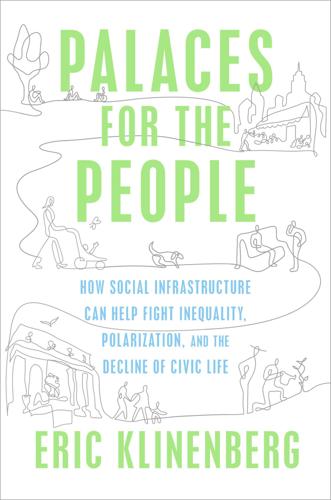
Palaces for the People: How Social Infrastructure Can Help Fight Inequality, Polarization, and the Decline of Civic Life
by
Eric Klinenberg
Published 10 Sep 2018
“Most of this work was descriptive and offered theories,” writes the University of Pennsylvania criminologist John MacDonald, “but did not attempt to provide guidance on how to curb crime.” He compares this tradition, unfavorably, with the work of British health scholars, most notably John Snow, whose research on cholera “noted the importance of the spatial environment in shaping human health and suggested the separation of sewers and drinking water wells to prevent water-borne diseases.” Reducing crime is more difficult than preventing cholera, but MacDonald, who’s done pioneering experimental research on how places influence crime rates, is one of many contemporary environmental criminologists with something new and significant to offer.
…
I came back to Chicago whenever I could and eventually moved there to conduct fieldwork, turning my family’s basement into an operations center and making the heat wave the subject of my dissertation. Like the CDC, I conducted my own comparison of “matched pairs,” only I was looking at how the heat wave affected entire neighborhoods, not just individuals. To get oriented, I found a map of heat deaths and laid it over various maps of poverty, violence, segregation, and aging in Chicago neighborhoods. I identified adjacent communities that had similar demographic profiles yet sharply different rates of heat wave mortality. I ran the numbers, analyzing all the neighborhood data that social scientists ordinarily use, but none of the standard variables could explain the divergent outcomes.
…
In rural areas, the distance must be greater than ten miles. Delaram Takyar, an NYU graduate student and research assistant for this book, calculated the percentage of low-income census tracts by using data from the USDA Food Access Research Atlas. fortunate enough to live near them: See the interactive map at the Chicago Urban Agriculture Mapping Project, http://cuamp.org/#/searchGardens?q=-1&q=-2&community=-1&ward=-1&boardDistrict=-1&municipality=-1. overheated urban environments: American Public Health Association, Improving Health and Wellness Through Access to Nature, November 5, 2013, https://www.apha.org/policies-and-advocacy/public-health-policy-statements/policy-database/2014/07/08/09/18/improving-health-and-wellness-through-access-to-nature.

Smart Cities: Big Data, Civic Hackers, and the Quest for a New Utopia
by
Anthony M. Townsend
Published 29 Sep 2013
Heeks calls this model “para-poor”: outsiders work alongside members of poor communities in “participative, user-engaged design processes.”43 As the movement evolves, and technologies like the mobile phone trickle down, Heeks envisions a second shift to “per-poor” innovation, done entirely by and for the poor. While Map Kibera is clearly a para-poor project, with Westerners bringing in new technology and design ideas, it has created a framework on which per-poor innovation can happen. Mapping has tremendous power to improve the slums of the developing world. John Snow’s map of cholera deaths in 1850s London recast the public understanding of slum conditions, and spurred reforms that eventually rid the city of the disease for good. In India, slum mapping is helping change the practice of city planning, which long considered those communities “chaotic masses rather than coherent urban areas,” according to Shelter Associates.44 But in both cases, governments responded achingly slowly.
…
Compared to nineteenth-century London, the results are actually quite good. Sealed in their plastic tomb, disease-carrying microbes have a much harder time spreading. Cholera, dispersed through London’s contaminated water supply, killed more than ten thousand people in 1853–54 alone.36 Kibera has its share of water-borne disease but nothing on that scale. Home to an estimated 250,000 residents, Kibera is one of Africa’s largest slums.37 But if you looked it up on Google Maps in 2008 and toggled between the satellite view and street-map view, you could make it disappear. One second it was there, a zoomable patina of corrugated tin shacks amid a rich tapestry of alleys and roads, unable to hide from a camera floating in space.
…
Once upon a time, pedestrians in American and European cities lived in fear of airborne feces: before modern sanitation was introduced, the cry of “Gardez l’eau” (literally “Look out for the water!”) would herald the evacuation of one’s chamber pot into the street.34 As cities like London boomed during the nineteenth century, every available body of water, from creeks to rivers to ponds, became an open cesspool. Only repeated cholera epidemics, and the “Great Stink” of 1858 (which forced Parliament to soak the curtains of the House of Commons in lime to mask the foul odor of the Thames River) would spur government action.35 Today, this ugly practice has reemerged for a whole new generation of city dwellers in the developing world, an ad hoc adaptation to unplanned urban growth and a lack of investment in sanitation.
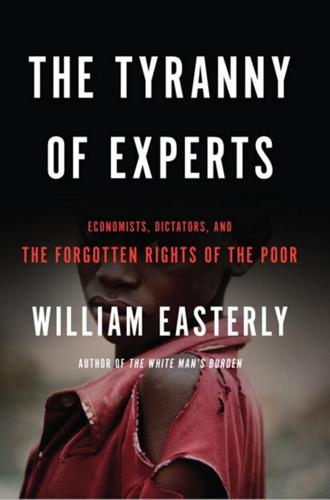
The Tyranny of Experts: Economists, Dictators, and the Forgotten Rights of the Poor
by
William Easterly
Published 4 Mar 2014
We will see in a future chapter how free societies are the best option for scientific discoveries and technological breakthroughs. Here we just note in passing that the germ theory of disease needed to arrive in New York. It did so later in the nineteenth century, mainly through research from England. The physician John Snow’s famous identification of a particular water pump in London as the source of the contaminated water that spread cholera in 1854 London was a key turning point.27 Virtually all the scientific discoveries that also enable progress today on child mortality in poor countries were made in free societies. The next problem after understanding the science was indeed the lack of proper water and sanitation in New York.
…
Between 1849 and 1865, the new Croton Aqueduct department also laid down a network of sewer pipes.29 (Prior to that effort, the word sewer just referred to an open ditch down the middle of residential streets.) 30 An 1851 map showed the sewer line had reached the Greene Street block, although that was as far north as it went on Greene. Coverage for the city was still minimal. In 1856, New York had about 10,000 “water closets” featuring piped-in water and piped-out sewage for a population of 630,000.31 Political reform movements demanded more. Epidemics of cholera (1849, 1854, 1866) and typhus (1851, 1864) helped them make their case.32 As we have seen with the death of Benjamin Seixas’s brother Myer from typhus, contagious diseases were a problem for all classes of society.
…
Benjamin and his wife Mary had the tragedy of seeing three of their ten children die as infants (and a fourth would die later at age eighteen). First, their daughter Sara died at three months of age in 1842. In 1849, at eight months of age, their son Daniel died of convulsions (possibly reflecting acute dehydration from a diarrheal disease like cholera). In 1852, their son Washington died at eight months.23 Benjamin’s relatives, even his wealthy stockbroker cousins Mendes Nathan and Benjamin Nathan, did not escape health tragedies. Benjamin Nathan’s daughter Luisa died of scarlet fever at age five on Bleecker Street in 1852. The next year his son Lucien died at the age of seven months.24 Mendes Nathan, down Greene Street from Benjamin Seixas at 22 Greene, saw his daughter Constance die from dysentery at the age of nineteen months in 1849.
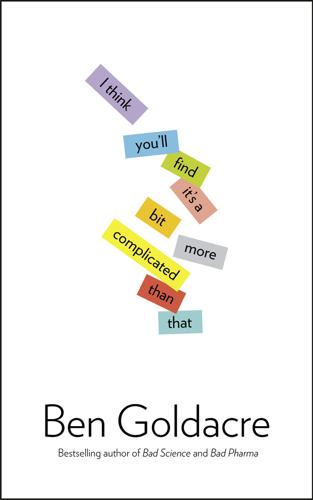
I Think You'll Find It's a Bit More Complicated Than That
by
Ben Goldacre
Published 22 Oct 2014
Maybe densely populated poor areas with less political influence have more masts foisted upon them by planning committees, and maybe these poor areas also have more suicides. Or maybe Dr Coghill is on to something? Clusters on maps have been the beginning of several interesting stories in epidemiology, including John Snow’s discovering, in 1854, that the Broad Street pump was responsible for the Soho cholera outbreak. I asked Dr Coghill which ‘averages’ he meant. But he would not tell me. Who is Dr Coghill? He says he doesn’t have a doctorate, and that the Express made a mistake. Does he ‘sit on a government advisory committee on mobile radiation’?
…
(Goldacre report for UK education minister) 202–18 Bundesbank 56 Burstow, Paul 174–6 Bush, George W. 13, 185, 298, 316 Cabinet Office White Paper on using randomised controlled trials to improve government policy, 2011 202n Cambridge Film Festival 281, 283 Cambridge University 102, 226, 352, 355 Cameron, David 173 Campbell, Denis 343, 344, 346, 347–55 cancer: bladder cancer and fluoride 24–5; bladder cancer and swimming in chlorinated water 342; bowel cancer rates, UK 101–4; brain cancer and mobile phones 116–18; breast cancer and abortion 200–1; breast cancer and diet 338–40; breast cancer and red wine 269; breast cancer screening 114–15; care.data and 78, 83; cervical cancer jab 331–4; using Facebook and 221; herbal medicine and 265, 267; lung cancer and alcohol 107–9; prostate cancer 144; smoking and 3, 22, 319; trials published, only one in four 146; UK survival rates 169–71, 173; urinary tract 265; vaccination and 267, 331–4 Cancer Research UK 339 capital punishment, murder rates and 311–12 Cardiff University 29–31, 40 CardioSEAL 248 care.data 77–86 Cataldo, Janine 20–1 Caterson, Professor 30, 31 Catholic Church, condoms and xx, 183–5, 186 caveats in newspaper articles 338–40 Cellarnot 123 censorship, Brain Gym and 10–12 Central TV 269, 270 Cervarix 332, 333 cervical cancer 332–4 chance, certainty of 56–8 Channel 4 News 118, 121, 197, 251 Charlton, Bruce 140–1, 145 chatnannies.com 393, 395 cherry-picking scientific literature xvii, 5–8, 12, 174, 176–7, 192, 193, 252, 336, 349, 355 Chief Medical Officer for Wales 12 child abuse xix, 157–9, 391–5 children, critiques of adult pseudoscience by 10–12 Chimoio, Archbishop Francisco 183–4 China: girls’ love of pink and 44–5 Chinese traditional medicine xix, 265–7, 388 chlorthalidone 119–20 cholera, Soho outbreak, 1854 365 Christian Medical Fellowship 197 Church, Dr Timothy 336–7 CIA 357 cigarette packaging xxi, 318–21 Cirak, Sebahattin 121 Circulation 248 ‘citation classics’ 9–10, 102–3, 173 Citation, network of 26–7 ClimateSock 96 Clinical Trials Units 217 clustered water 388–9 clusters on maps 364–6 coalition government, UK, 2010–14: drugs addicts and sentencing policy 177–9; NHS reform 73, 169–77; ‘Programme for Government’ 177 Cochrane, Archie 209–10, 211, 218, 252, 297–300 Cochrane Group 298 Cochrane Library 298, 300, 336 cod liver oil 29–31 Coe, Robert 189 coffee, hallucinatory effects of 64–6 Coghill, Dr Roger 363–7 College of Natural Nutrition 268, 270 Colquhoun, Professor David 252, 266 Coma Science Group, Belgium 326 comas, communication in xxi, 324–6 Commonwealth Games, 2022 156 Complementary and Alternative Therapy magazine 278 Complementary and Natural Healthcare Council, the (CNHC) 266 computer games, dementia and 3–5 condoms, Catholic Church and xx, 183–5, 186 conference papers 193 conflict-of-interest stories 402 conformity, studies on 15–17 confounding variables xviii, 107–9, 111 Congolese Bishops’ Conference 183 Conservative Party 150, 180, 201 Copp, Professor Andrew 120–2 copy number variants (CNV) 40 copyright 33, 76 cosmetics companies xxii, 254–7, 388–9 Cosmos 250 council overspending xix, 152–4 creationism 13, 281, 284 crime: outrage is lower when a criminal has more victims xxi, 306–9; prevention numbers and DNA database xix, 162–5; sentencing policy 177–9 Crohns Disease 12 Daily Express: council wastage story 152–3; ‘Mum Beats Odds of 50 Million-to-One to Have 3 Babies on Same Date’ story 49; ‘Danger from just 7 cups of coffee a day’ story 64–6; ‘Record numbers of people are being handed antidepressants’ story 105; ‘stilettos tone up your legs’ story 341 Daily Mail 25; breast enhancement cream story 255; cod liver oil ‘nature’s superdrug’ story 29; ‘Council incompetence ‘“costs every household £452 a year’’’ story 152; ‘Up to 10bn a year is wasted by clueless councils’ story 152; ‘Economic woes fuel dramatic rise in use of antidepressants’ story 104–5; ‘How Using Facebook Could Raise your Risk of Cancer’ story 221; increase in number of Down’s syndrome babies story 61, 63; music piracy stories 159–60; prehistoric monuments on a grid of isosceles triangles stories 66, 67; psychological nature of libido problems story 37; sending babies to daycare causes damage to future health story 5–6; ‘Strict diet two days a week “cuts risk of breast cancer by 40 per cent’’’ story 338–9; ‘Swimming too Often in Chlorinated Water “Could Increase Risk of Developing Bladder Cancer’’, Say Scientists’ story 342 Daily Mirror: Down’s syndrome births increase story and 61, 63; reporter has compressed molecule hair treatment 389 Daily Telegraph: British forces seizure of Afghan heroin story 221; ‘Doctors say no to abortion in their surgeries’ story 89–91; ‘economic woes fuel dramatic rise in use of anti-depressants’ story 104–7; ‘IVF children have bigger vocabulary than unplanned children’ story 107; Krügel missing person locator story 275–6; ‘Man Cut Off Own Head with Chainsaw’ story 362; nutritionists, coverage of 268, 269; pornography for sperm donors story 179–82; public sector pay stories 149, 150, 151; Reform: ‘The Value of Mathematics’, coverage of 194; Sarah’s Law prevention of abuse figures story, coverage of 159; ‘why stilettos are the secret to shapely legs’ story 341; ‘wind farms blamed for stranding of whales’ story 340–1; ‘women who dress provocatively more likely to be raped, claim scientists’ story 329 Dangerous Drugs Act, 1920 229 Dartmouth Medical School, New Hampshire 358–9 datamining, terrorism and 51–3 Davies, Nick 227 Davies, Philip 318 Dawkins, Richard 13 daycare, development of child brain and 5–8 Deer, Brian 354, 357–8 Deleuze, Gilles 297, 298 dementia, computer games and 3–5 Deming, Dr W.
…
view=long &pmid=10195966 a significant decrease: http://www.springerlink.com/content/98rw3lycjnkgg9a3/ Roger Coghill and the Aids Test Roger Coghill: http://www.badscience.net/2008/06/roger-coghill-fails-the-aids-test/ linked to phone masts: http://www.express.co.uk/posts/view/49330/Suicides-linked-to-phone-masts- evidence of a possible link: http://info.cancerresearchuk.org/healthy living/cancercontroversies/howdoweknow/ Broad Street pump: http://en.wikipedia.org/wiki/John_Snow_(physician) a ‘stakeholder’ group: http://www.rkpartnership.co.uk/sage/ specialises in mediation: http://www.rkpartnership.co.uk/whatwedo.php their last document: http://www.rkpartnership.co.uk/sage/Public/SAGE first interim assessment.pdf angel investment: http://www.walesonline.co.uk/business-in-wales/business-news/2008/02/02/business-angel-supplements-for-launch-91466-20426842/ ‘Asphalia’: http://www.asphalia.co.uk/ visited his website: http://www.galonja.co.uk/ protection equipment: http://www.galonja.co.uk/galonja_shop/product.asp?
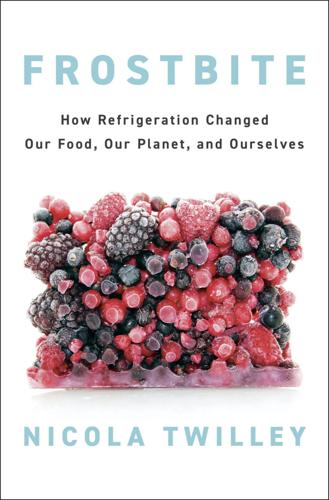
Frostbite: How Refrigeration Changed Our Food, Our Planet, and Ourselves
by
Nicola Twilley
Published 24 Jun 2024
” * * * — Bekvalac’s bones tell us that industrialization damaged human health; Craig’s calculations reveal that refrigeration helped ameliorate that: both reveal that the timespan under examination matters. The individuals whose skeletons are stored at the Museum of London all died before 1852. By then, Edward Jenner had invented the smallpox vaccine (1796), and John Snow had traced a cholera outbreak to a contaminated water pump (1849). But the City’s cemeteries closed before the Great Stink of 1858, which prompted the construction of London’s pioneering sewage system, and well before the first shipment of frozen beef and mutton arrived in the UK from Australia in 1879. Alexander Fleming wouldn’t discover penicillin until later yet, in 1928.
…
One cold-storage operator, “carried away by admiration, called her ‘the voice of conscience in the refrigerating world.’ ” It should come as no surprise that at the Cold Storage Banquet in 1911 the keynote speaker was none other than Dr. M. E. Pennington, the United States’ “supreme authority on matters connected with the refrigeration of perishable foodstuffs.” In an era where refrigeration’s detractors blamed the dead-meat trade for everything from cholera to cancer, while cold-storage men advertised their product as “better than fresh,” Pennington refused to become an evangelist for either side. “Storage makes nothing better, at least in the line of poultry,” she admitted—but she was quick to add that, if handled properly, cooled quickly, and kept at the right temperature and humidity, a “frozen and transported chicken is as near excellence as the vast majority of us Americans can ever attain if we persist in demanding broilers in midwinter and roasters in the summer and early autumn.”
…
“It wasn’t totally unreasonable.” During that time, Pratt studied more than a hundred different foods, frozen and fresh, testing and monitoring temperature and humidity levels, mapping airflow in the container, analyzing the respiration rates of fruit and vegetables, tracking fungus growth, and more, in order to arrive at a set of best practices for shipping different perishable commodities. Pratt and her colleagues were the first to map the airflow in a reefer and the first to figure out the maximum density of produce that could be stuffed in before circulation started to suffer, leading to uneven temperatures.

Enlightenment Now: The Case for Reason, Science, Humanism, and Progress
by
Steven Pinker
Published 13 Feb 2018
Handwashing, midwifery, mosquito control, and especially the protection of drinking water by public sewerage and chlorinated tap water would come to save billions of lives. Before the 20th century, cities were piled high in excrement, their rivers and lakes viscous with waste, and their residents drinking and washing their clothes in putrid brown liquid.3 Epidemics were blamed on miasmas—foul-smelling air—until John Snow (1813–1858), the first epidemiologist, determined that cholera-stricken Londoners got their water from an intake pipe that was downstream from an outflow of sewage. Doctors themselves used to be a major health hazard as they went from autopsy to examining room in black coats encrusted with dried blood and pus, probed their patients’ wounds with unwashed hands, and sewed them up with sutures they kept in their buttonholes, until Ignaz Semmelweis (1818–1865) and Joseph Lister (1827–1912) got them to sterilize their hands and equipment.
…
Nor the powerful: various British monarchs were cut down by dysentery, smallpox, pneumonia, typhoid, tuberculosis, and malaria. American presidents, too, were vulnerable: William Henry Harrison fell ill shortly after his inauguration in 1841 and died of septic shock thirty-one days later, and James Polk succumbed to cholera three months after leaving office in 1849. As recently as 1924, the sixteen-year-old son of a sitting president, Calvin Coolidge Jr., died of an infected blister he got while playing tennis. Ever-creative Homo sapiens had long fought back against disease with quackery such as prayer, sacrifice, bloodletting, cupping, toxic metals, homeopathy, and squeezing a hen to death against an infected body part.
…
But David Deutsch points out that those civilizations could have thwarted the fatal blows had they had better agricultural, medical, or military technology: Before our ancestors learned how to make fire artificially (and many times since then too), people must have died of exposure literally on top of the means of making the fires that would have saved their lives, because they did not know how. In a parochial sense, the weather killed them; but the deeper explanation is lack of knowledge. Many of the hundreds of millions of victims of cholera throughout history must have died within sight of the hearths that could have boiled their drinking water and saved their lives; but, again, they did not know that. Quite generally, the distinction between a “natural” disaster and one brought about by ignorance is parochial. Prior to every natural disaster that people once used to think of as “just happening,” or being ordained by gods, we now see many options that the people affected failed to take—or, rather, to create.
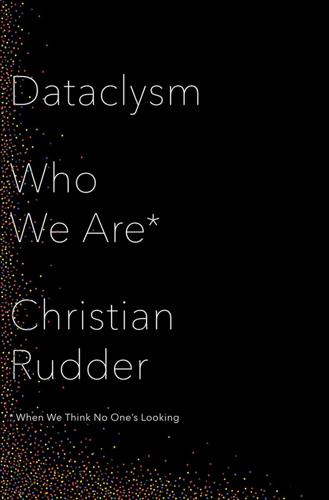
Dataclysm: Who We Are (When We Think No One's Looking)
by
Christian Rudder
Published 8 Sep 2014
An unnamed abolitionist’s Description of a Slave Ship, showing the human cargo packed in inhuman closeness, an image that is still the iconic shorthand for the horrors of the Middle Passage. Dr. John Snow’s plot of a cholera outbreak in 1854 pinpointed the source of the disease for the first time. Tufte pulls lessons from these and makes them useful in a modern context, asking the data designer to maximize the data-to-ink ratio. Give every chart a clear story to tell. Use color to call out data’s red heart. Use white as dimension, not dead space. I’ve tried my best. Among the many maps and charts and tables in Tufte’s books, there’s a two-page examination of the Vietnam Memorial, not as stonework or as history, but as an artifact of data design.
…
My version was inspired by one made by IDV Solutions and posted by “john.nelson” on their UX blog: uxblog.idvsolutions.com/2011/07/chalkboard-maps-united-states-of.html. venue of longing is Walmart This is the same Voronoi plot, but combined with the by-state data from Dorothy Gambrell’s “Missed Connections” map, published in Psychology Today. The cells are coded by the top missed-connection result for the state where their seed lies. You can see the original map here: psychologytoday.com/blog/brainstorm/201302/missed-connections-0. I transported the data to the previous Voronoi partition in order to maintain consistency with the previous Craigslist map. Years ago, an enterprising hacker The hacker is Pete Warden, and his post is “How to Split Up the US,” which you can find here: petewarden.com/2010/02/06/how-to-split-up-the-us/.
…
Below is a plot of gay porn downloads, by IP address, taken from the largest torrent network, Pirate Bay. This map, too, is without any pre-drawn guides, and as opposed to the OkCupid plot above, its theme is solidarity: from Edmonton and Calgary down to Monterrey and Chihuahua, this is just where people live. There are as many ways to draw maps as there are sources of data. We’ve been slowly working our way up off the page, building a psychological dimension—how we feel about the flag, porn—on top of our maps. But it’s possible to go the other way: data can tie abstractions back down to earth. Take cleanliness, again via OkCupid.
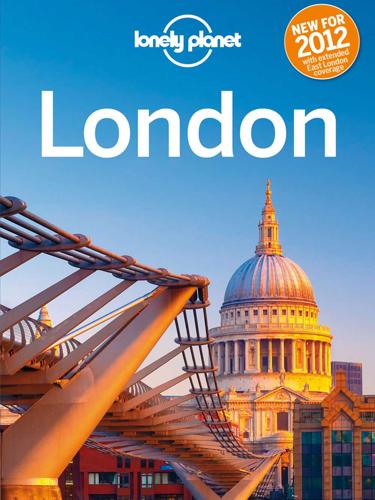
Lonely Planet London
by
Lonely Planet
Published 22 Apr 2012
It gets a surge at 11pm when punters from the Profile Bar above move en masse for a boogie downstairs. Barcode Gay Offline map Google map (www.bar-code.co.uk; 3-4 Archer St W1; 4pm-1am Mon-Sat, to 11pm Sun; Piccadilly Circus) Tucked away down a Soho side street, this fun gay bar is full of a diverse range of people enjoying a pint or two and some evening cruising. There are frequent club nights in the downstairs area, including the popular Industri on Wednesday (Click here) and Comedy Camp Offline map Google map (Click here) on Tuesdays. John Snow Pub Offline map Google map (39 Broadwick St W1; Oxford Circus or Piccadilly Circus) This used to be one of Soho’s most popular pubs, but after throwing out a gay couple for kissing in April 2011, its popularity nose-dived.
…
Museums with special nocturnal events or late-night opening hours include the following: Sir John Soane’s Museum Offline map Google map (Click here) Evenings of the first Tuesday of each month are illuminated by candlelight, so the atmosphere is even more magical (very popular, so there are always long queues). National Portrait Gallery Offline map Google map (Click here) Open till 9pm Thursday and Friday. Tate Modern Offline map Google map (Click here) Open till 10pm Friday and Saturday. Tate Britain Offline map Google map (Click here) Open till 10pm on first Friday of the month. British Museum Offline map Google map (Click here) Open till 8.30pm on Friday. Science Museum Offline map Google map (Click here) Open till 7pm during school holidays.
…
West End: Central Top Sights Piccadilly CircusF6 Soho G3 Sights 1 ChinatownH4 Eros StatueF6 3 London Trocadero F5 4 Photographer's GalleryC2 5 Regent Street D5 6 Soho Square G1 7 St James's Piccadilly E7 Eating 5th View (see 88) 8 Andrew Edmunds E3 9 Arbutus G2 10 Bar Shu H3 11 Barrafina G2 12 Berwick St MarketF3 13 Bocca di Lupo F4 14 Dean Street Townhouse G3 15 Fernandez & Wells E3 16 Gay Hussar G1 17 HIX E5 18 Koya G3 19 Kulu Kulu D5 20Mildred'sE3 21 Milk Bar G2 22 Momo C5 23Mooli'sG3 24 New World H4 25 Nordic Bakery D5 Polpetto (see 43) 26 Princi F2 27 Sakura A4 Spice Market (see 94) 28 Spuntino F4 29 Star Café F1 30 Veeraswamy D6 31 Wild Honey A4 32YauatchaE3 Drinking & Nightlife 33 Academy H3 34 Barcode F5 35 Boheme Bar & Kitchen H3 36 Candy Bar F2 37 Coach & Horses H3 38 DiuG2 39 Duke of Wellington F4 40 Edge G1 41 Endurance E3 42Experimental Cocktail ClubH4 43 French House G3 44 Friendly Society F4 45 John Snow D3 46 Ku Bar Frith St G3 Lo Profile (see 49) 47 Madame Jo Jo's F4 48 Milk & Honey E3 49 Profile F3 50 Village F4 51 White Horse F4 52 Yard F4 Entertainment 53 Amused Moose Soho H2 54 Borderline H1 Comedy Camp (see 34) 55Comedy StoreG6 56 Curzon Soho H3 57 Pizza Express Jazz Club F1 58 Prince Charles H4 59 Ronnie Scott's G3 60 Soho Theatre F2 Shopping 61 Abercrombie & Fitch C6 62 Agent Provocateur E2 63 Algerian Coffee Stores G3 64 Apple Store B2 65 Aquascutum D6 66 Beyond The Valley D3 67 Foyle's H2 Grant & Cutler (see 67) 68 Hamleys C4 69Harold Moore's RecordsD2 70 Joy E1 71 Liberty C3 72 Marshmallow Mountain C4 73 Minamoto Kitchoan D7 74 Miss SelfridgeB1 75 Phonica D2 76 Prowler F4 Ray's Jazz (see 67) 77 Reckless Records E2 78 ReissC1 79 Rigby & Peller B4 80 Sister Ray E2 81 Sounds of the Universe E2 82 Sting E6 83 Topshop & Topman B1 84 Urban Outfitters B1 85 Vintage House G3 86 Vivienne Westwood A5 87WarehouseB2 88 Waterstone's E7 Sleeping 89Brown'sB7 Dean Street Townhouse (see 14) 90 HaymarketH7 91Hazlitt'sG2 92Number 5 Maddox StreetB3 93 Soho HotelF2 94WG5 95YHA Oxford StD2 West End: Bloomsbury Top Sights British Museum D5 Wellcome CollectionB2 Sights 1 Bedford Square C5 2 Brunswick Centre E3 3 BT TowerA4 4 Gordon Square C3 5 New London ArchitectureC5 6 Petrie Museum of Egyptian ArchaeologyB4 7 Pollock's Toy Museum B5 8 Russell Square D4 9 St George's BloomsburyE6 Eating 10 Abeno E6 11 Busaba Eathai B5 12 Chilli Cool D2 13Diwana Bhel Poori HouseA2 14 Fino B5 15 Hakkasan C6 16 Hummus Bros E5 17 North Sea Fish Restaurant D2 18 Rasa Samudra B6 19 Ravi ShankarA2 20 Roka B5 Drinking & Nightlife 21 Bradley's Spanish Bar B6 22 Lord John Russell D2 23 Museum Tavern D6 24Newman ArmsB6 25Queen's LarderE4 26 Tempus Bar D4 Entertainment 27 100 Club B7 28 Place C2 Shopping 29 Bang Bang Exchange B5 30 Gay's the Word D2 31 Gosh!
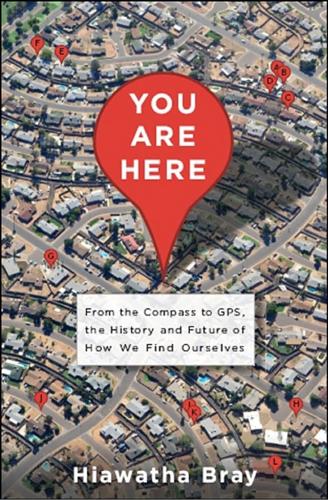
You Are Here: From the Compass to GPS, the History and Future of How We Find Ourselves
by
Hiawatha Bray
Published 31 Mar 2014
As their databases became deeper and more geographically precise, cartographers painted layers of valuable georeferenced information onto more and more maps. German mapmaker August Crome created an economic map of Europe in the late eighteenth century showing where key industrial commodities were produced. In 1798 a New York physician named Valentine Seaman created possibly the first map to depict the incidence and spread of a disease—in this case yellow fever, at the time rampant in Lower Manhattan. In 1801 the first major map of the geology of England and Wales was published, and in 1854 British physician John Snow gained national renown for his map of a cholera outbreak in London. By mapping the homes of the victims and the nearby sources of drinking water, Snow proved that the disease had been spread by the water from a particular public well, which had been contaminated with human waste.1 No one questioned the value of thematic maps, only their cost.
…
At an international conference of geographers held in Bern, Switzerland, Penck proposed the “International Map of the World,” a project to map the entire globe using standardized symbols, colors, and, above all, scale—the ratio of a distance on the map to the corresponding distance on land or sea. For instance, given a map with a scale of 1:24,000, 1 inch on the map equals 24,000 inches, or 2,000 feet, in the real world. Such a map would show a vast amount of detail. However, given the tools and techniques of the era, it was quite impractical. Penck suggested a more manageable scale of 1:1,000,000. On such a map, 1 inch equals 1 million inches, or 15.8 miles, on the ground. Geographers dropped Penck’s rather grandiose name and took to calling it the Million Map. Despite the plan’s obvious appeal, it languished for years.
…
In 2012 the company estimated that 800,000 websites make use of the Google Maps API.3 And although most people don’t know an API from a chimpanzee, they certainly noticed the excellent maps that appeared on so many of their favorite sites, each prominently displaying the Google brand. It was advertising at its most effective. Generally, you saw a MapQuest map only when you visited the MapQuest website. Google’s maps were everywhere. Little by little, Google Maps gained market share from MapQuest. As of April 2012 Google Maps was America’s leading travel website, with 79 million visitors that month.
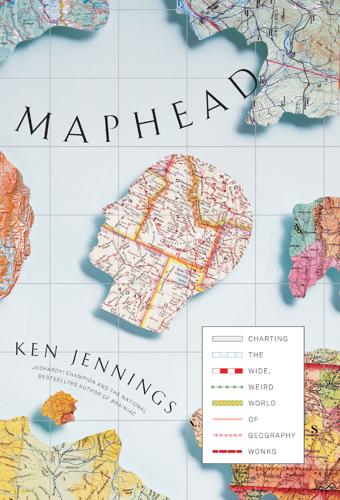
Maphead: Charting the Wide, Weird World of Geography Wonks
by
Ken Jennings
Published 19 Sep 2011
But there was also the 1854 cholera outbreak in London, which killed hundreds of people until a physician, John Snow, drew a map demonstrating that a single contaminated water pump was the source of the illness, thereby founding the science of epidemiology. There was the 1944 invasion at Normandy, which succeeded only because of the unheralded contribution of mapmakers who had stolen across the English Channel by night for months before D-Day and mapped the French beaches.* Even the moon landing was a product of mapping. In 1961, the United States Geological Survey founded a Branch of Astrogeology, which spent a decade painstakingly assembling moon maps to plan the Apollo missions.
…
As a species, the loss of our spatial abilities might be a tragedy, but to a map nerd, an even sadder casualty of the digital map revolution might be paper maps themselves. As I wander into downtown Seattle’s biggest map store, I notice immediately that its new location, near the tourist-packed Pike Place Market, displays fewer travel maps than the previous store did. The cabinet of USGS topographical maps on the back wall is usually left alone; hikers get the trail maps they need on their cell phones. “The map business has slowed down a lot,” the store’s co-owner tells me. She gestures vaguely to a rack of folded pocket maps. “When a new map like that came out, we used to have to order twenty, twenty-five of them, or we’d sell out.
…
It occurs to me that an adult collector then may have looked at maps with an eagerness and curiosity that only children can view maps with today: the joy of seeing an unknown part of the world for the very first time. Detail from Vermeer’s 1657 Officer and Laughing Girl. Would you care for a little painting with your map, Mr. Vermeer? Until a wider variety of maps became available in the late sixteenth century, the Cambridge study found, collectors were interested in only two kinds of maps: world maps and maps of the Holy Land. When Leonard decided to focus his collection, he chose Holy Land maps as well. His map library now holds nine hundred such maps, including at least one from every cartographer who ever charted Palestine. “Why the Holy Land?” I ask. “There was a lot of stuff that was cost-effective.

Lonely Planet London City Guide
by
Tom Masters
,
Steve Fallon
and
Vesna Maric
Published 31 Jan 2010
Often the crowds spill outside in the evenings, and daytime drinks afford good views of Berwick Street market buzz. FRENCH HOUSE Map Bar 7437 2799; 49 Dean St W1; Leicester Sq French House is Soho’s legendary boho boozer (with a good restaurant downstairs) with a history to match: this was the meeting place of the Free French Forces during WWII, and De Gaulle is said to have drunk here often, while Dylan Thomas, Peter O’Toole and Francis Bacon all frequently ended up on the wooden floors. Come here to sip on Ricard, French wine or Kronenbourg and check out the quirky locals. JOHN SNOW Map Pub 7437 1344; 39 Broadwick St W1; Oxford Circus or Piccadilly Circus This is one of Soho’s most popular pubs, as attested by the crowds inside, in winter, and outside, in spring and summer, on almost any day of the week.
…
* * * SEX & DRUGS & ROCK’N’ROLL – THE HISTORY OF SOHO Soho’s character was formed by the many waves of immigration, and residential development started in the 17th century, after the Great Fire had levelled much of the city. An influx of Greek and Huguenot refugees and, later, the 18th-century influx of Italian, Chinese and other artisans and radicals into Soho replaced the bourgeois residents, who moved out of the area and into Mayfair. During the following century Soho was no more than a slum, with cholera frequently attacking the impoverished residents. But despite its difficulties, the cosmopolitan vibe attracted writers and artists, and the overcrowded area became a centre for entertainment, with restaurants, taverns and coffee houses springing up. The 20th century was even more raucous, when a fresh wave of European immigrants settled in, making Soho a bona fide bohemian enclave for two decades after WWII.
…
Less theatrical are the self-paced audioguides available in nine languages for £4 from the information point on Water Lane. You enter the tower via the West Gate and proceed across the walkway over the dry moat between the Middle Tower and Byward Tower. The original moat was finally drained of centuries of festering sewage in the 19th century, necessitated by persistent cholera outbreaks, and a superbly manicured lawn now takes its place. Before you stands the Bell Tower, housing the curfew bells and one-time home to Thomas More. The politician and author of Utopia was imprisoned here in 1534 before his execution for refusing to recognise King Henry VIII as head of the Church of England in place of the Pope.
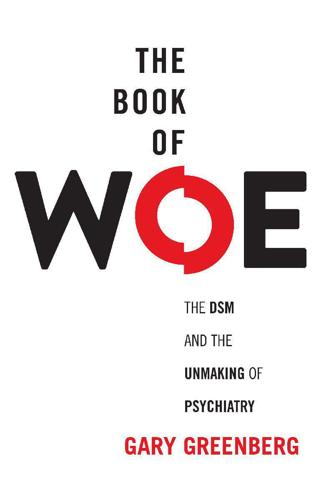
The Book of Woe: The DSM and the Unmaking of Psychiatry
by
Gary Greenberg
Published 1 May 2013
There are nine symptoms of depression, but patients need have only five in any combination to earn the diagnosis. 18. “another [of] the ten thousand”: Cartwright, “Diseases and Peculiarities,” Part 1, 336. 19. “Love is a madness”: Plato, Phaedrus, 265e. 20. Before John Snow: The best account of this famous story is probably Steven Johnson’s The Ghost Map. 21. Louis Pasteur and Robert Koch: Ullmann, “Pasteur–Koch.” 22. “blessed rage to order”: Stevens, “The Idea of Order at Key West,” The Palm at the End of the Mind. 23. Adam and Eve: Genesis 2:19–21. 24. “loose, baggy monster”: Henry James, The Tragic Muse, 4. 25.
…
Even Hippocrates and his disciples seemed to know this, as they traded mostly in empiricism—the painstaking observation of the way symptoms appeared to the doctor’s senses, the courses they took, the outcomes they reached, and the interventions that affected them. In the nineteenth century, most doctors still believed that humoral imbalances caused disease. Before John Snow20 could persuade the local government to close the infected well that caused the 1854 cholera outbreak in London, he had to overcome the common idea that the disease was carried by a miasma, bad air that could upset humoral balance. Louis Pasteur and Robert Koch21 had to work hard to convince their colleagues that germs caused diseases like rabies and anthrax, and that they (the germs, not the colleagues) could be targeted and killed.
…
But if she was weighing the implications of suggesting that doctors ignore the new criteria the APA had just spent $25 million to fashion, if she was reconsidering what her comments meant for her profession’s scientific credibility or for the reputation of the man sitting right next to her, if she was even aware that she had just admitted that the whole enterprise was a confidence game, a way to give doctors plausible scientific cover even as they continued to diagnose and medicate their patients based on their gut feelings, their whims and fancies and judgments, it wasn’t evident when she resumed her answer. “So politically it’s gotten a little messy,” she said, “but scientifically and clinically I think we remain committed to the idea that the purpose of the DSM is to provide clinicians with a road map. We’re not driving the car.” And the map doesn’t really matter, because even if clinicians load the DSM into their GPS units, they’re going to take the routes their gut tells them are best. And if a doctor decides to head for uncharted territory, to lead his colleagues into the land where irritable children suffer Bipolar Disorder, or where attraction to thirteen-year-olds is Hebephilia, or a slave’s thirst for freedom is a symptom of drapetomania, if he thinks his MD plates entitle him to take his patients off-road or the wrong way down a one-way street or, for that matter, over a cliff, well, that’s not the APA’s fault
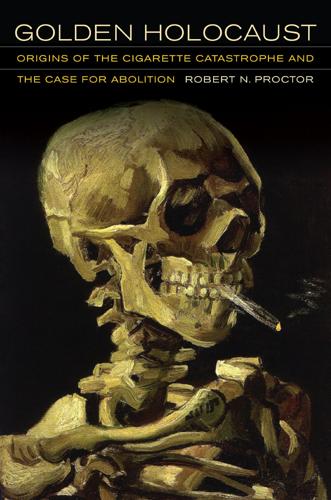
Golden Holocaust: Origins of the Cigarette Catastrophe and the Case for Abolition
by
Robert N. Proctor
Published 28 Feb 2012
In its simplest form, epidemiology involved little more than comparing two groups to see whether people who, say, drank from a particular well were more or less likely to get cholera, or whether sailors who drank citrus on a ship were more or less likely to get scurvy. Early epidemiology involved a kind of detective work: John Snow in London in 1854, for example, plotted cholera deaths on a map and discovered that deaths clustered around a water pump on Broad Street. Recognizing fouled drinking water as the cause of the disease, he famously convinced the Board of Governors of St. James Parish to remove the handle from this pump and helped put an end to the epidemic. (Steven Johnson’s Ghost Map is the best book on this.) Early tobacco epidemiologists couldn’t use maps—smoking is a mobile, multipoint-source pollutant—but they could look at whether people with lung cancer tended to share certain attributes or behaviors.
…
Elizabeth Borgwardt, Associate Professor of History, Washington University “Proctor draws masterfully from a vast archive of documents wrested from the industry, including many never before discussed, and mounts an unforgettable case about what the tobacco industry has done and what we must do about it. This is the book to help us understand what we must do to save lives.” Peter Galison, author of Einstein’s Clocks, Poincaré’s Maps “Robert Proctor draws an unvarnished conclusion: that the tobacco industry, and the men who led it, were evil, plain and simple. They knowingly sold a product that, when used as intended, killed people. And then they conspired to suppress the evidence. Not everyone will agree with Proctor, but anyone interested in the intertwined issues of science and health, and culture and commerce, needs to read this book.”
…
Early tobacco epidemiologists couldn’t use maps—smoking is a mobile, multipoint-source pollutant—but they could look at whether people with lung cancer tended to share certain attributes or behaviors. Were they male or female? Did they tend to live in towns or on farms? Was there something about their work that might explain their malady or something they were eating or inhaling? The earliest studies of this sort were “case series,” showing only that people with cancer were more likely to have been smokers. Studies along these lines were published in both Europe and America beginning in the 1920s,9 as doctors started noticing that most of their lung cancer patients had been smokers.

Pauline Frommer's London: Spend Less, See More
by
Jason Cochran
Published 5 Feb 2007
You’ll stop around 7 Berwick Street A hundred and sixty years ago, this block was a foul slum. French, Greek, and Italian immigrants fled hard times and revolutions by cramming into these tight streets, and by the 1850s, cholera was storming through the overstuffed city. An 1854 outbreak killed 500 people in barely 10 days. Common wisdom at the time held that the disease was spread through the air—a reasonable conclusion, given how terrible the sewage-smeared city smelled—but Just after you cross Ganton Street, a local anesthetist, John Snow, suswhere Broadwick Street hits Carnaby pected polluted water was the cause. Street, duck into the passageway on He got permission to inspect the public the right: pump at Broad Street, now Broadwick Street (it’s on the sidewalk in the block 6 Kingly Court Clever entrepreneurs are reviving before Berwick Street) and he found Carnaby Street’s mod appeal with this that it was being contaminated with sewage leaking from Number 40 12_308691-ch08.qxp 258 12/23/08 Chapter 8 9:18 PM Page 258 Walkabouts nearby, proving his theory.
…
Before you sit down to sort through the options that these flat-rental and homestay companies throw at you, I strongly suggest that you visit the London Underground’s website (www.tfl.gov.uk/tube/maps) and download the free “Tubes, Trams, and Trains” map. On it, all the stations and zones in both networks will appear on the same page, making it easy to know where your prospective flat will be and, if your agency hasn’t already told you, which zone it’s in. The site also has some terrific simplified bus maps that show you only the routes from the neighborhood you’ll be in (www.tfl.gov.uk/tfl/gettingaround/maps/buses). The website www.streetmap.co.uk will further help you pinpoint addresses. When you see how close to town some of those discounted flats really are, you’ll be much more likely to pounce on one.
…
In many ways, London is still a complex system of hundreds of hamlets. It’s one of the many delights that makes it so surprising. It also means it can take a lifetime to scratch its surface. Your first purchase, which can be made at any newsstand or bookstore, should be a map. Don’t bother with the simplified map your hotel might offer—the inferior maps leave off side streets. The most cherished variety is the London A-Z (www.a-zmaps.co.uk), first compiled by the indefatigable Phyllis Pearsall, who walked every mile of the city for the 1936 debut edition and commanded the resulting cartography empire until her death 60 years later.
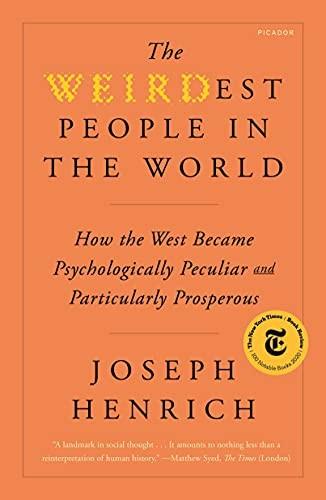
The WEIRDest People in the World: How the West Became Psychologically Peculiar and Particularly Prosperous
by
Joseph Henrich
Published 7 Sep 2020
Later, harnessing a yellow-black sludge that bubbled up from the ground (petroleum), travel became even faster, easier, and safer until people were jetting through the sky at 30,000 feet in aluminum tubes while nibbling on honey-roasted peanuts. People also figured out how to send their voices through metal wires and eventually through the air on invisible waves. Medical detectives mapped deaths to isolate public health threats, like cholera from contaminated water pumps, and physicians figured out how to use weakened or dead pathogens to immunize babies against the deadly plagues that had decimated urban communities around the globe for eons. The economic, political, and military power this revolution gave Europeans energized the spread of global commerce and fueled the diffusion of European laws, schools, religions, and political institutions.
…
Quantitative historical analyses uncover a single dimension of complexity that structures global variation in human social organization. Proceedings of the National Academy of Sciences 115 (2), e144–e151. Turner, G. (1859). Nineteen Years in Polynesia: Missionary Life, Travels, and Researches in the Islands of the Pacific. London: John Snow, Pasternoster Row. Tuzin, D. (1976). The Ilahita Arapesh: Dimensions of Unity. Berkeley: University of California Press. Tuzin, D. (2001). Social Complexity in the Making: A Case Study Among the Arapesh of New Guinea. London: Routledge. Ubl, K. (2008). Inzestverbot und Gesetzgebung. Die Konstruktion eines Verbrechens, 300–1100.
…
Figure 5.3 shows the extent of the Carolingian Empire in 814, the year Charlemagne died. FIGURE 5.3. This map shows the boundaries of the Carolingian Empire in 814 CE and the territories claimed by the Western and Eastern Churches during the Great Schism (1054). The map also shows the lands under the Celtic Church and those controlled by Islamic powers. After roughly 1500, the European Marriage Pattern could be firmly documented in many of the regions that are interior to the dashed lines. For reference, the map marks the contemporary borders of modern European nations.55 Carolingian support for the Church’s MFP reshaped European populations in ways that opened the door to new forms of organization and production.
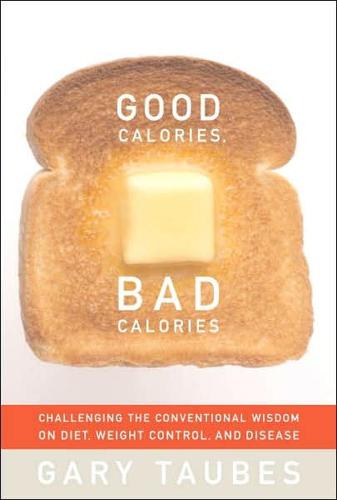
Good Calories, Bad Calories: Challenging the Conventional Wisdom on Diet, Weight Control, and Disease
by
Gary Taubes
Published 25 Sep 2007
The science of epidemiology evolved to make sense of infectious diseases, not common chronic diseases like heart disease. Though the tools of epidemiology—comparisons of populations with and without the disease—had proved effective in establishing that a disease such as cholera is caused by the presence of micro-organisms in contaminated water, as the British physician John Snow demonstrated in 1854, it is a much more complicated endeavor to employ those same tools to elucidate the subtler causes of chronic disease. They can certainly contribute to the case against the most conspicuous determinants of noninfectious diseases—that cigarettes cause lung cancer, for example.
…
Scott, E. M., and I. V. Griffith. 1957. “Diabetes Mellitus in Eskimos.” Metabolism. July; 6(4):320–25. Scrimshaw, N. S., and W. Dietz. 1995. “Potential Advantages and Disadvantages of Human Obesity.” In de Garine and Pollock, eds., 1995, 147–62. Sears, B., and B. Lawren. 1995. The Zone: A Dietary Road Map. New York: HarperCollins. Seftel, H. C., K. J. Keeley, A. R. Walker, J. J. Theron, and D. Delange. 1965. “Coronary Heart Disease in Aged South African Bantu.” Geriatrics. March; 20:194–205. Segal, K. R., and F. X. Pi-Sunyer. 1989. “Exercise and Obesity.” Medical Clinics of North America. Jan.; 73(1):217–36.